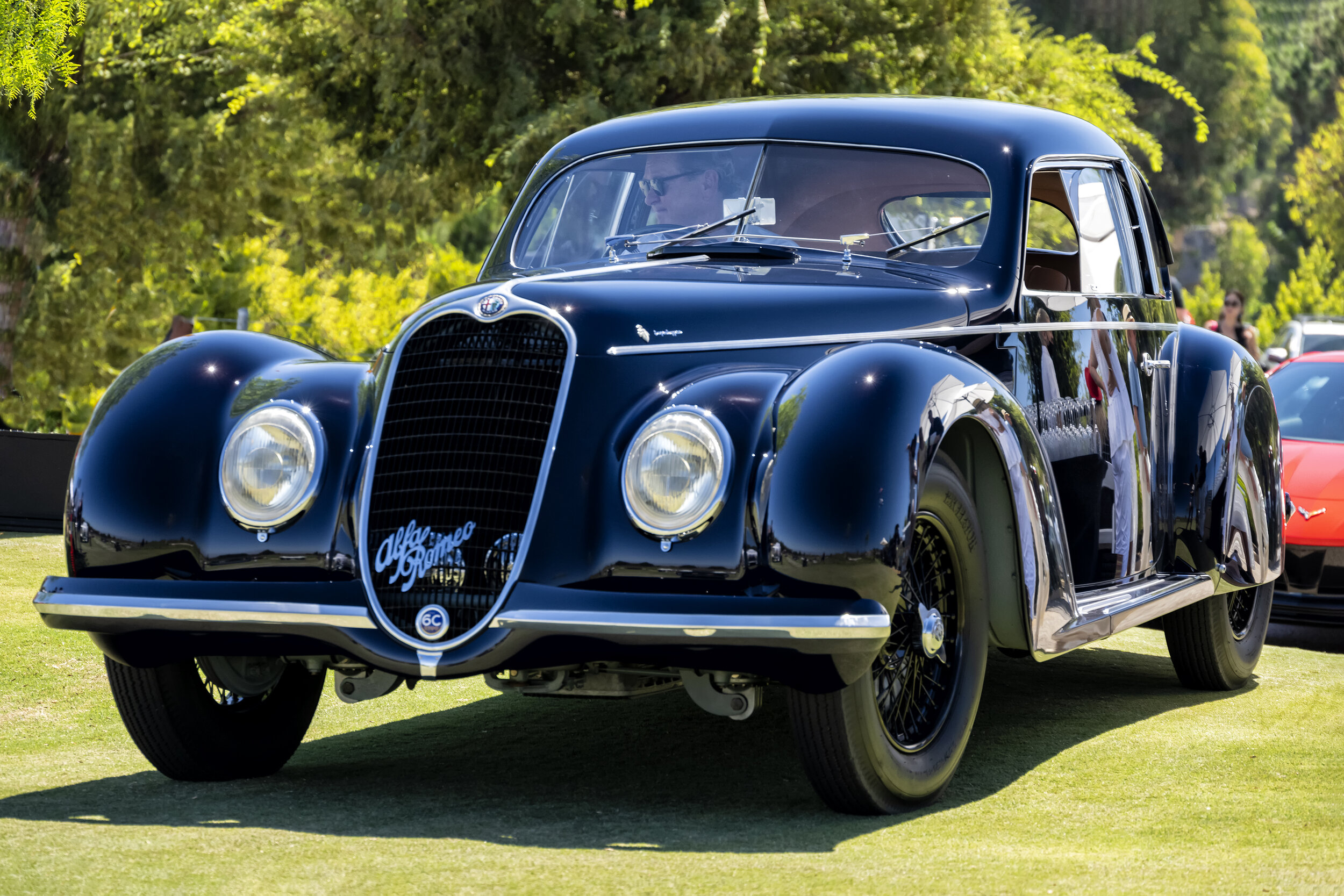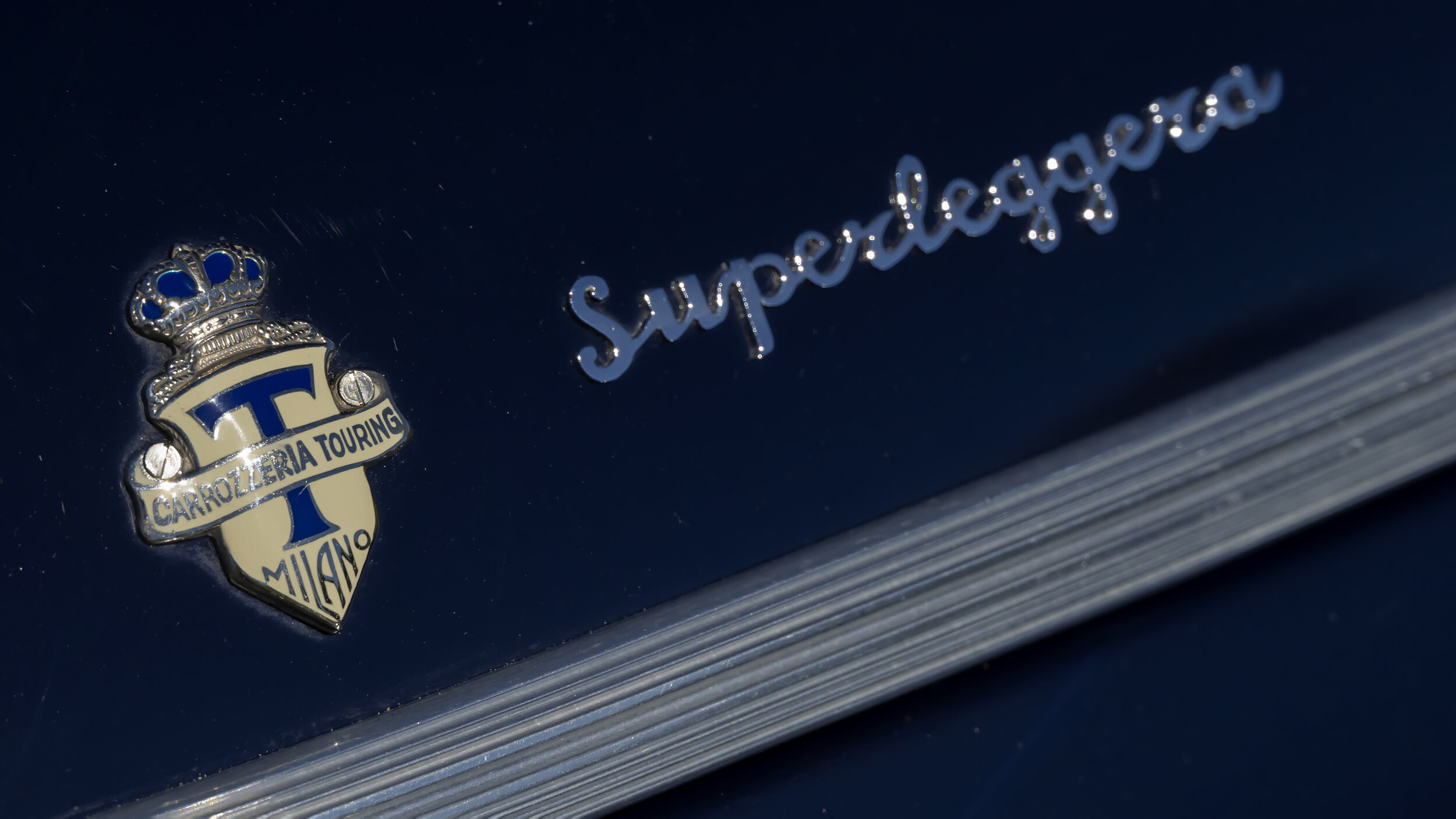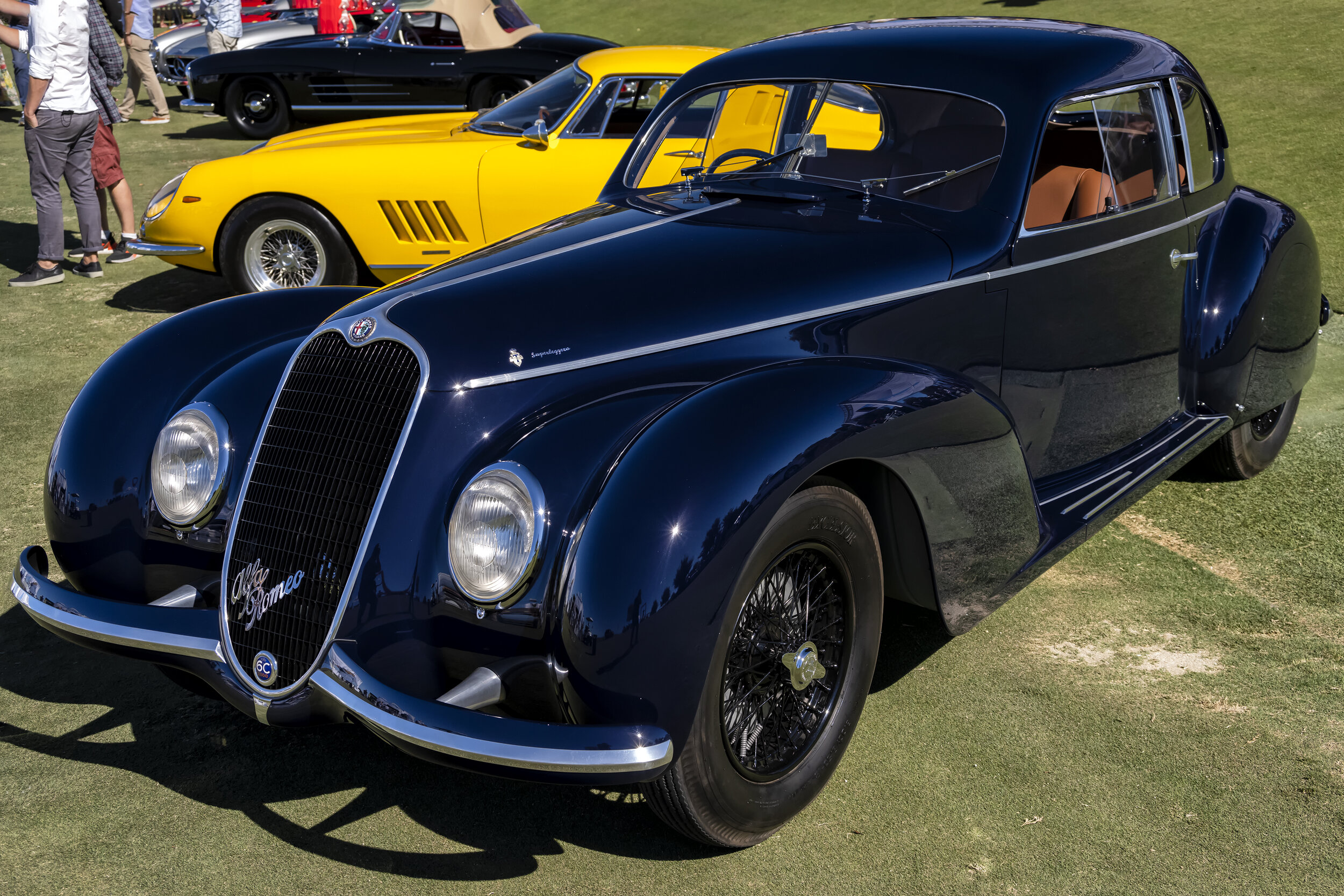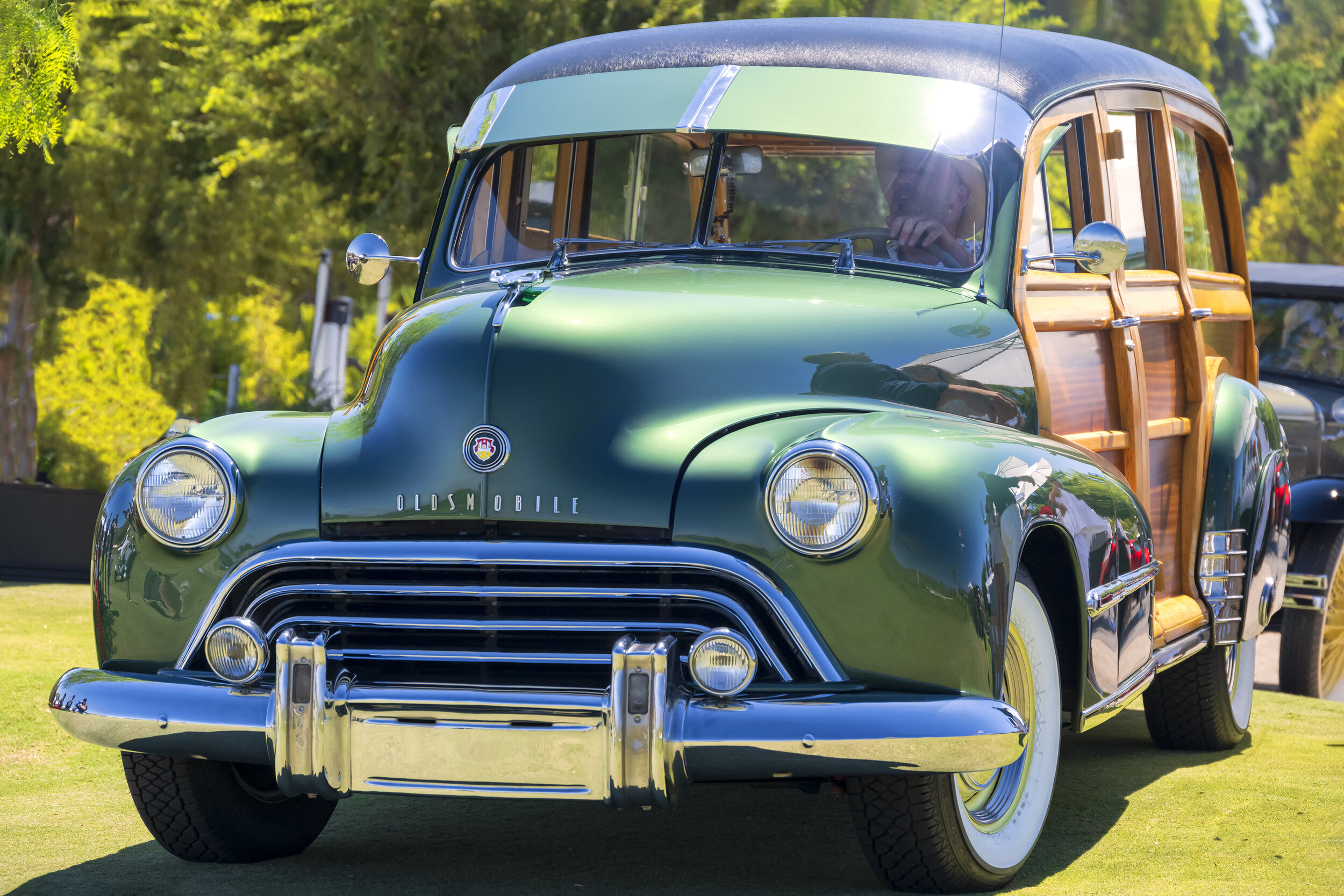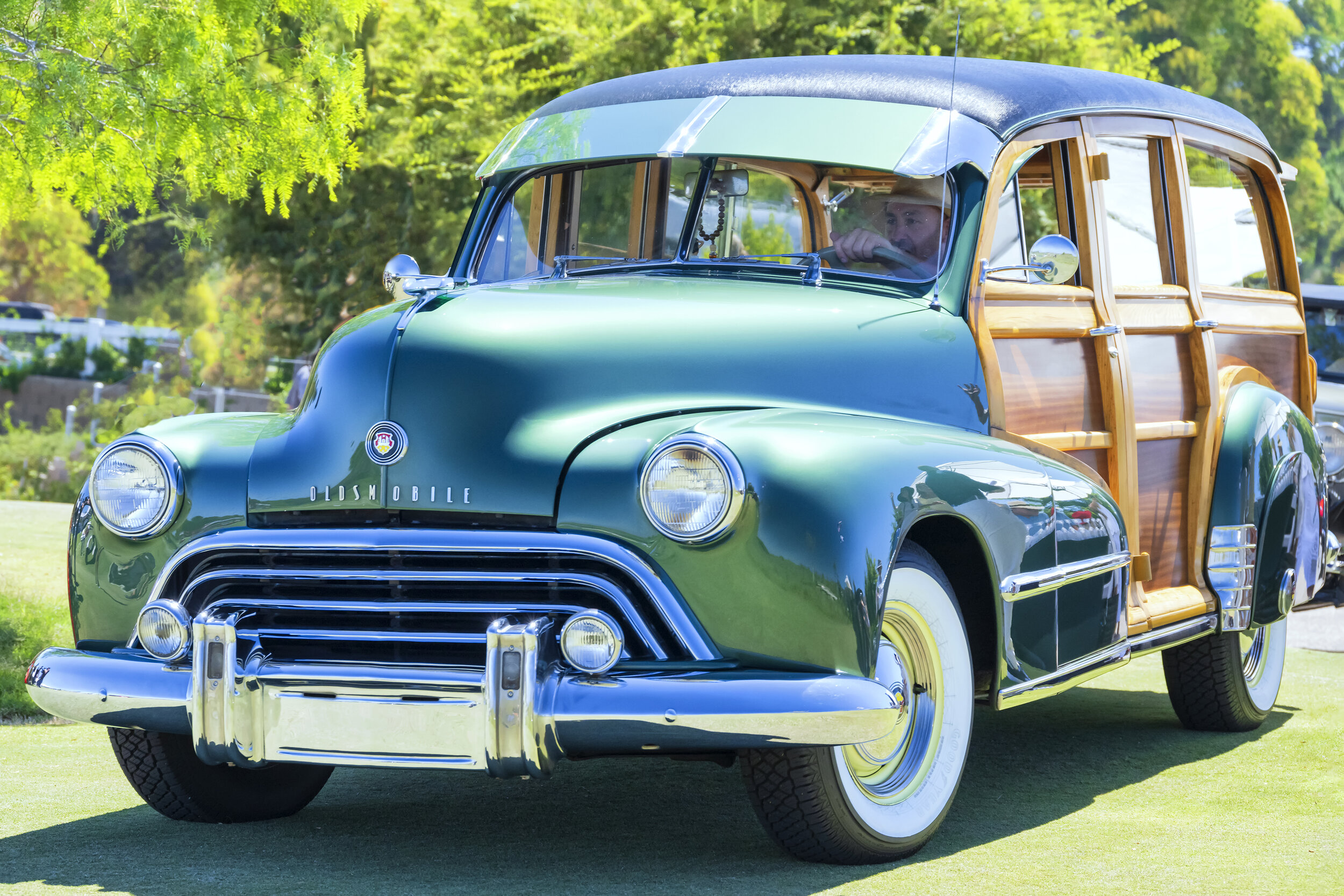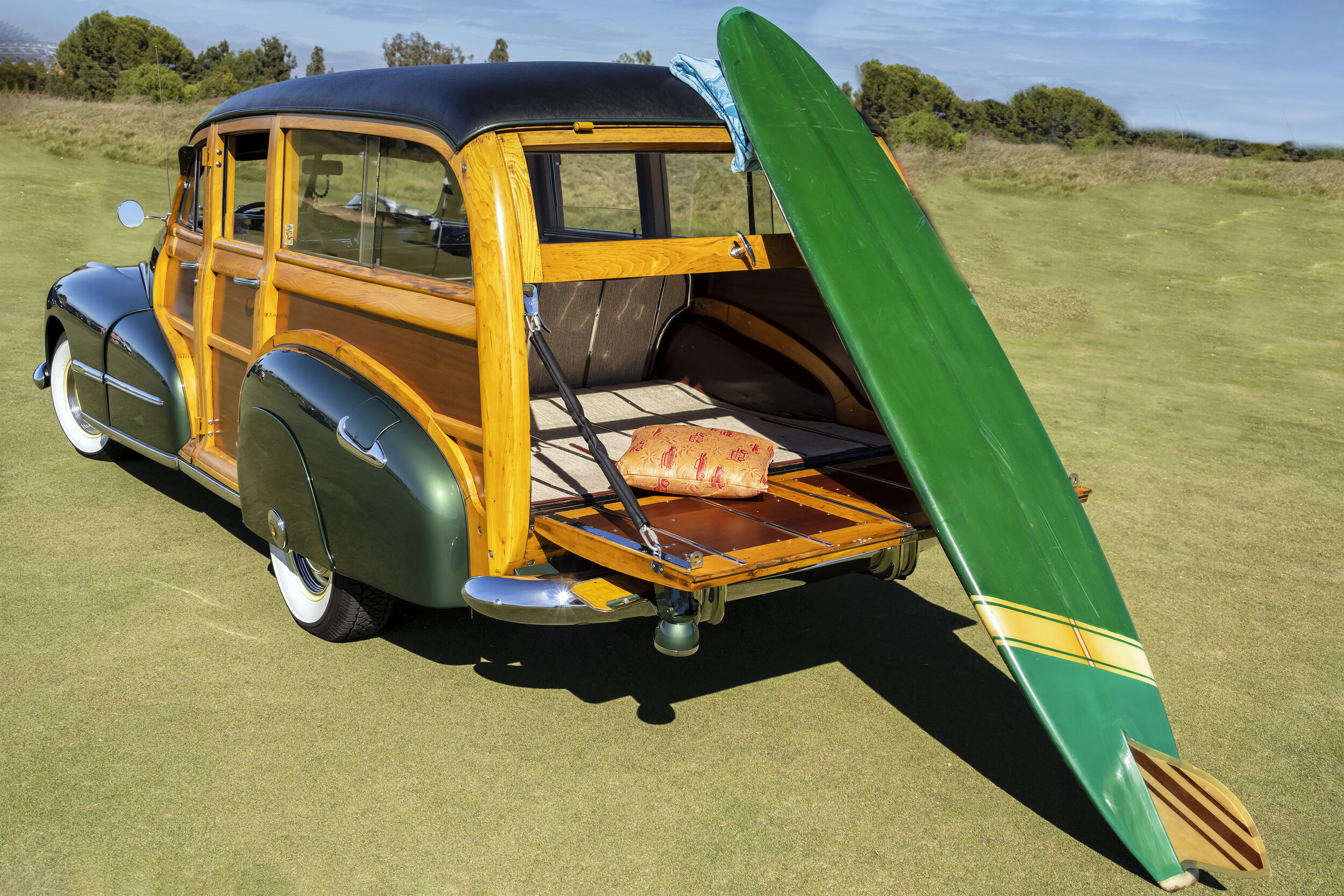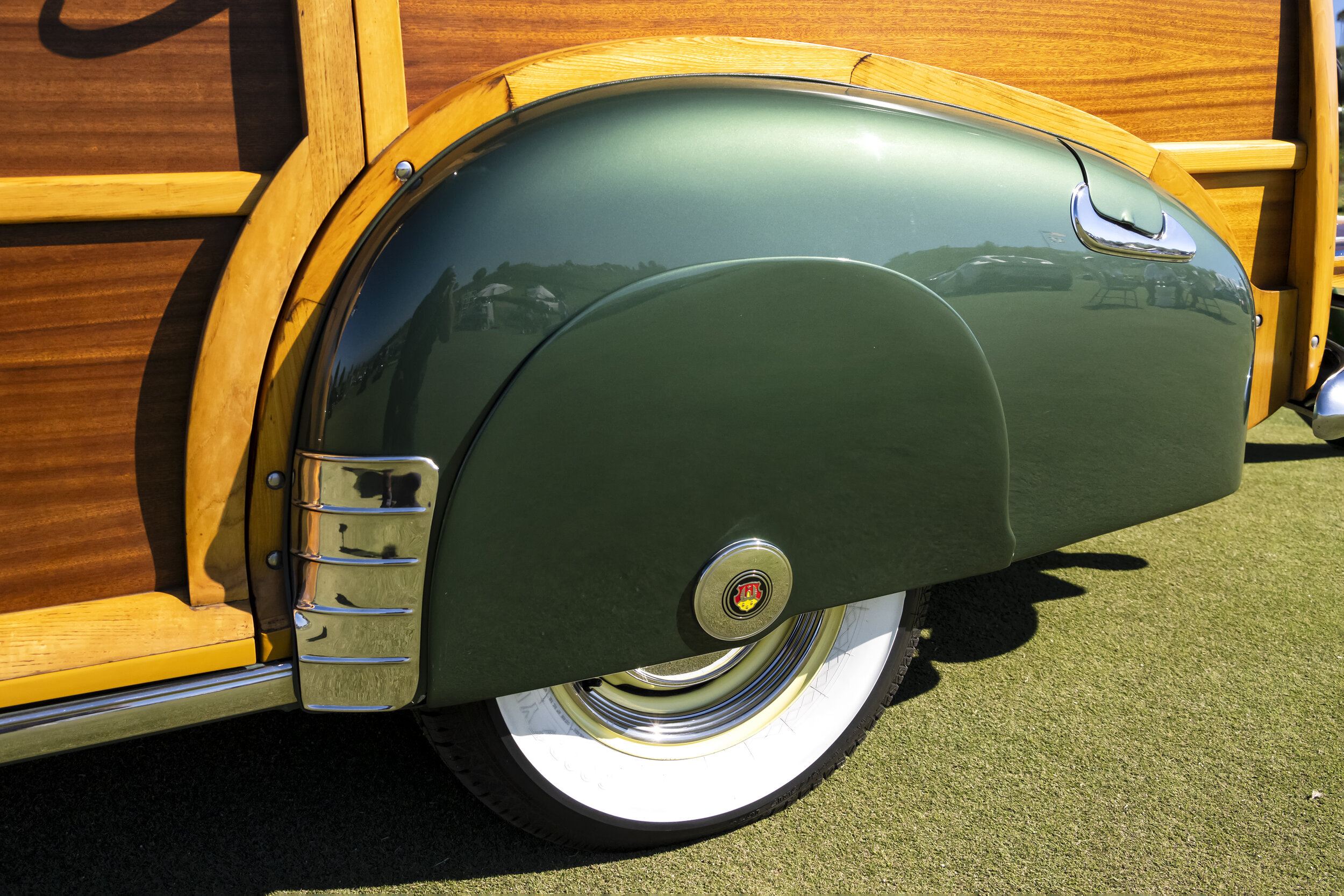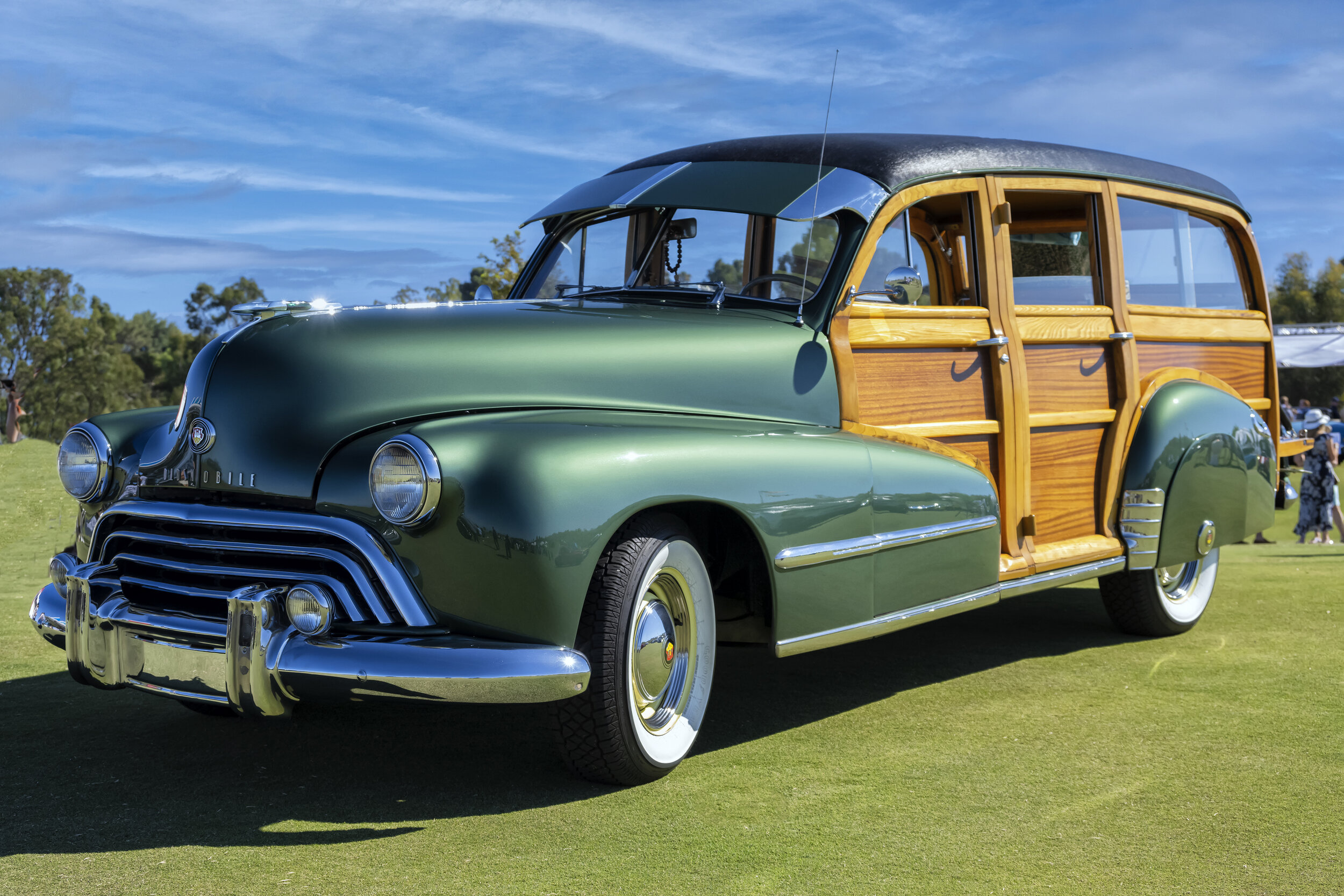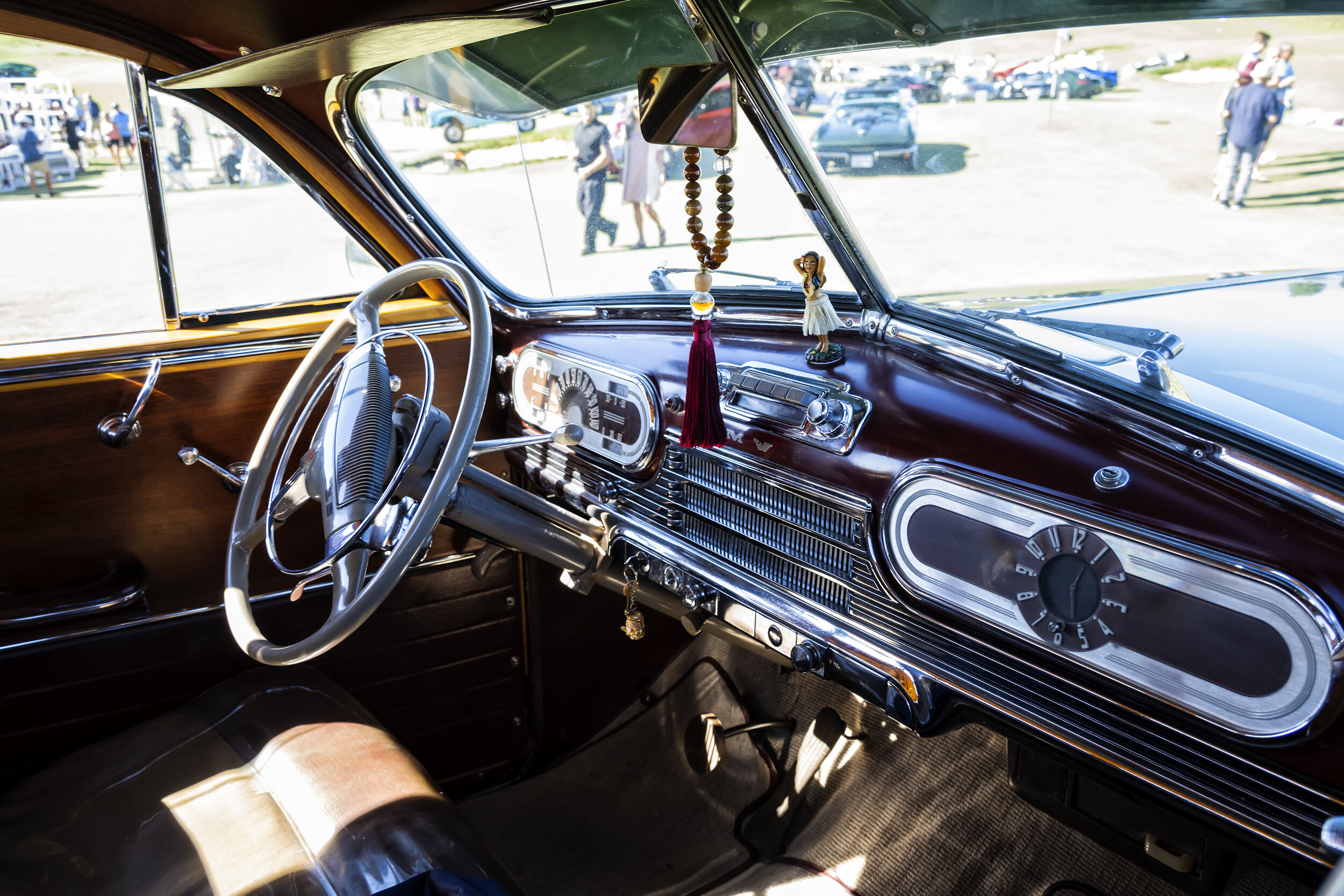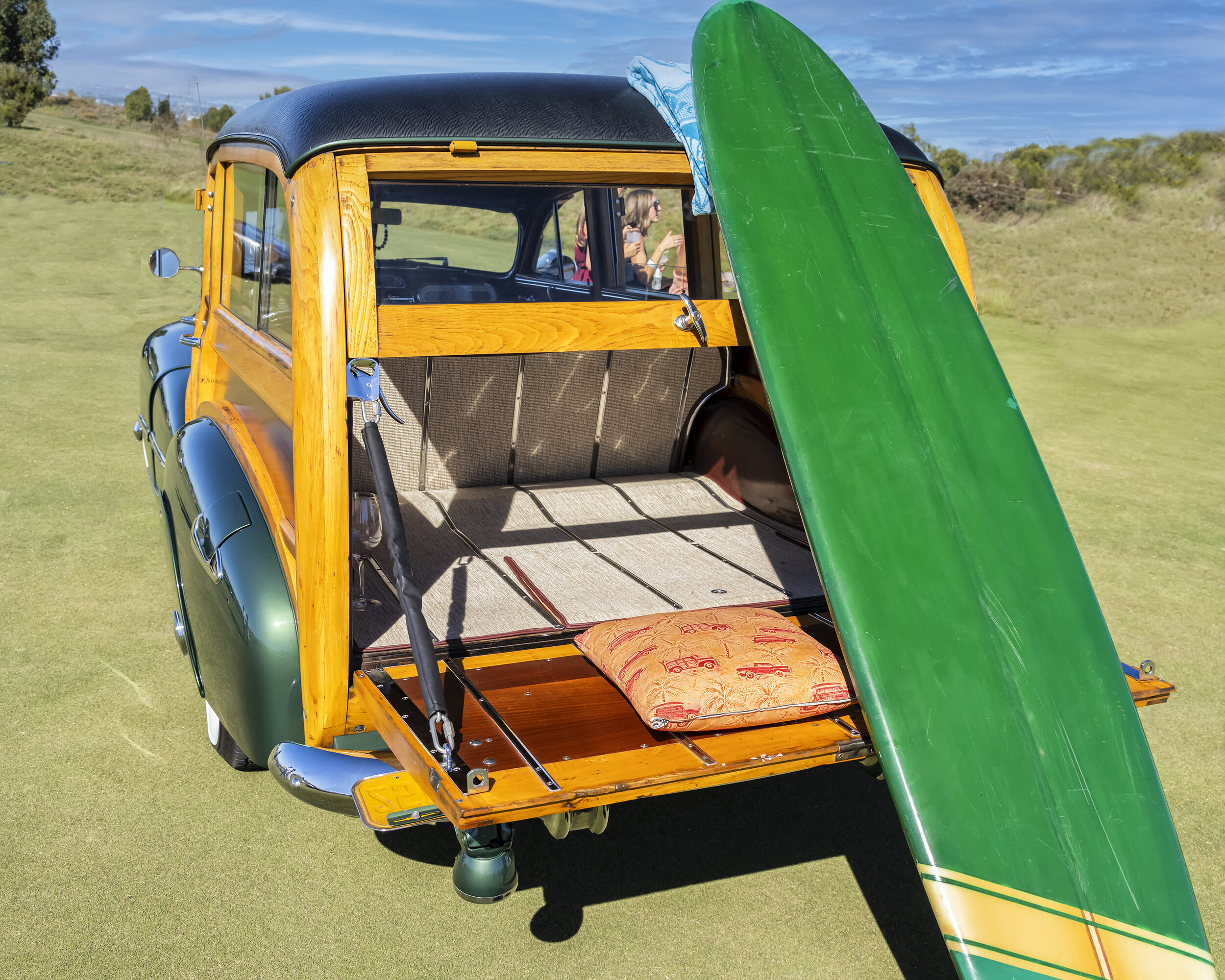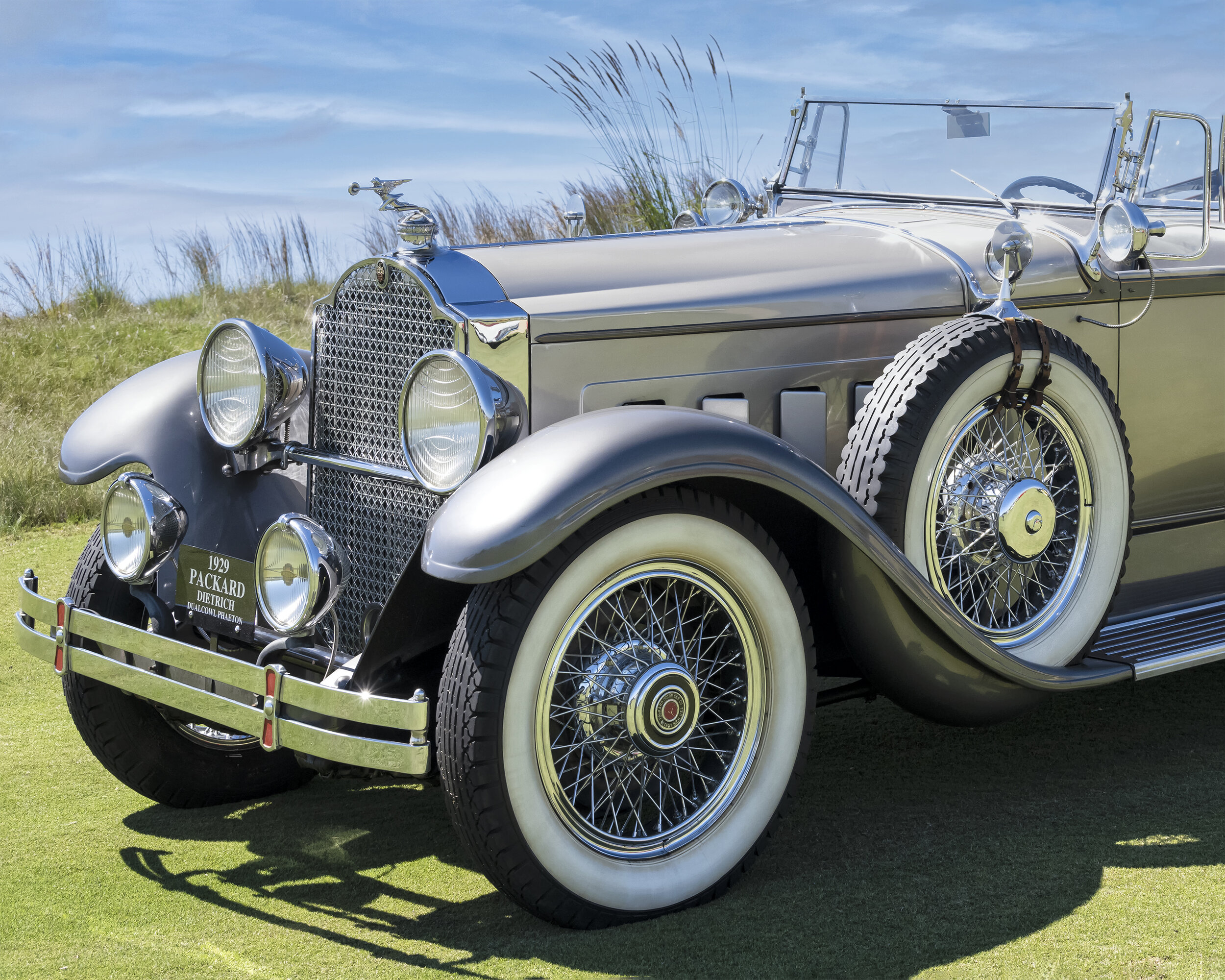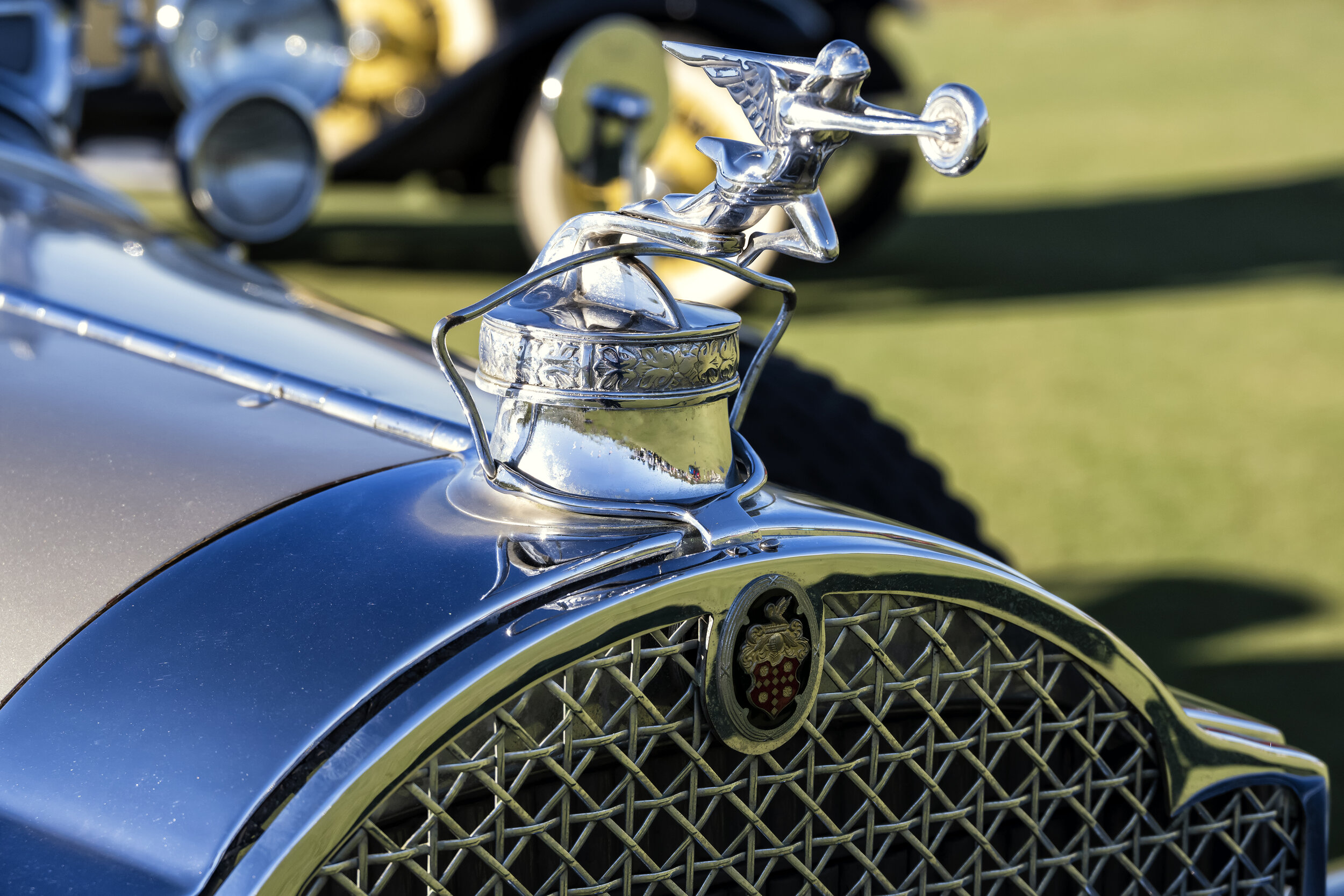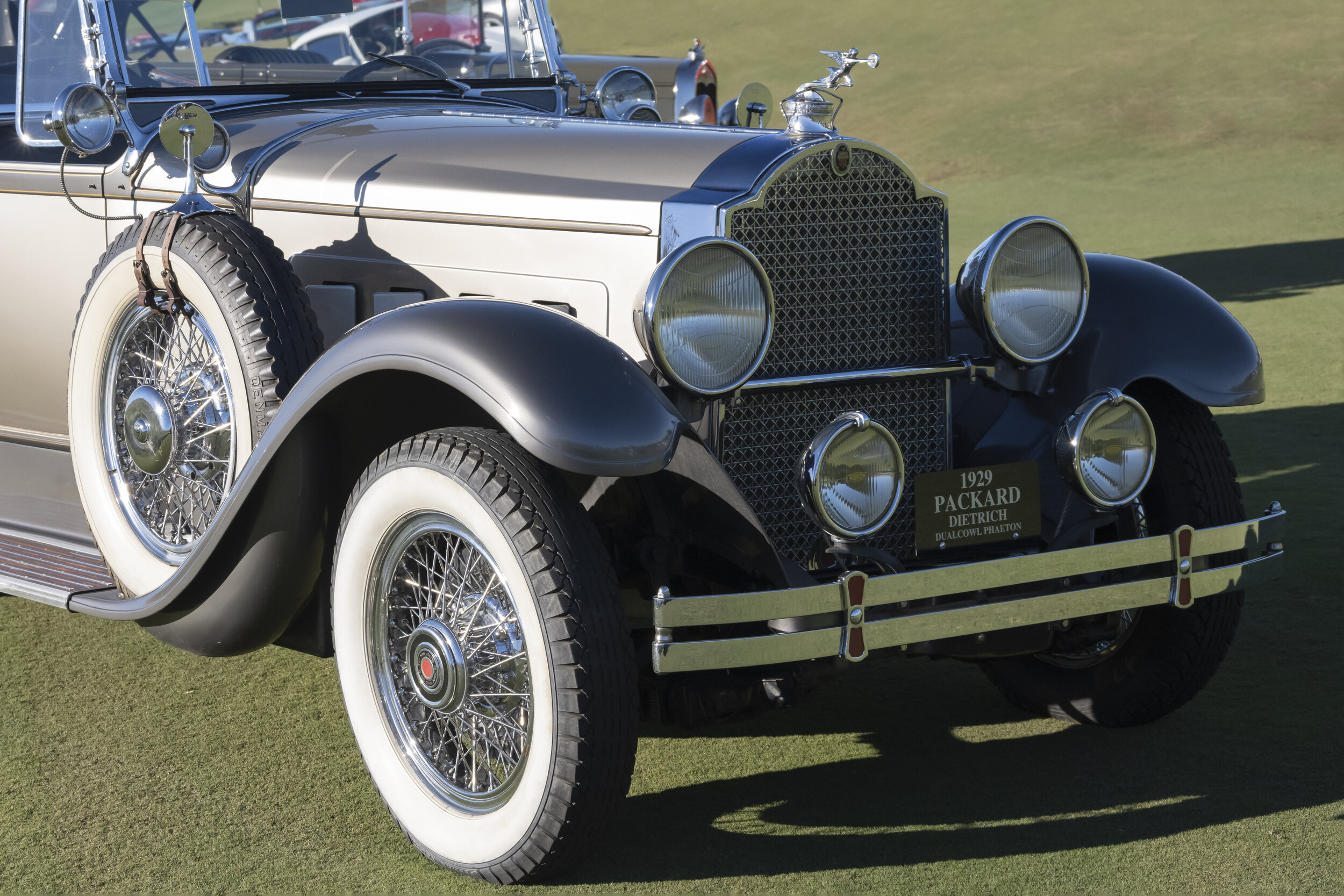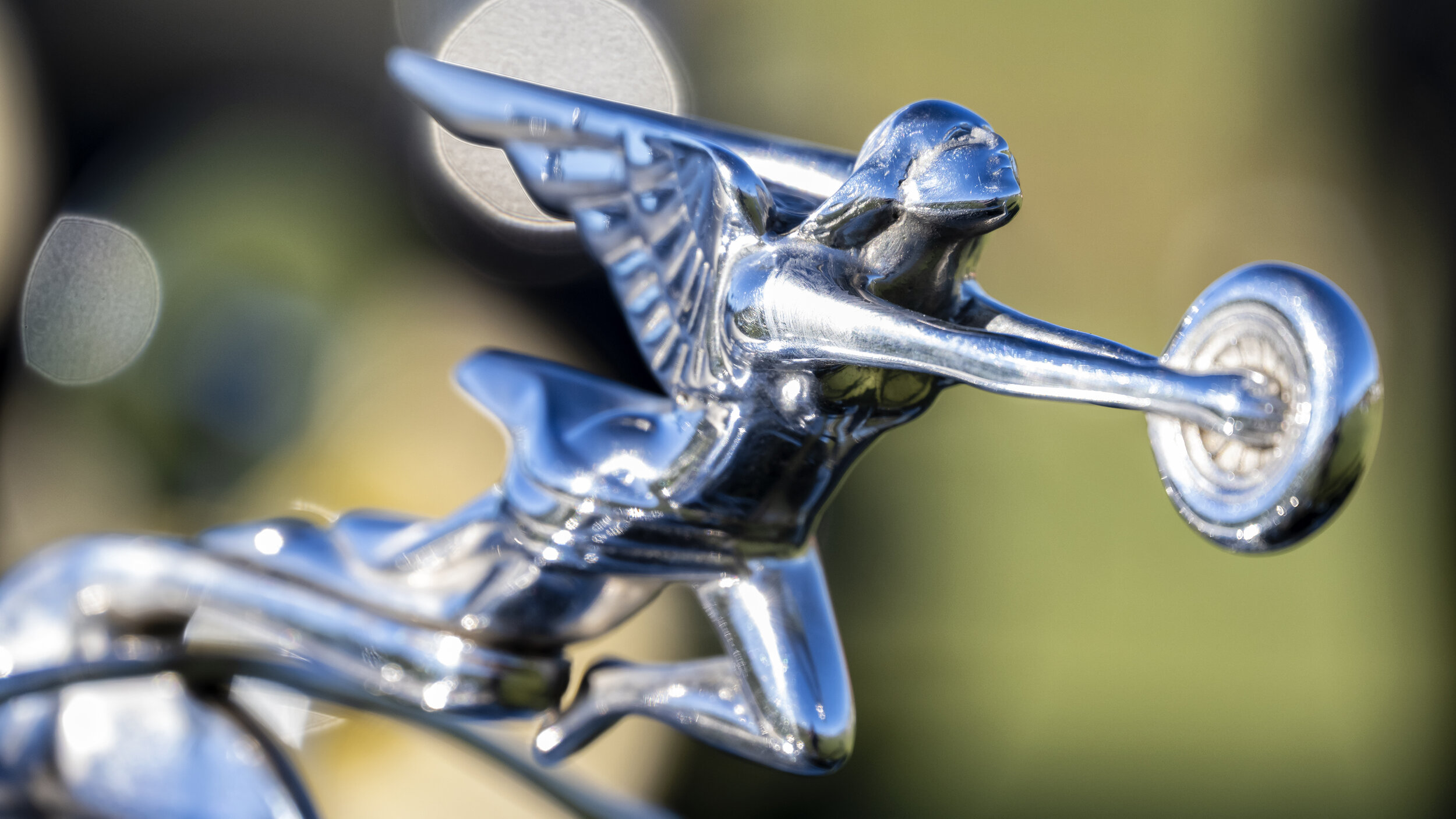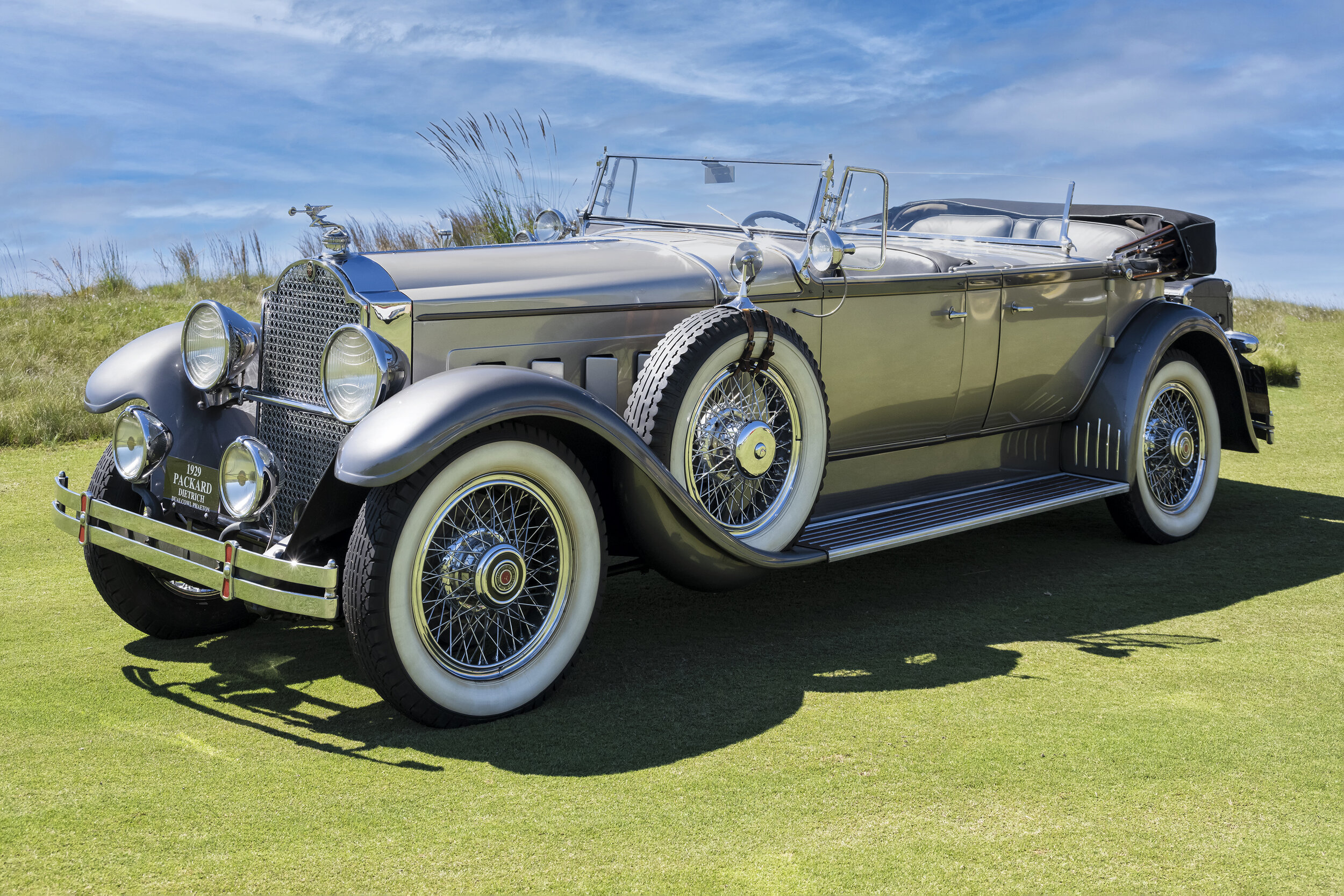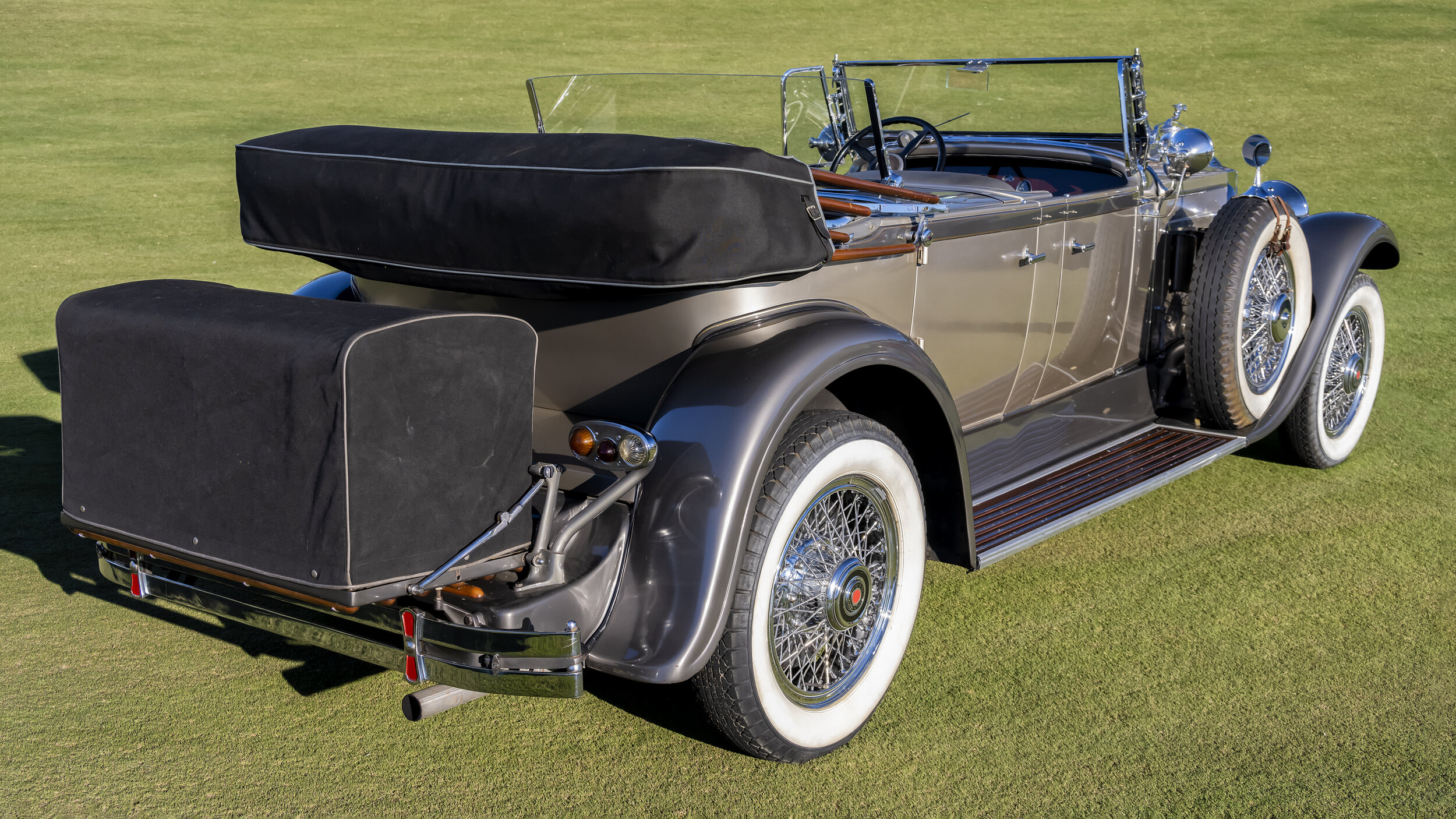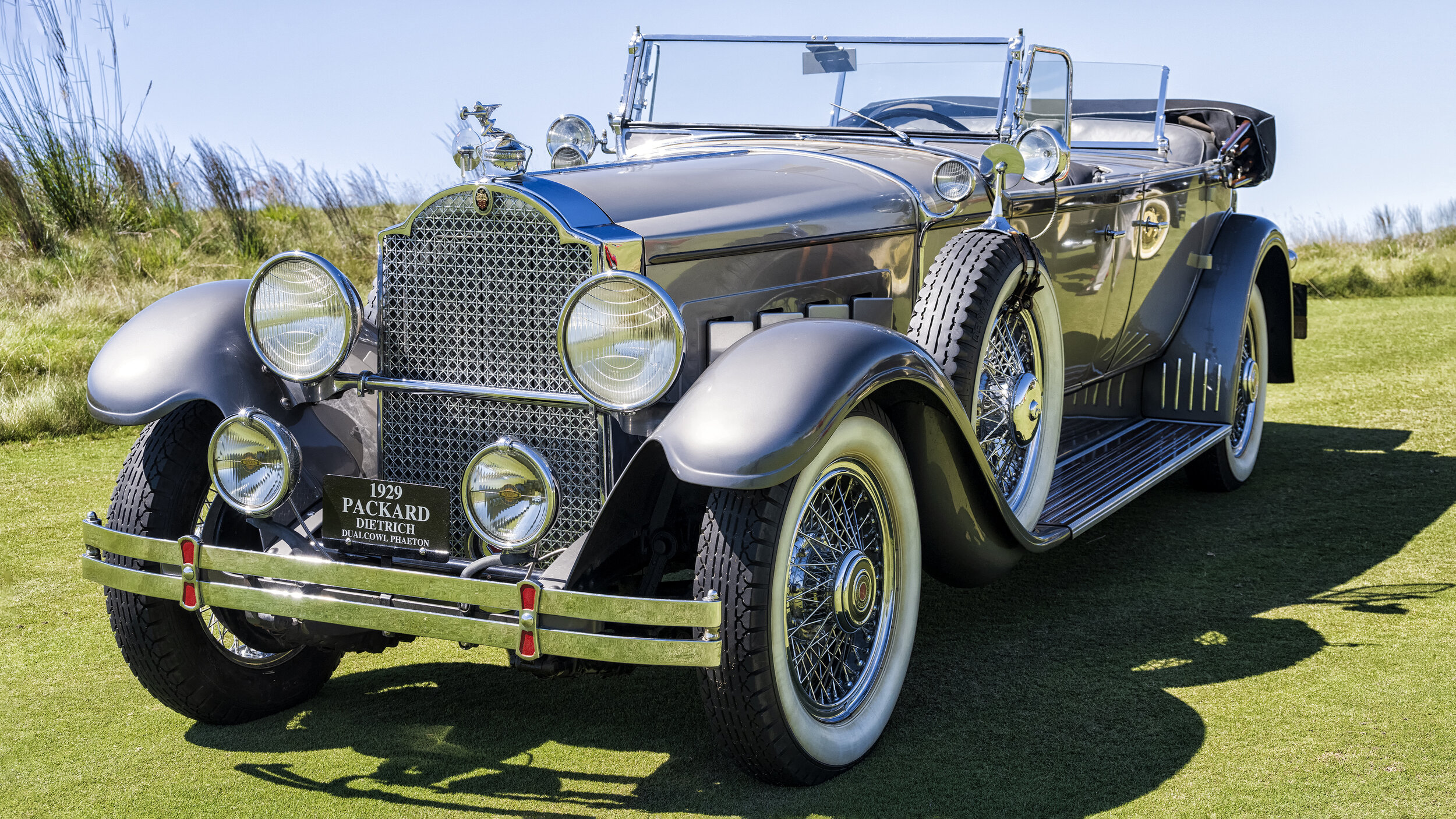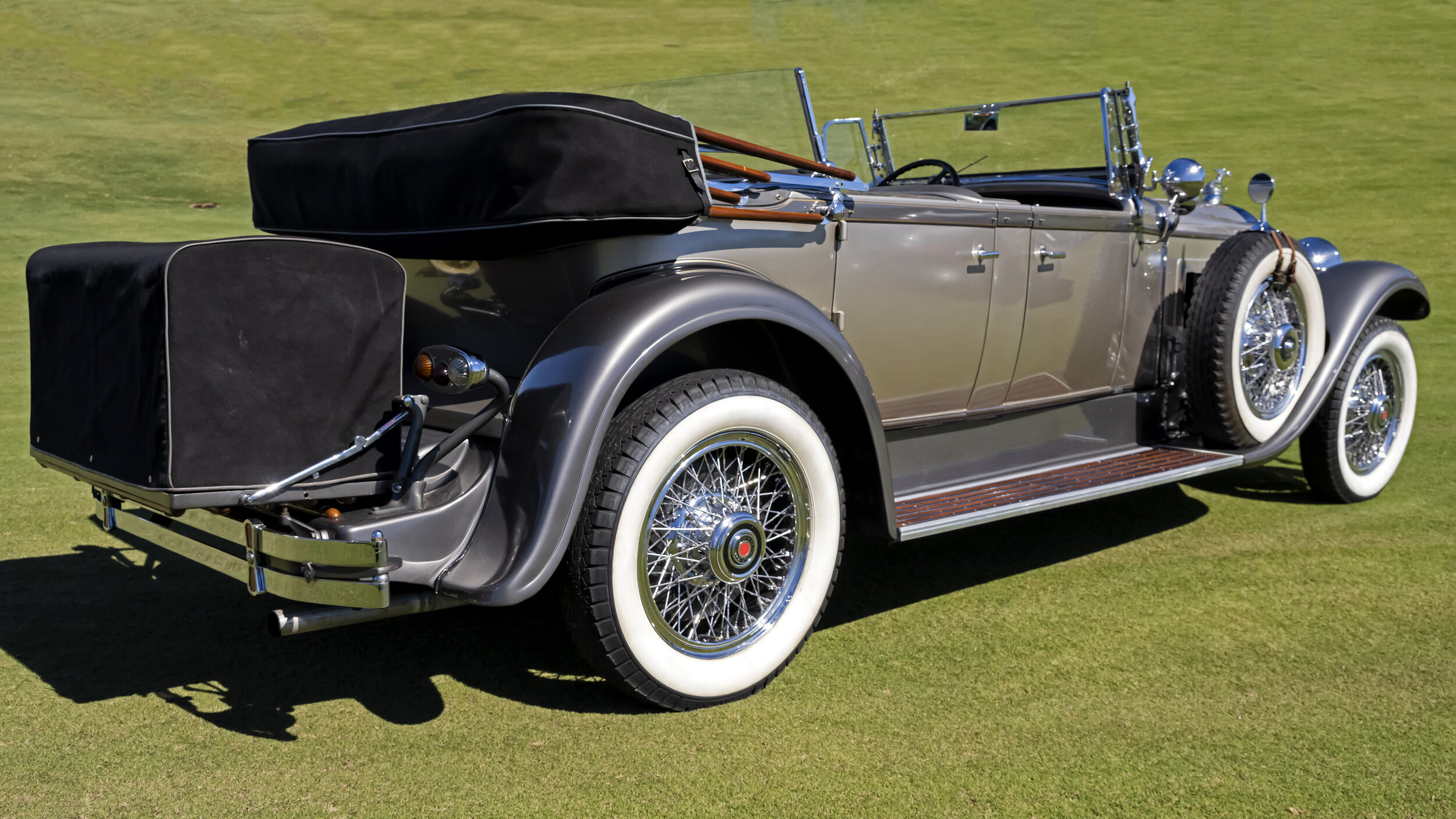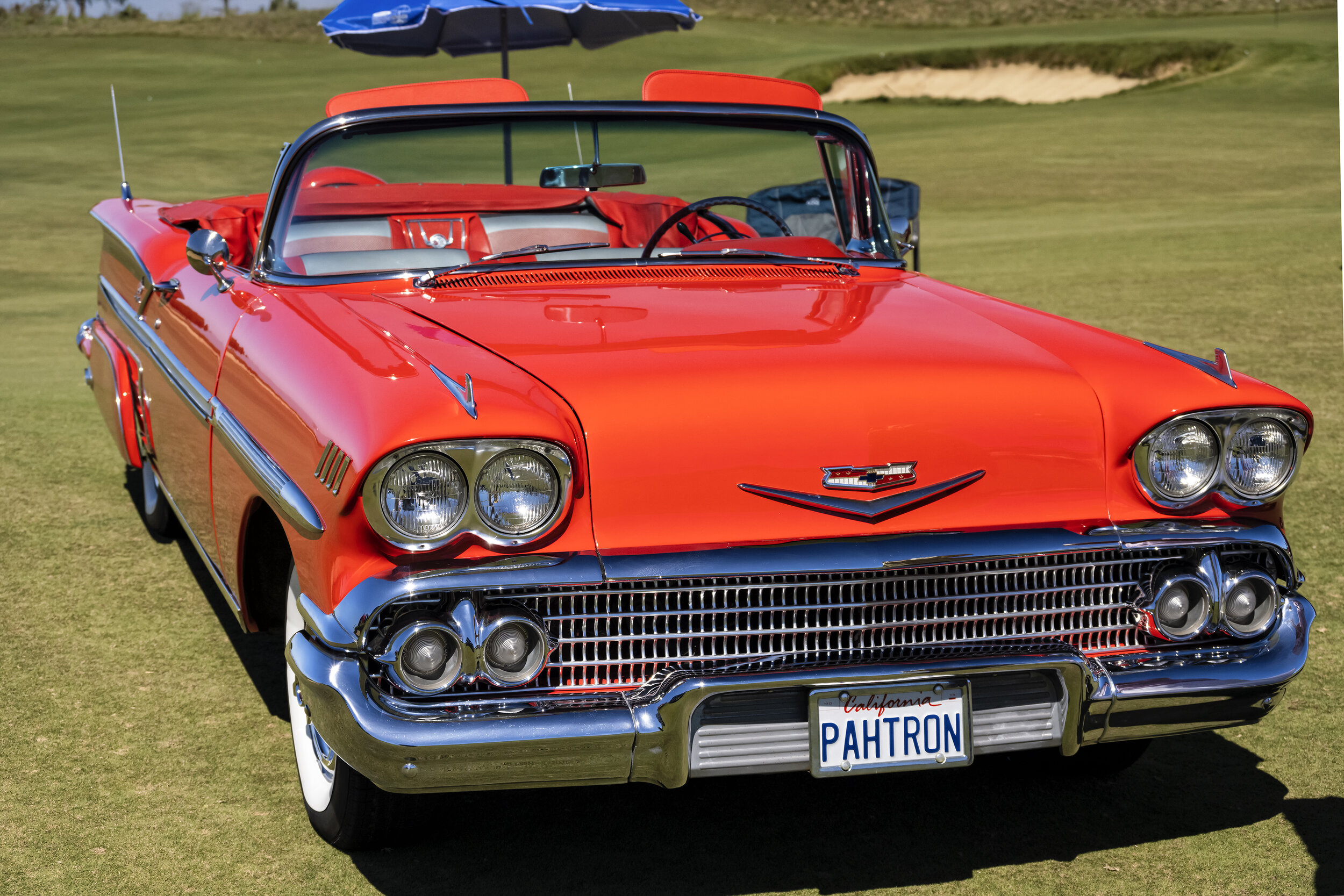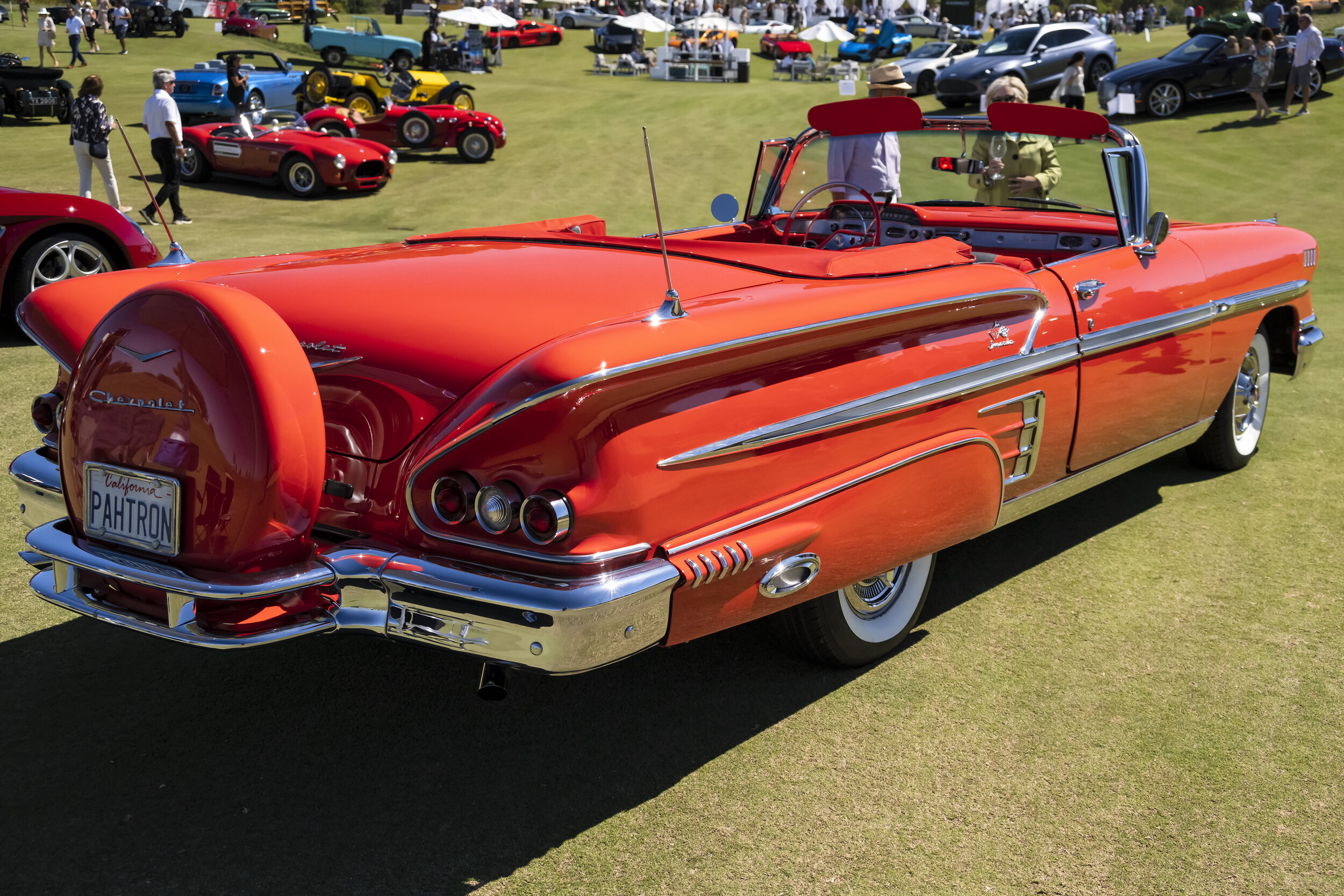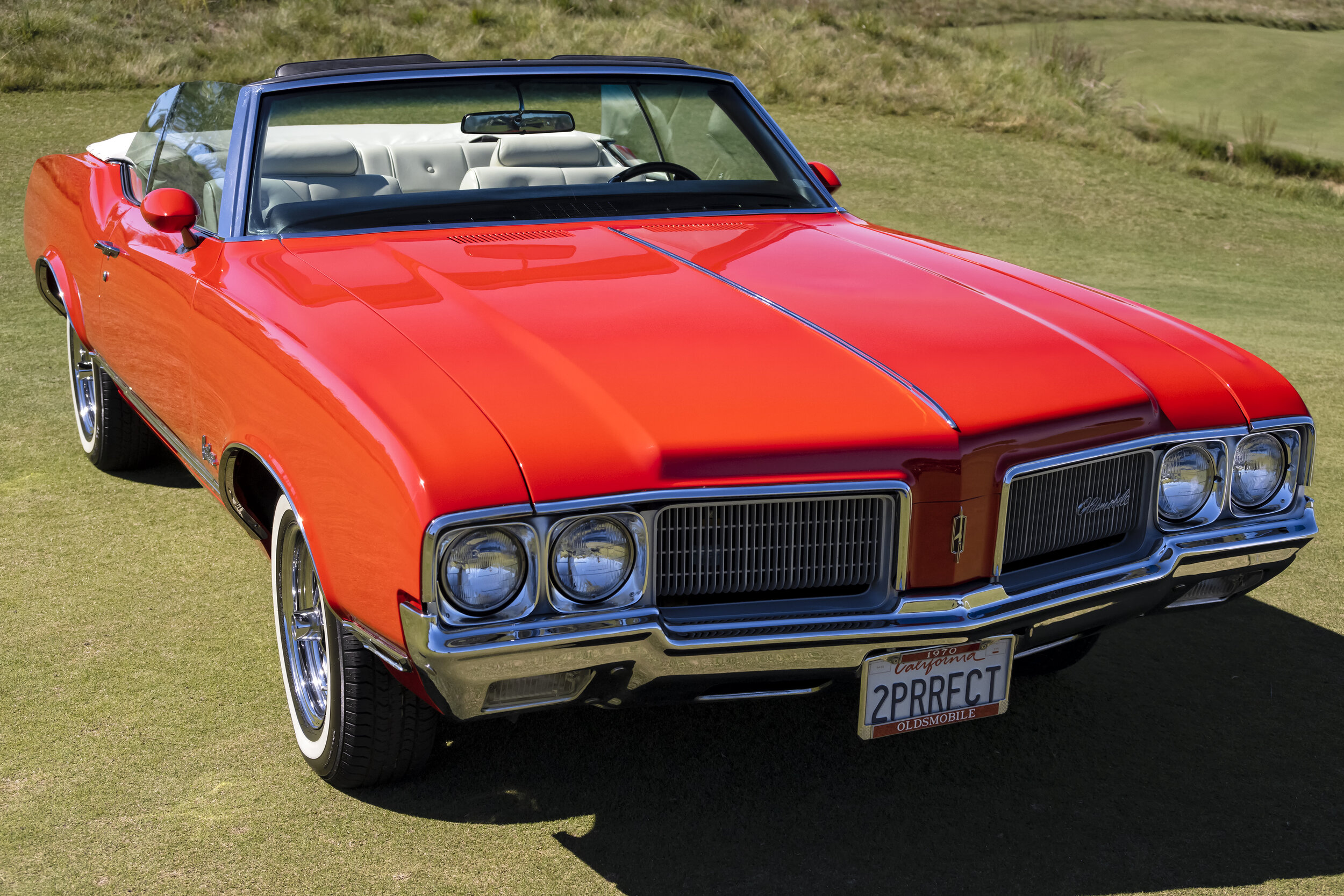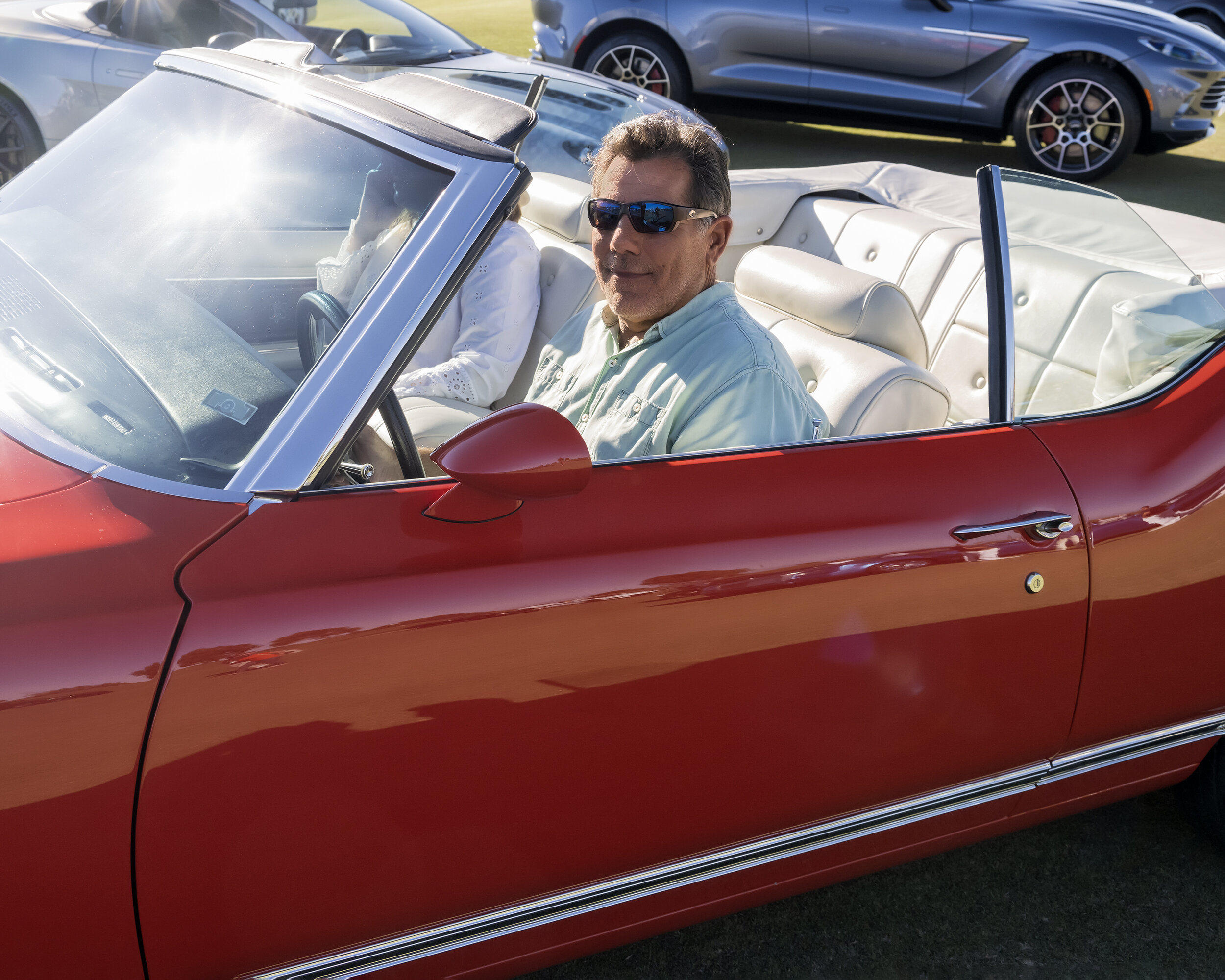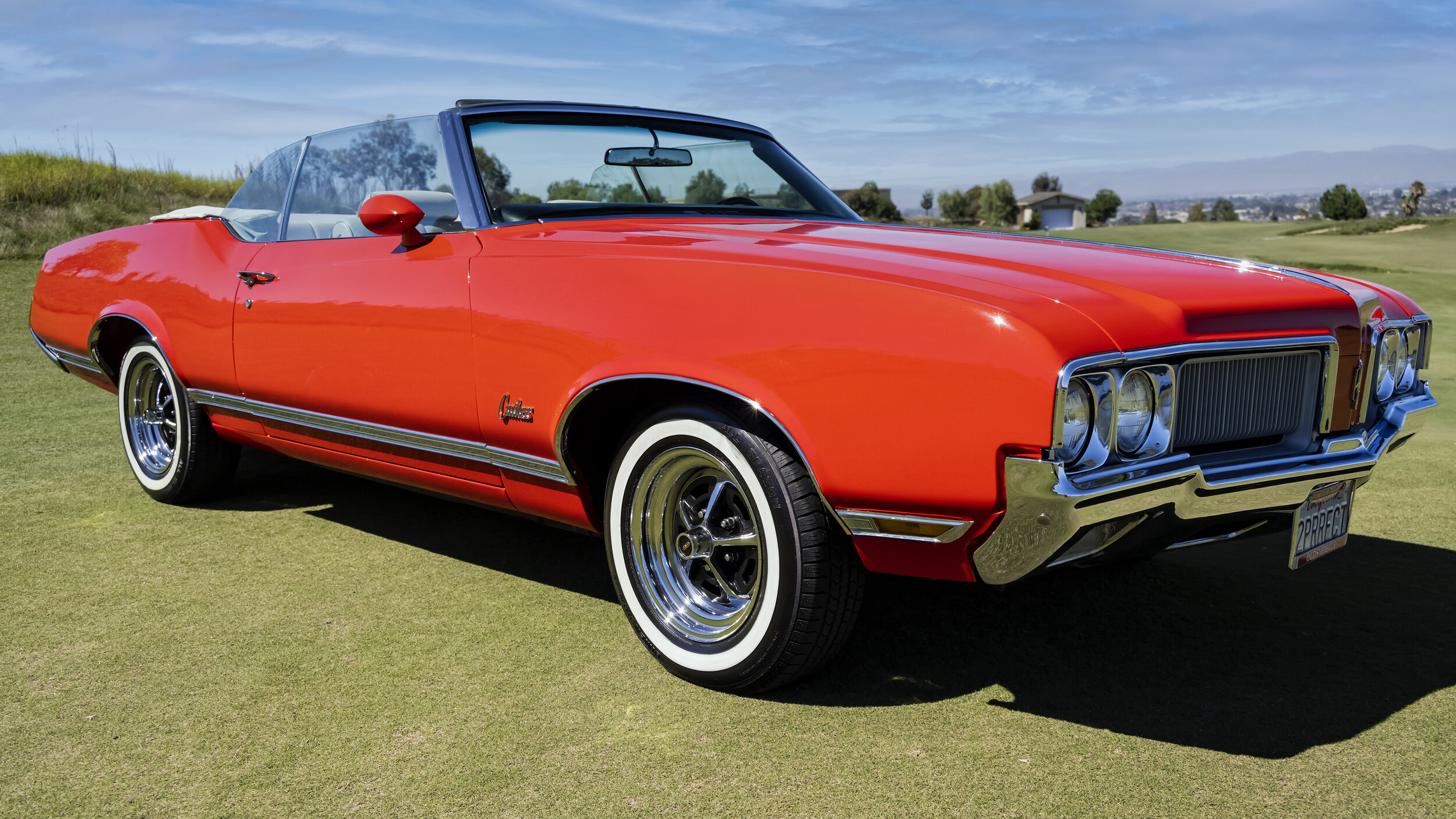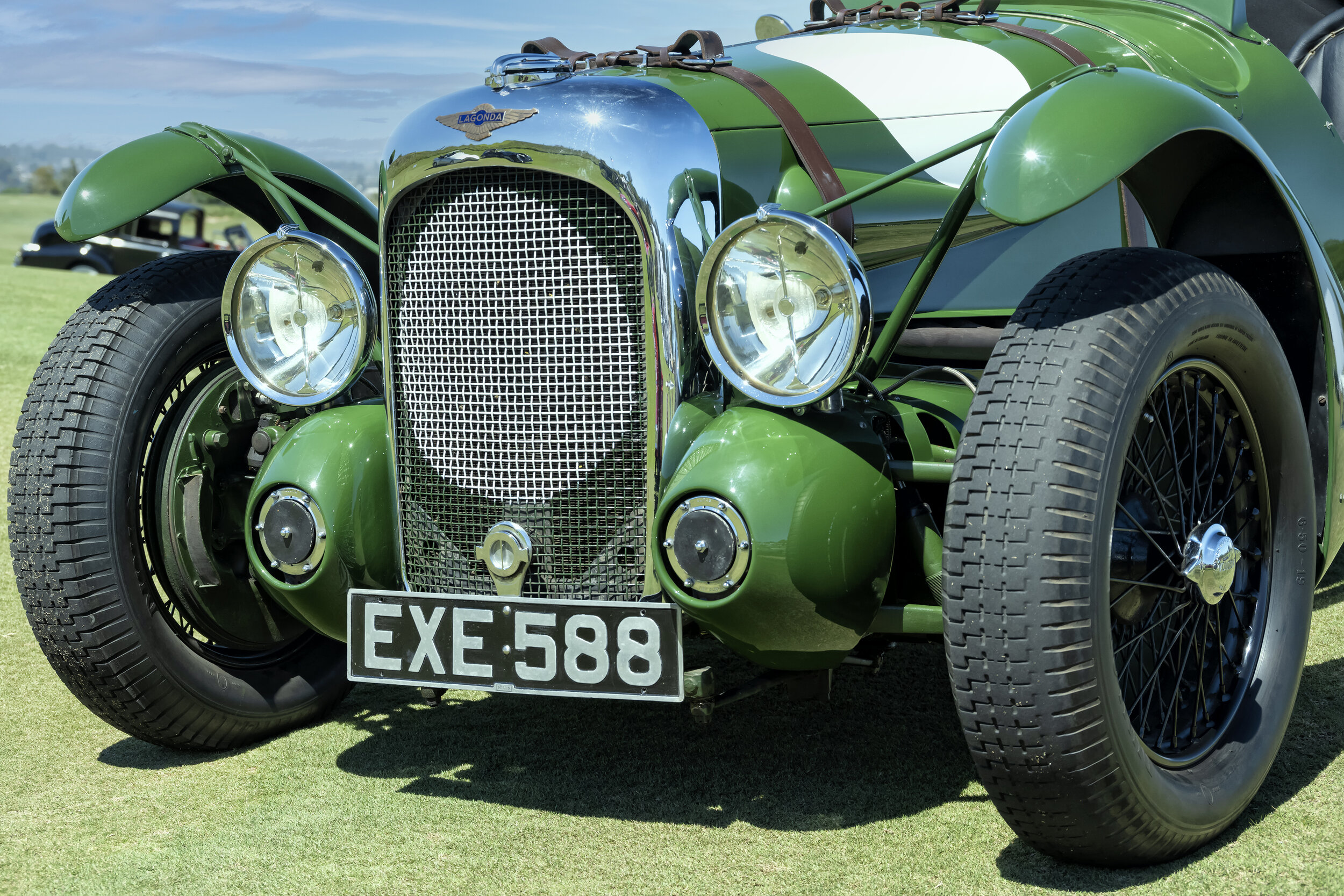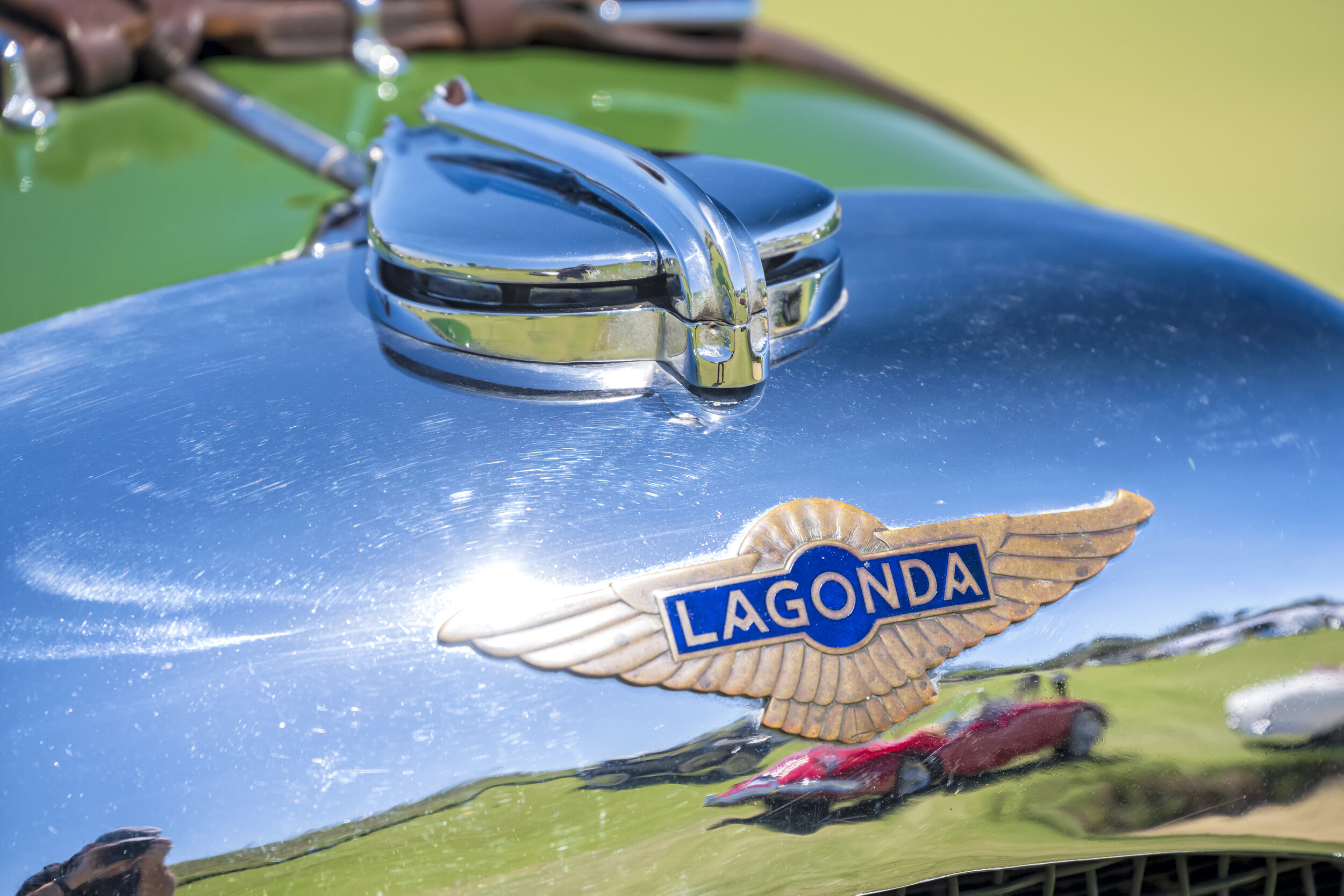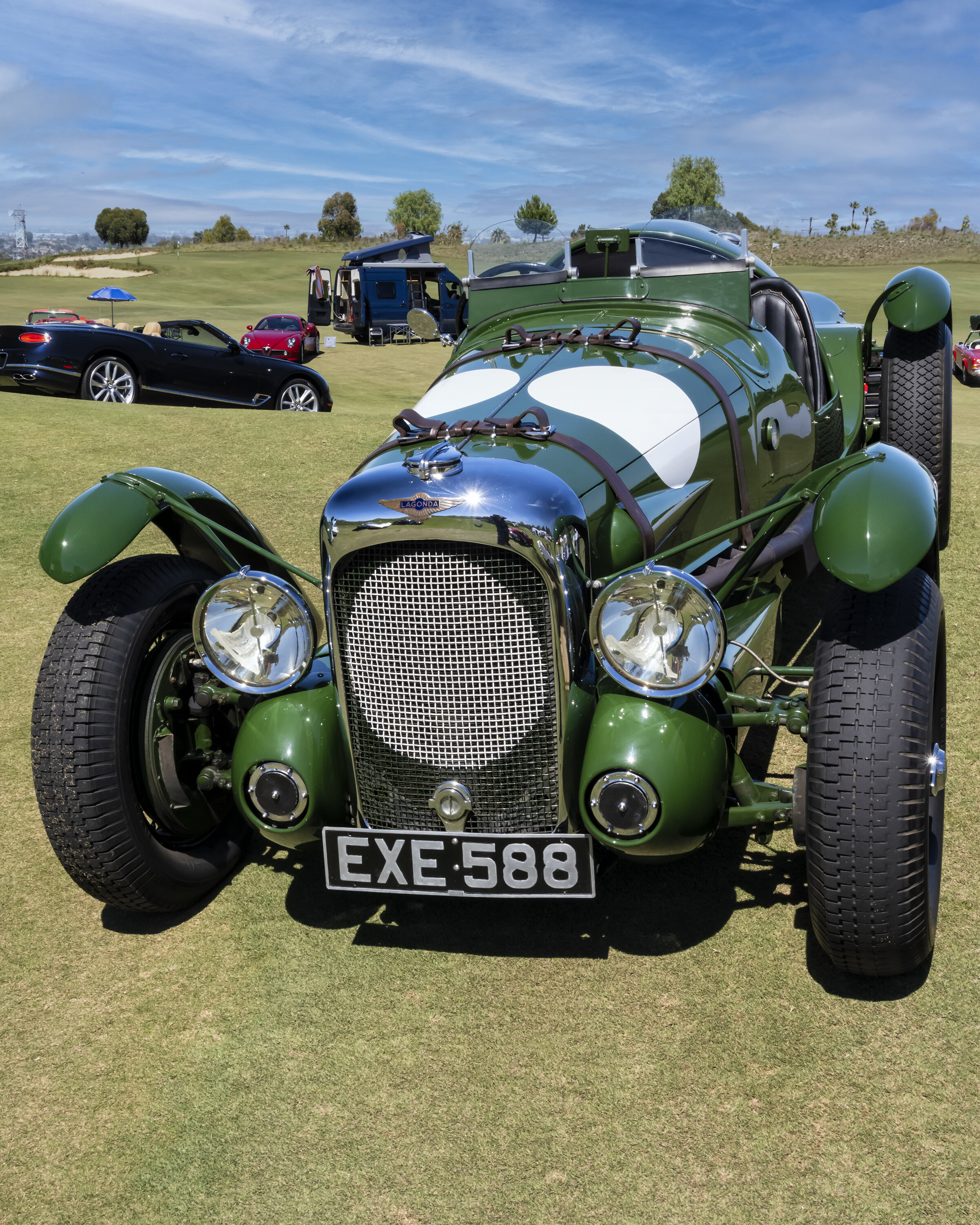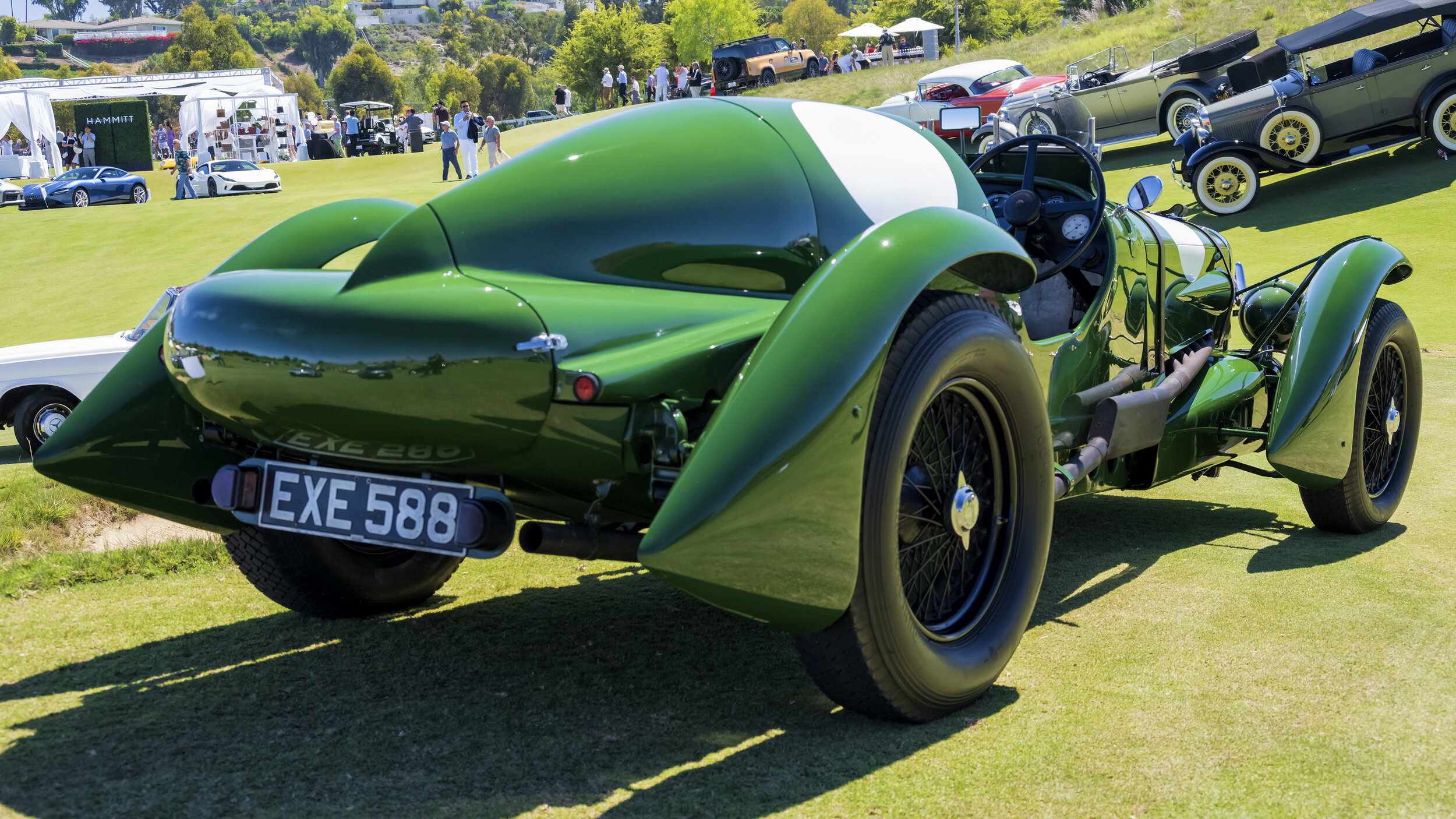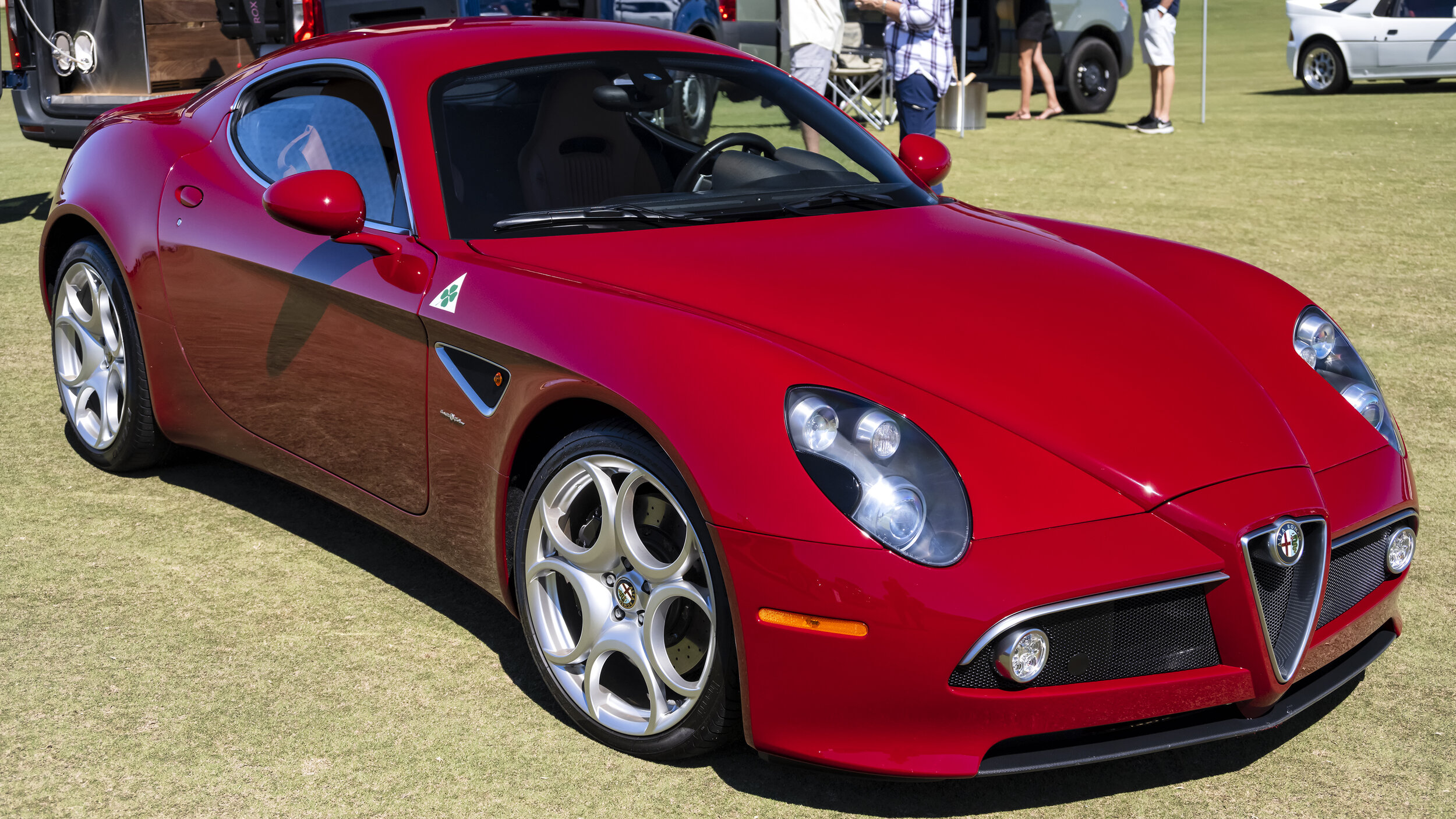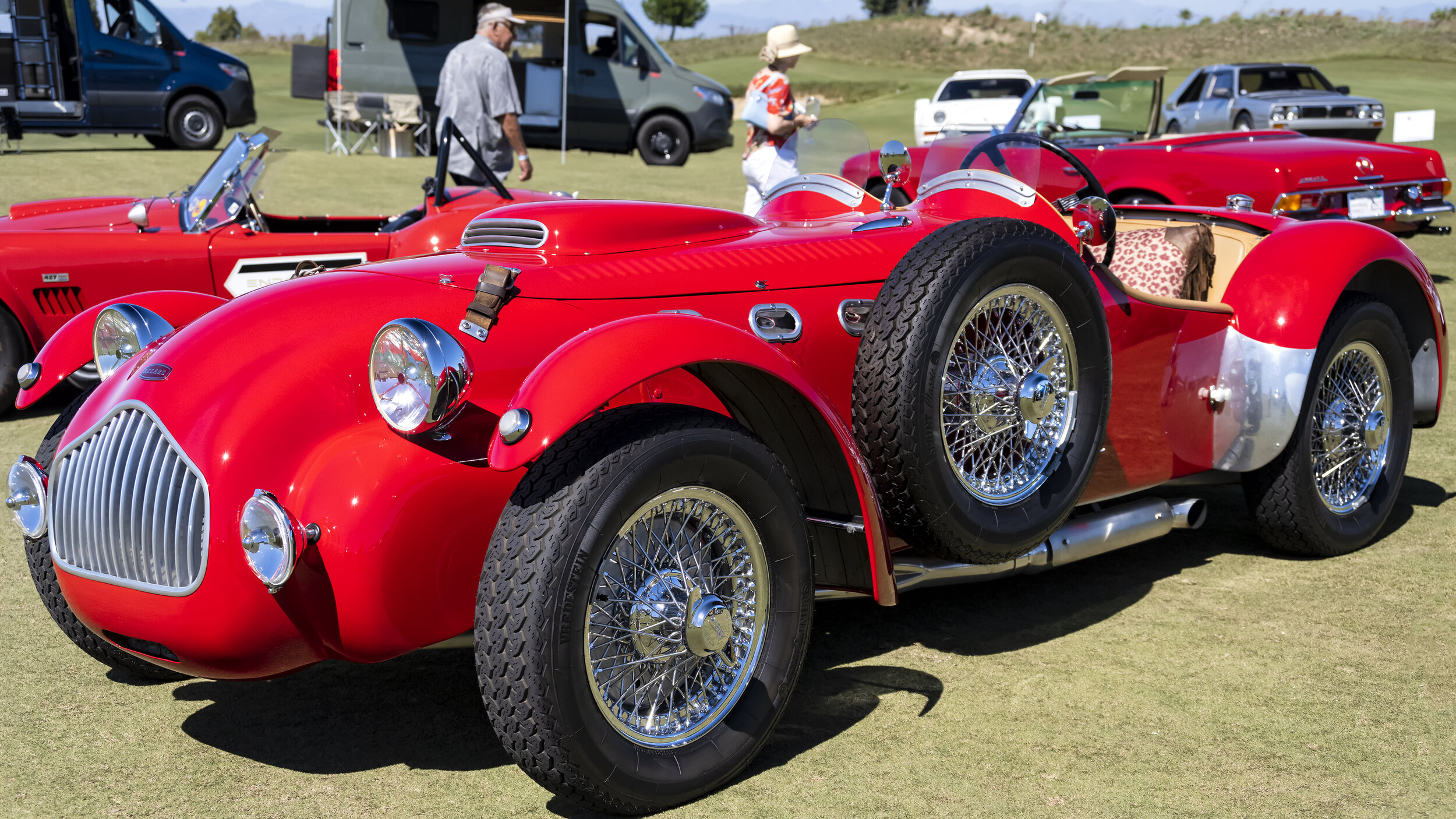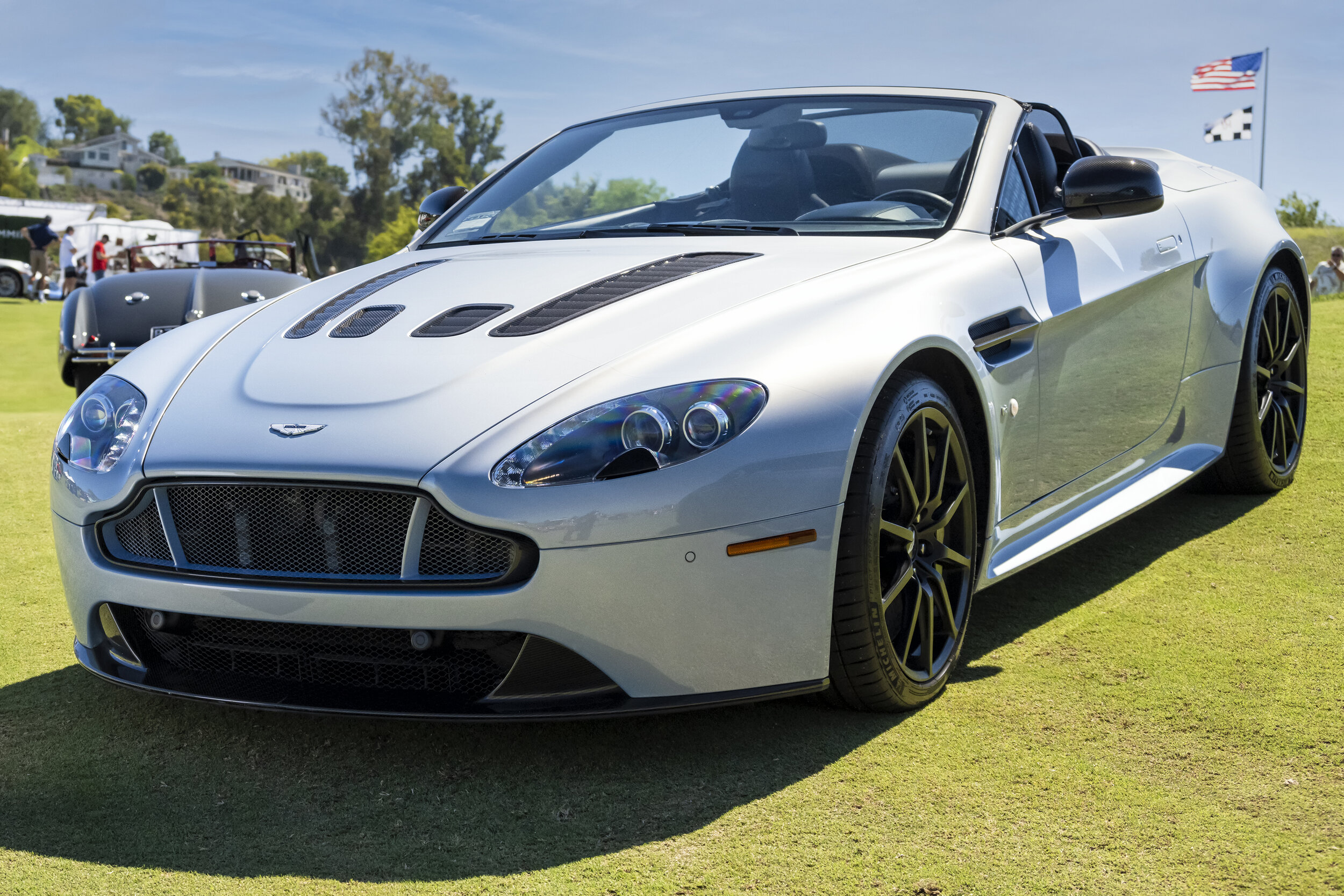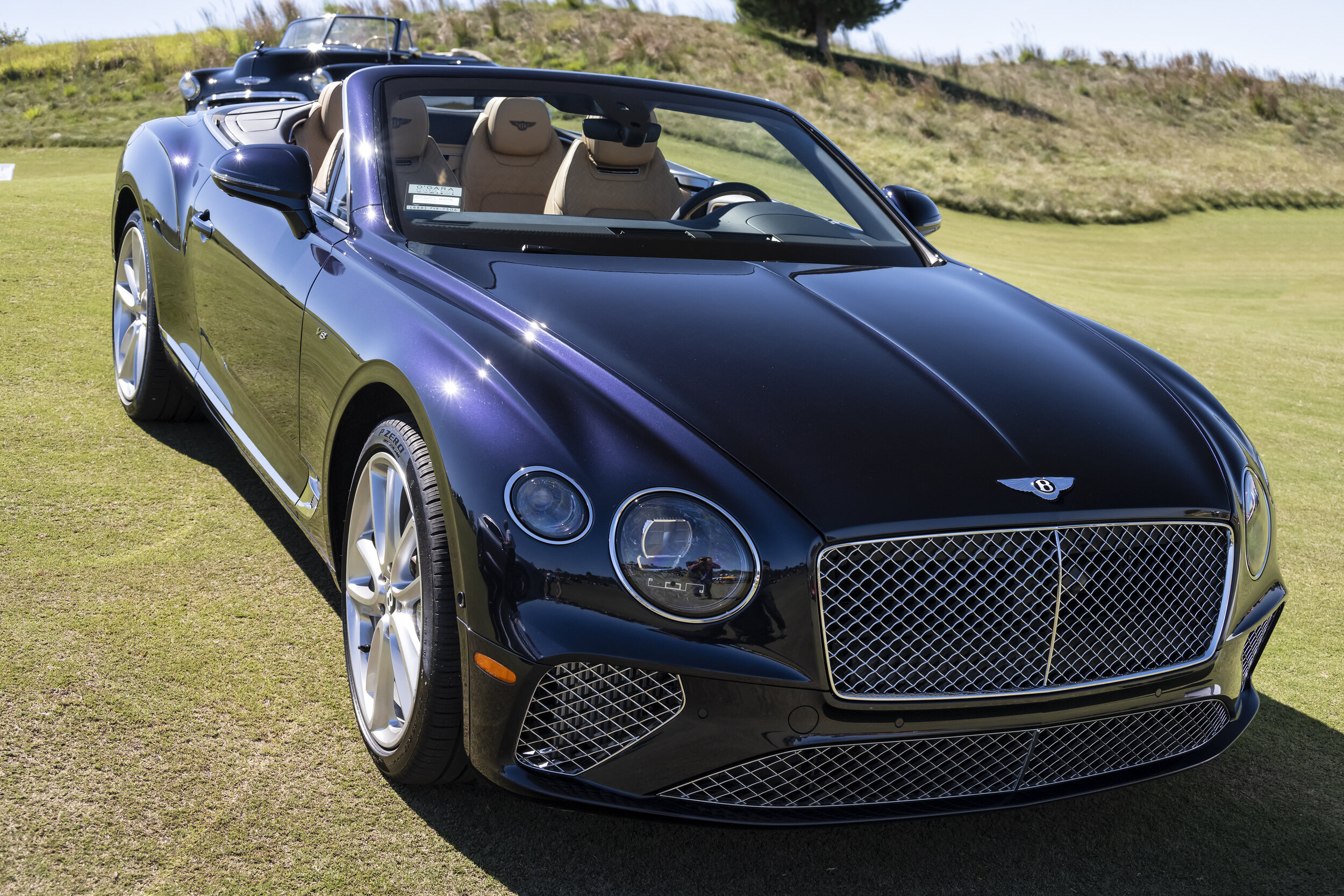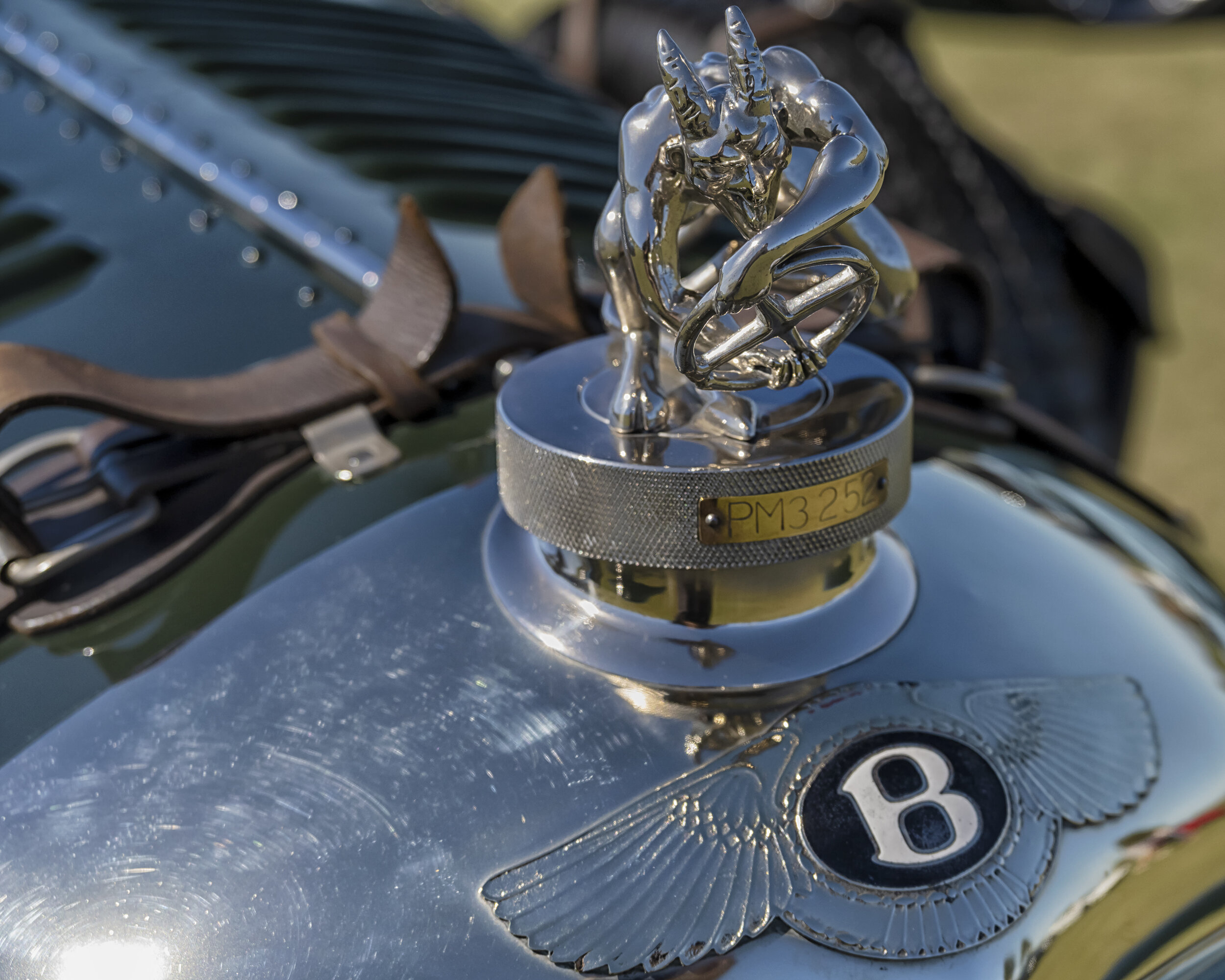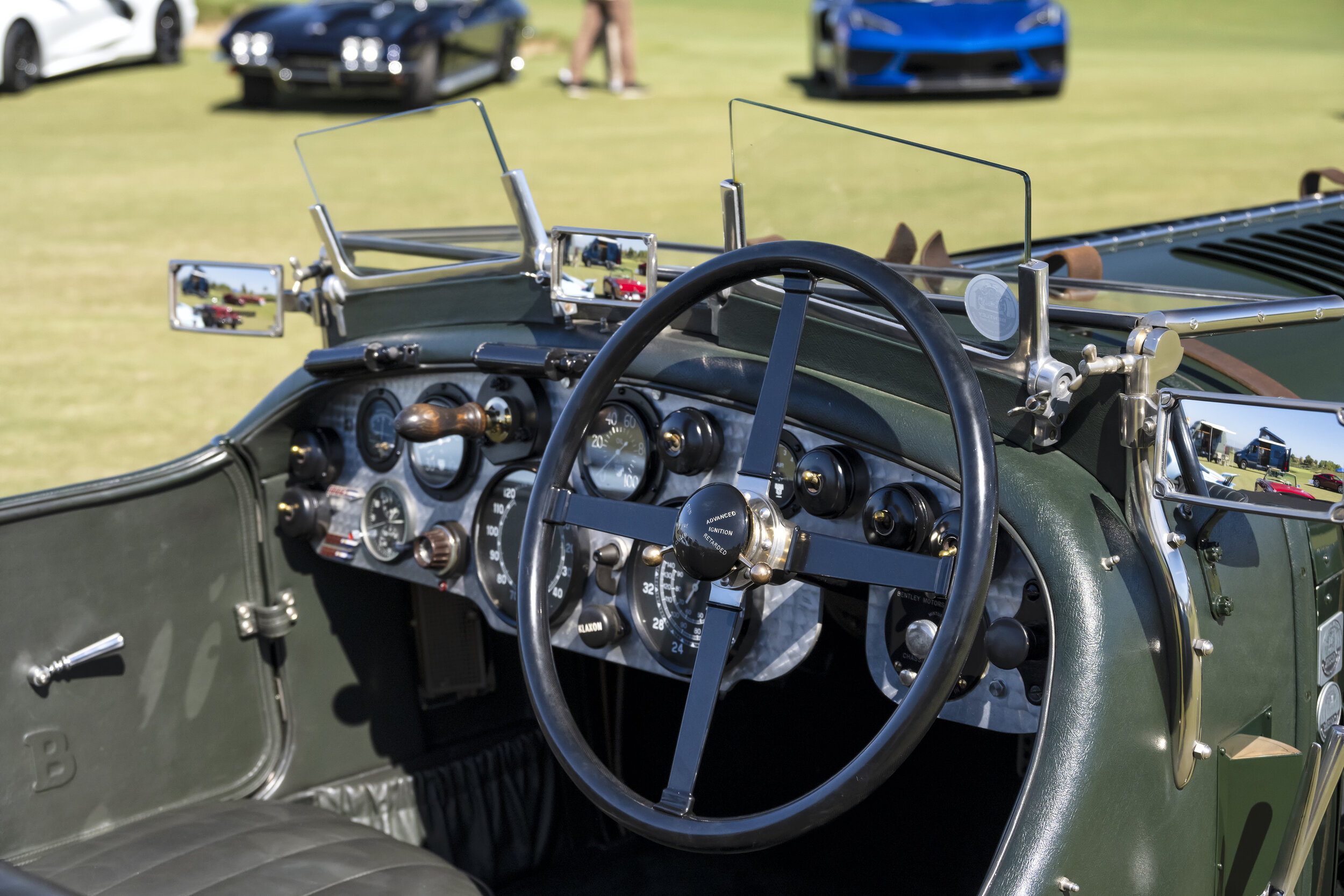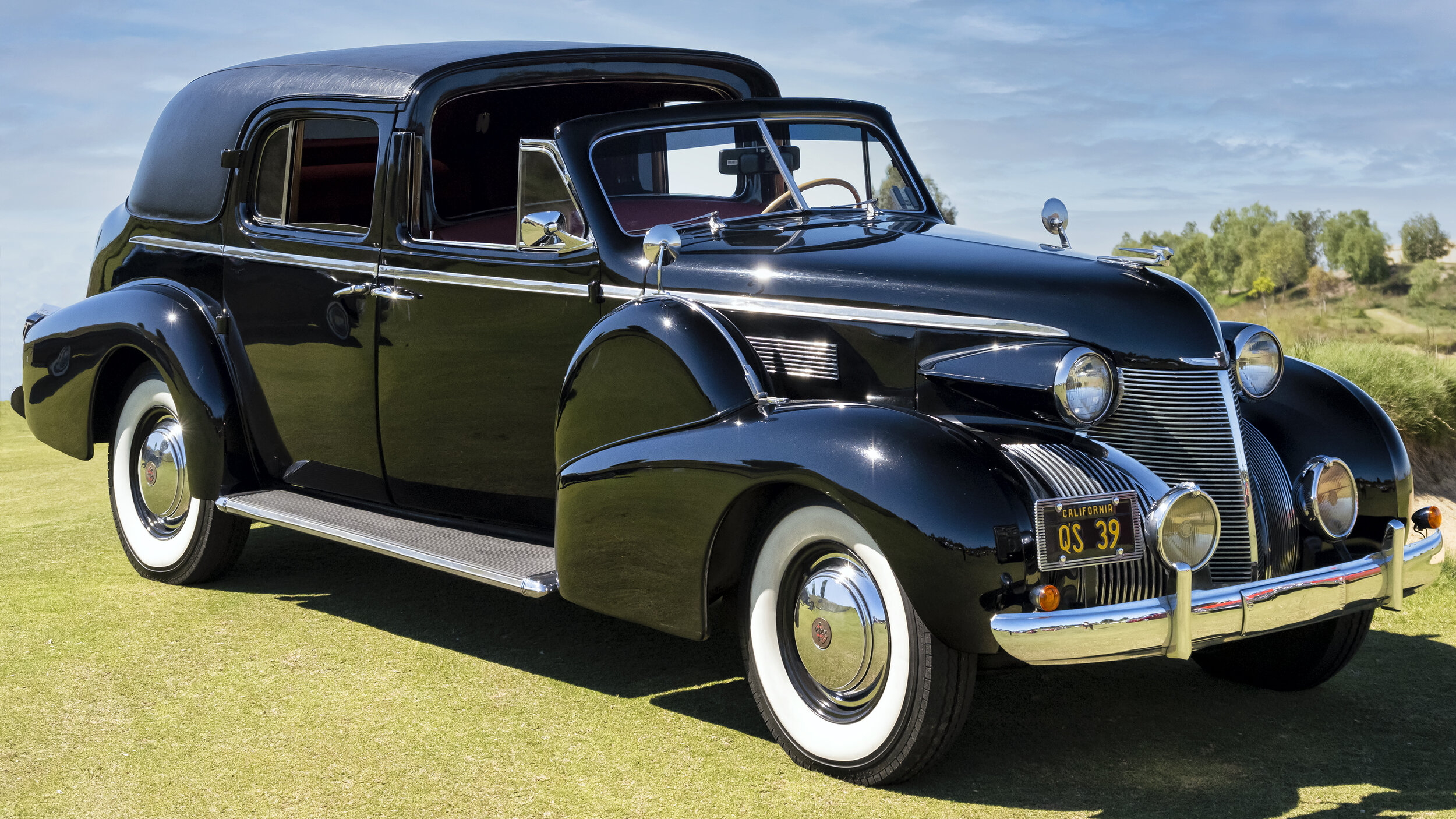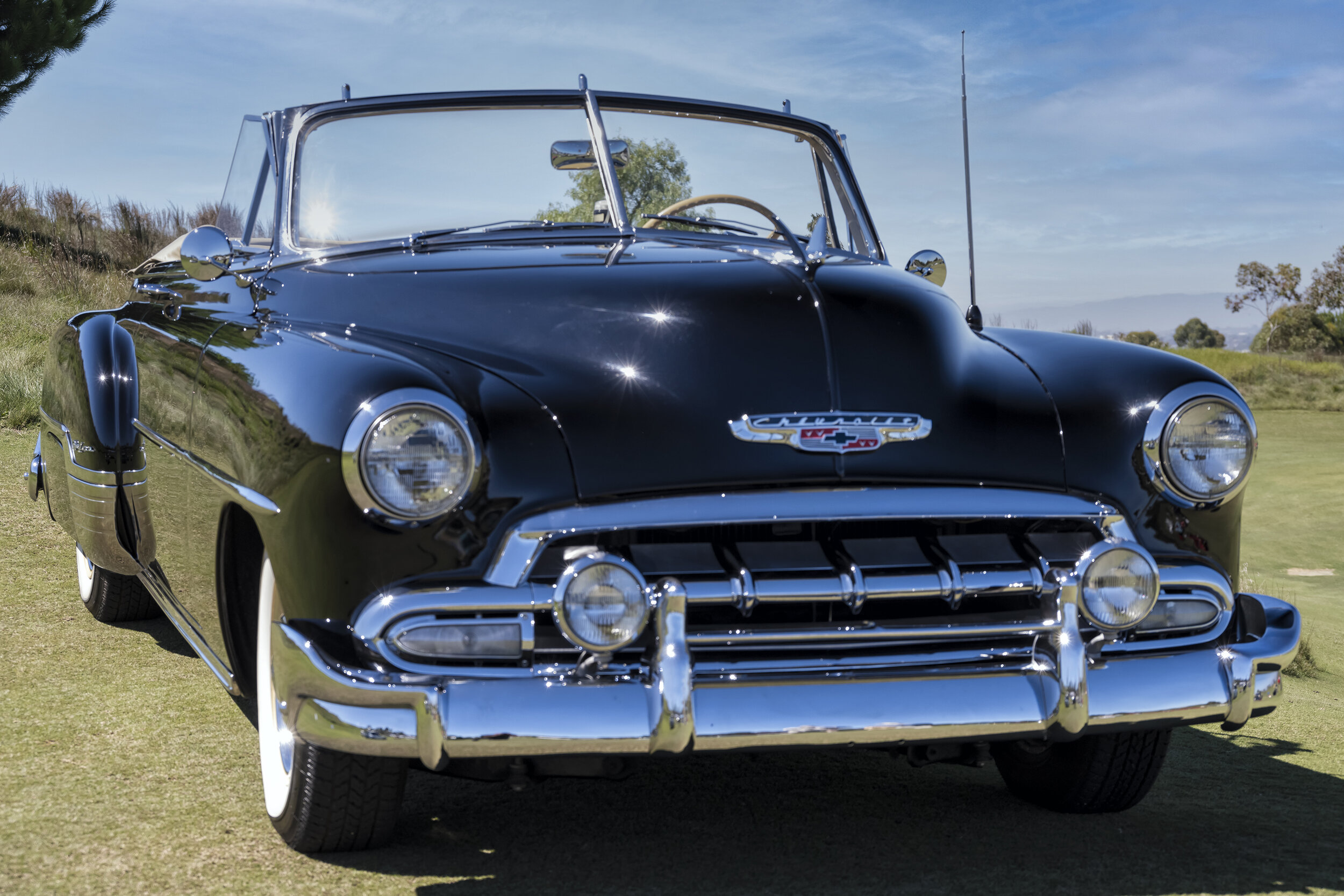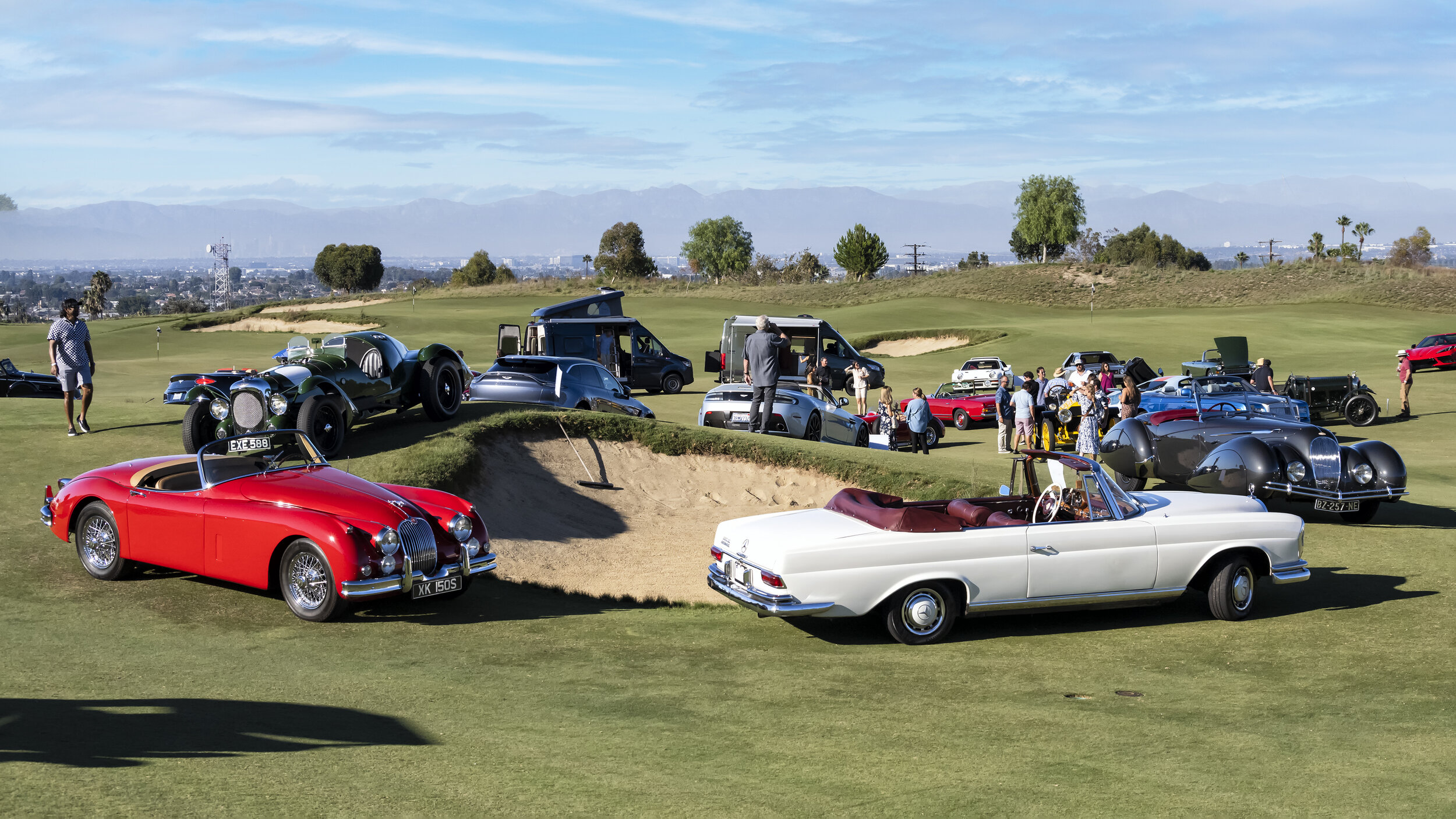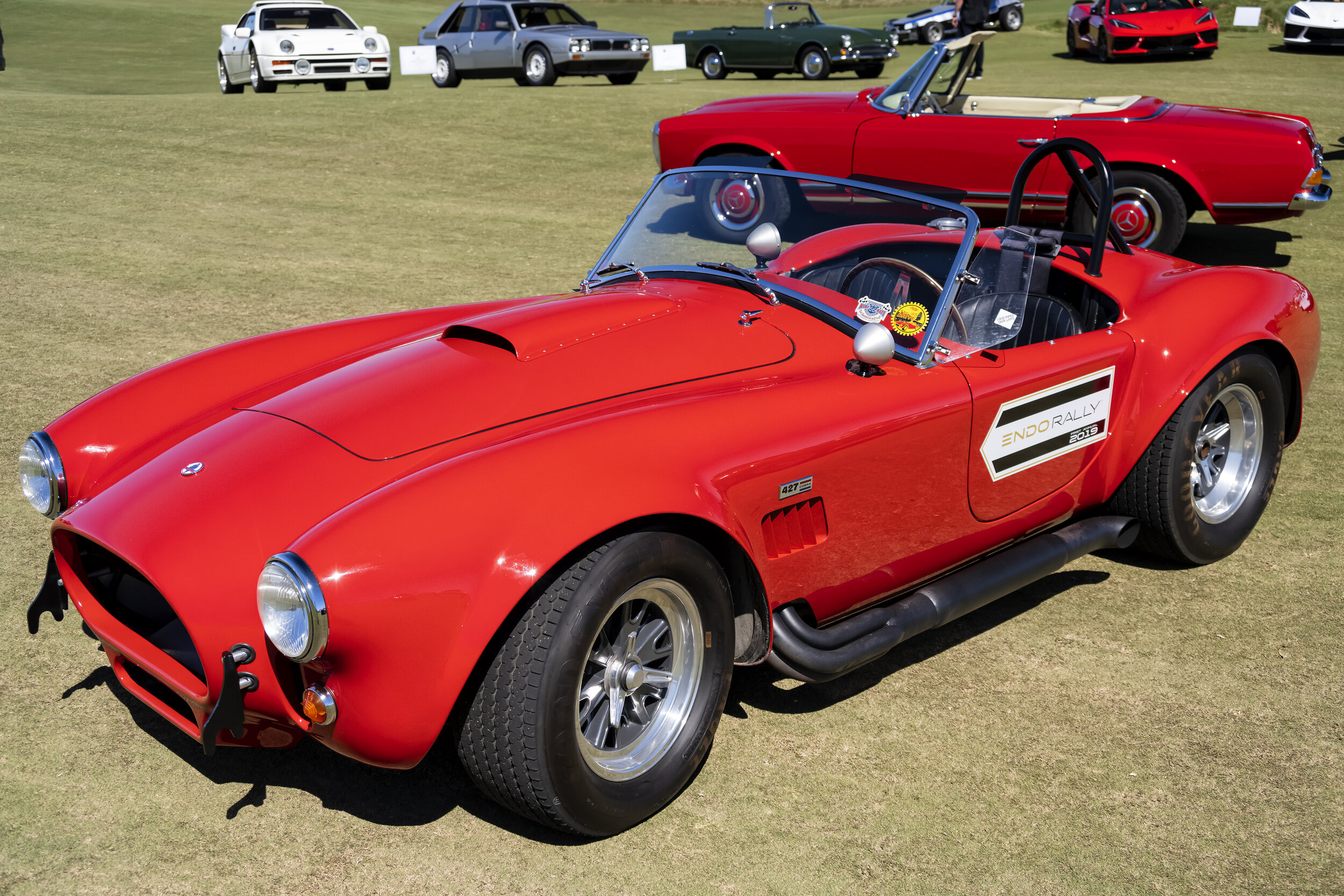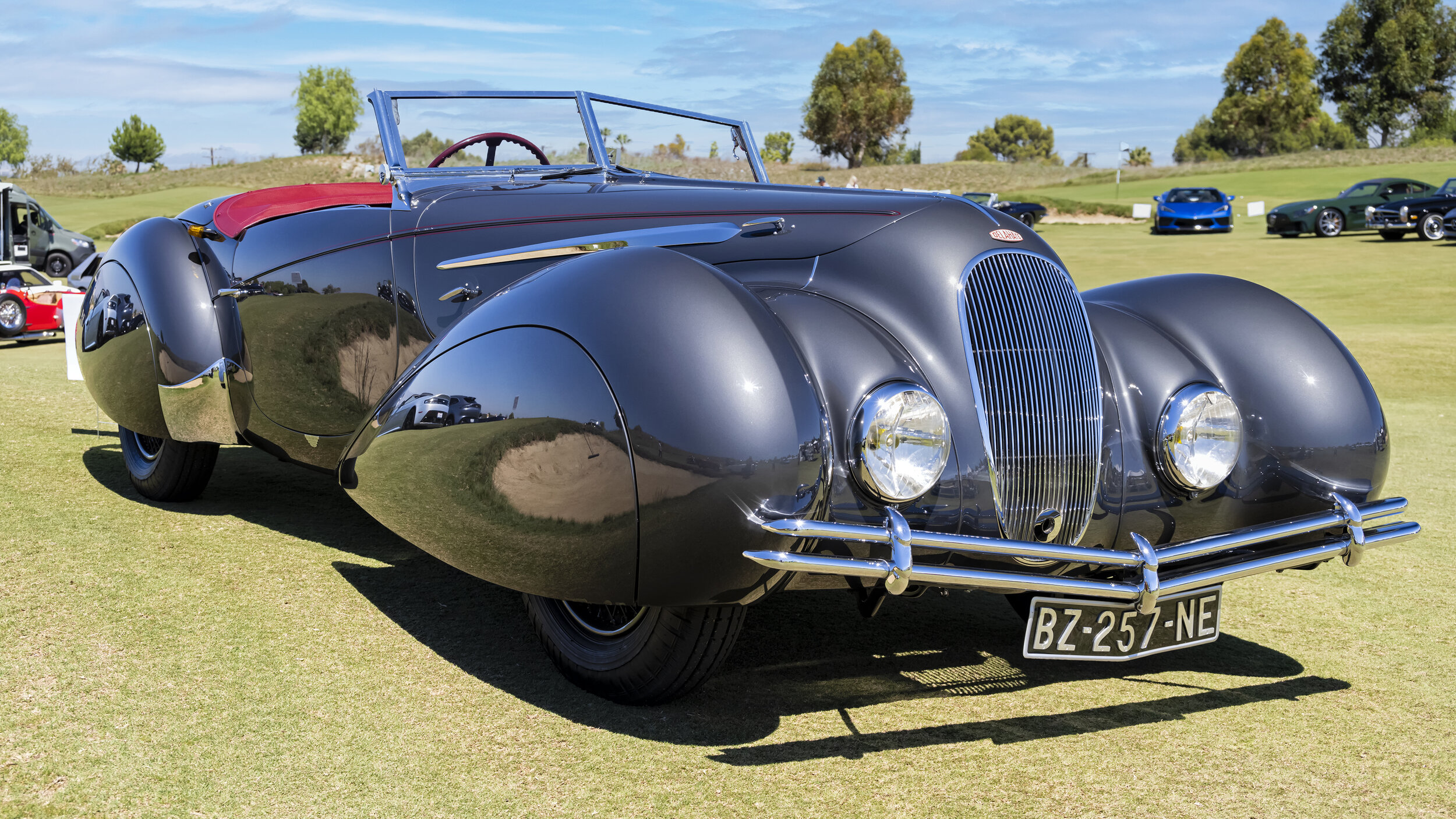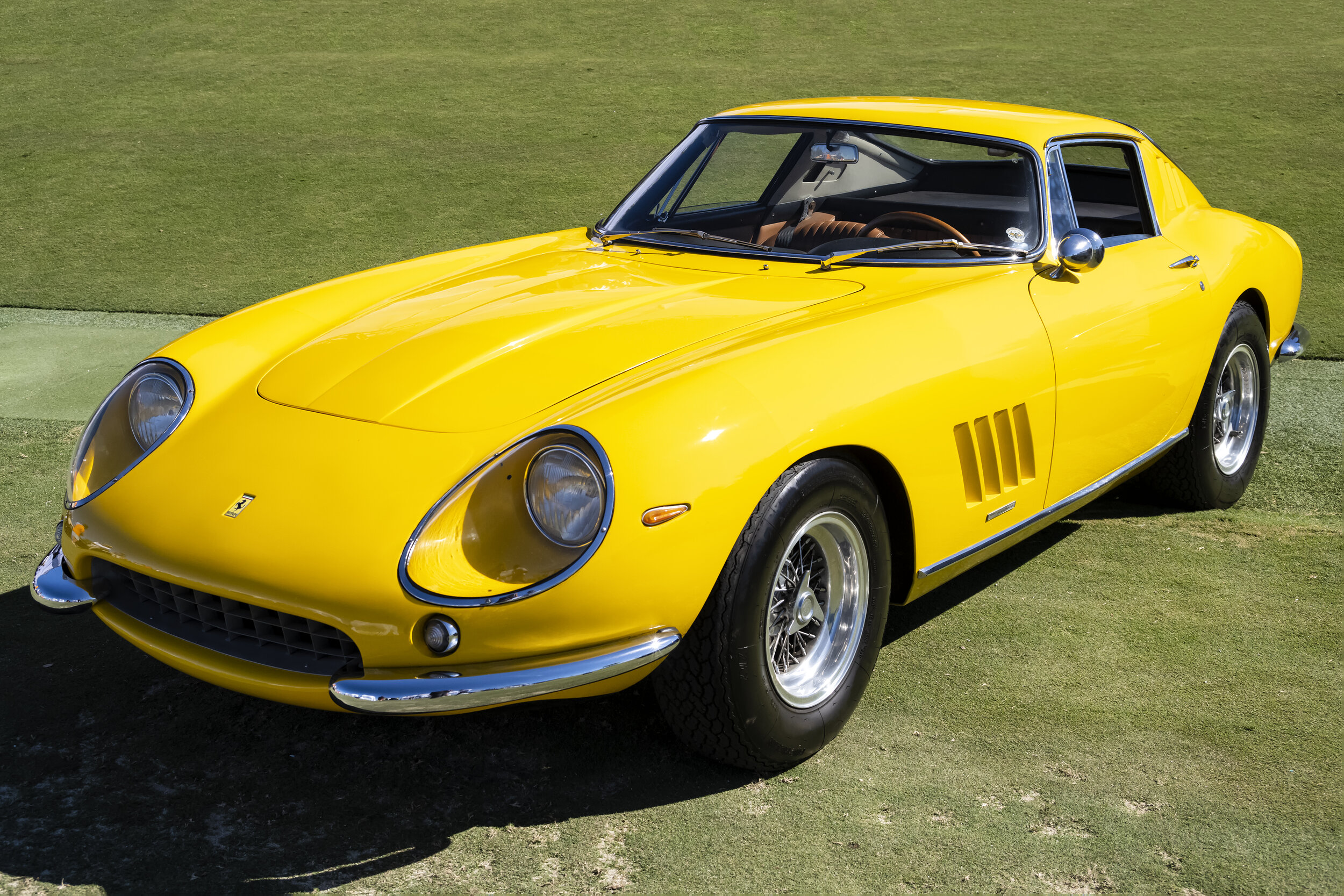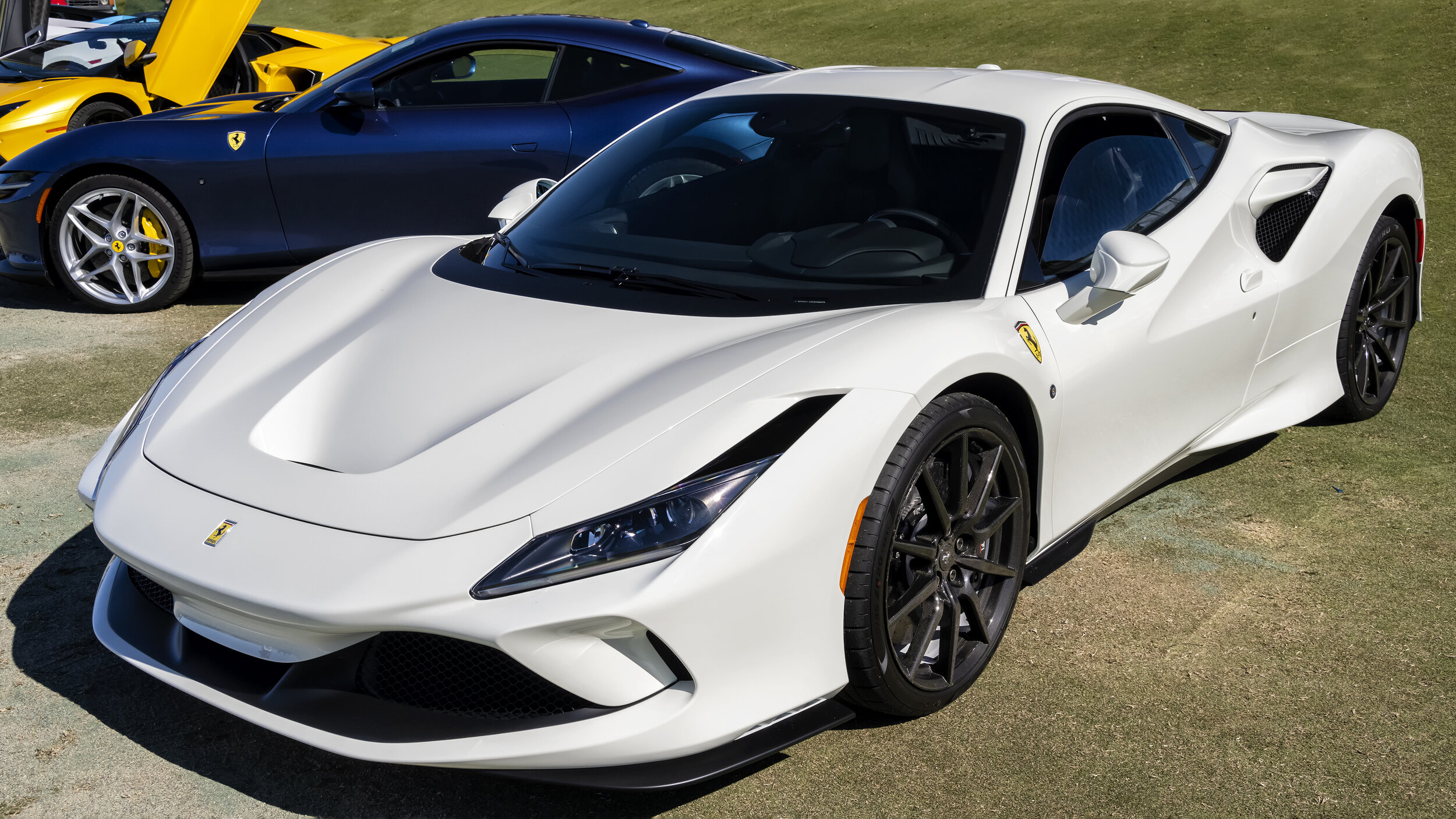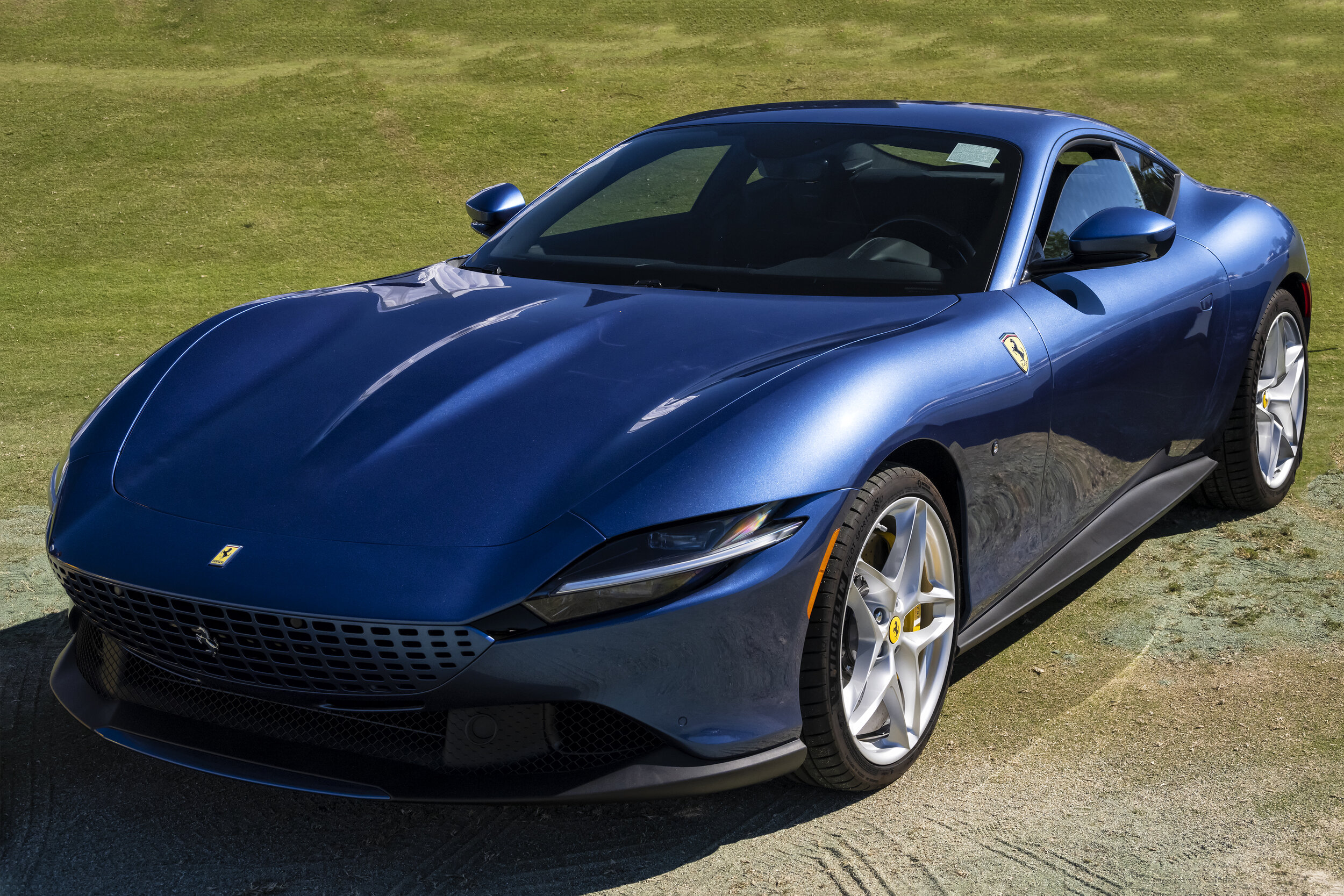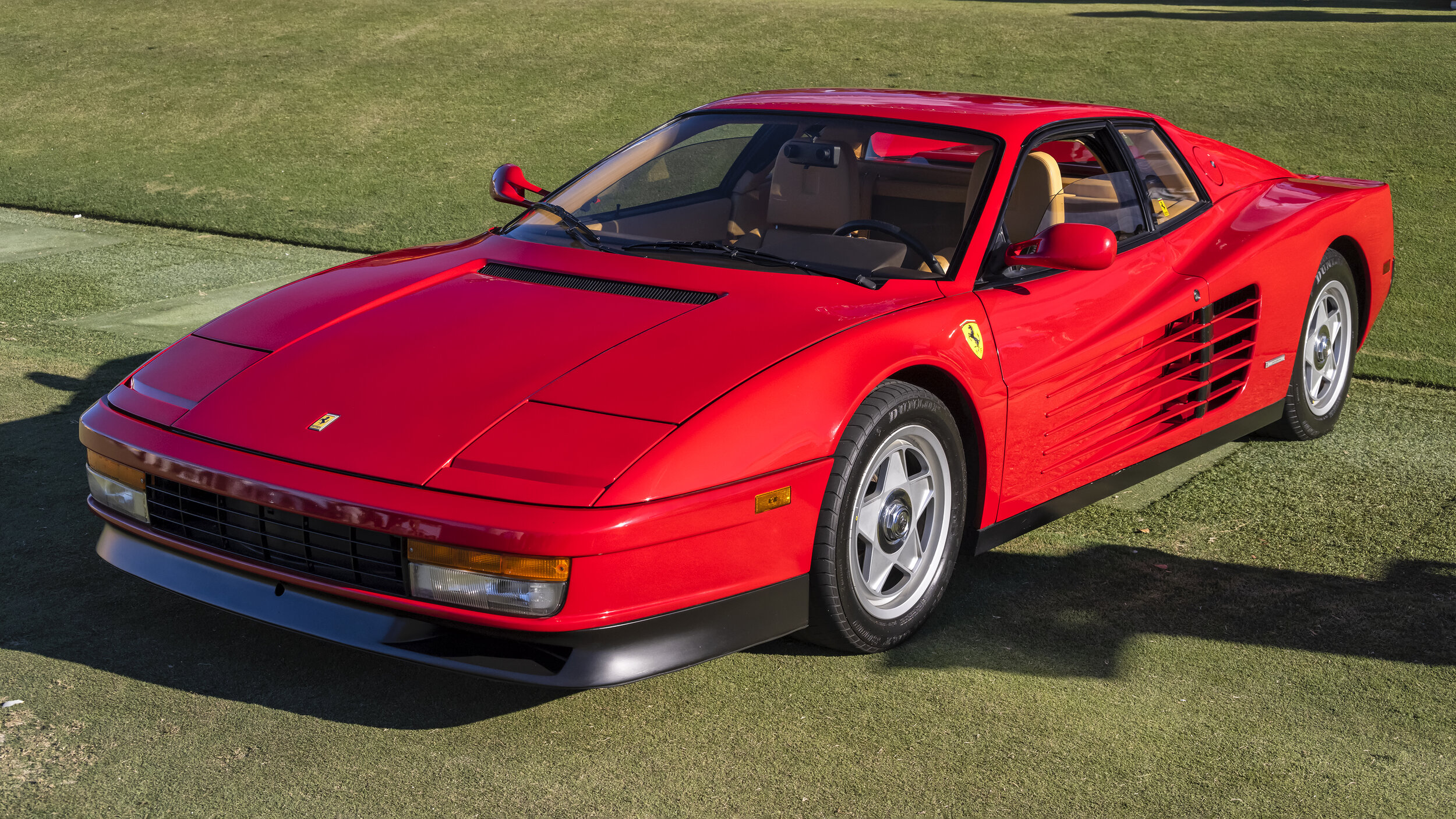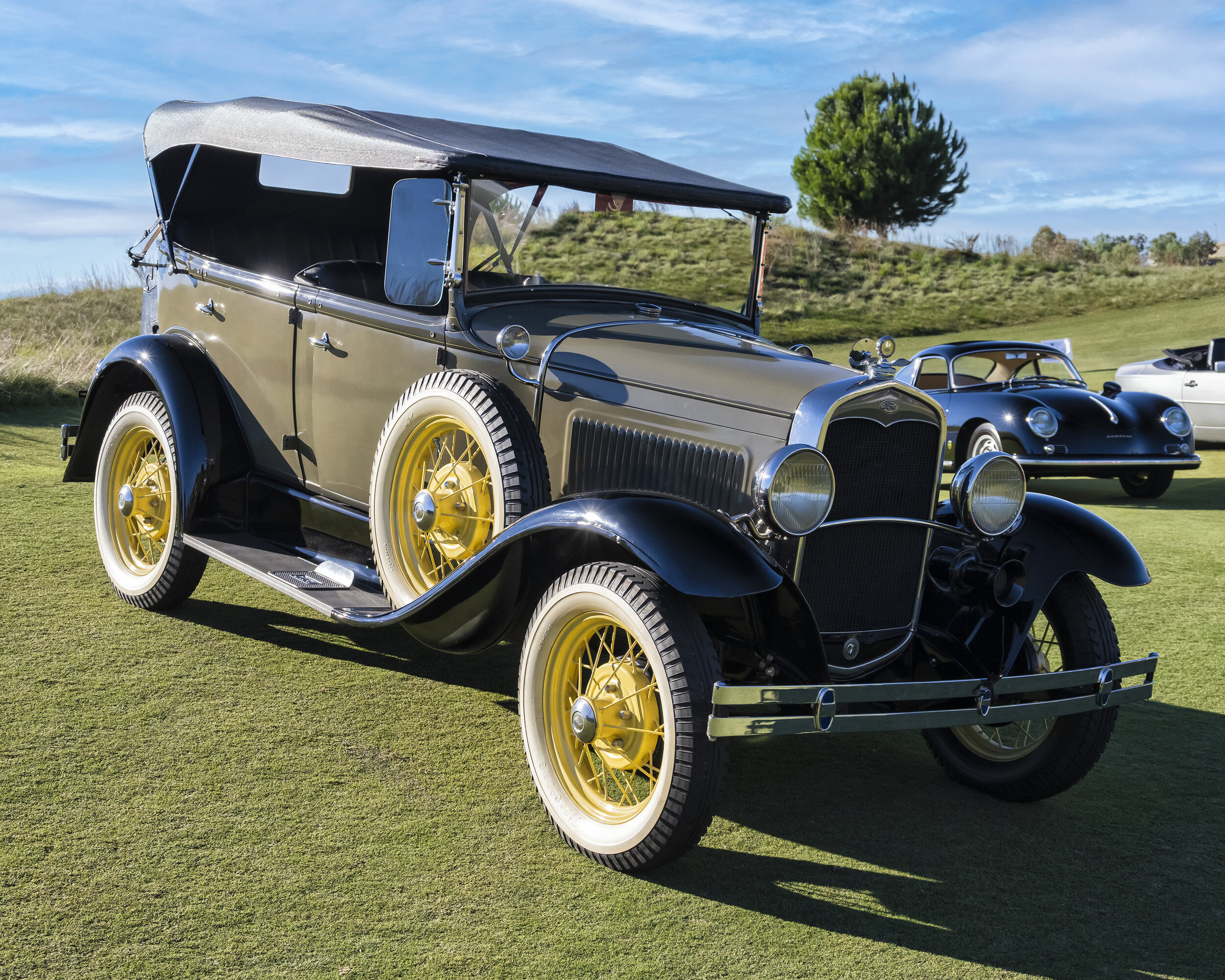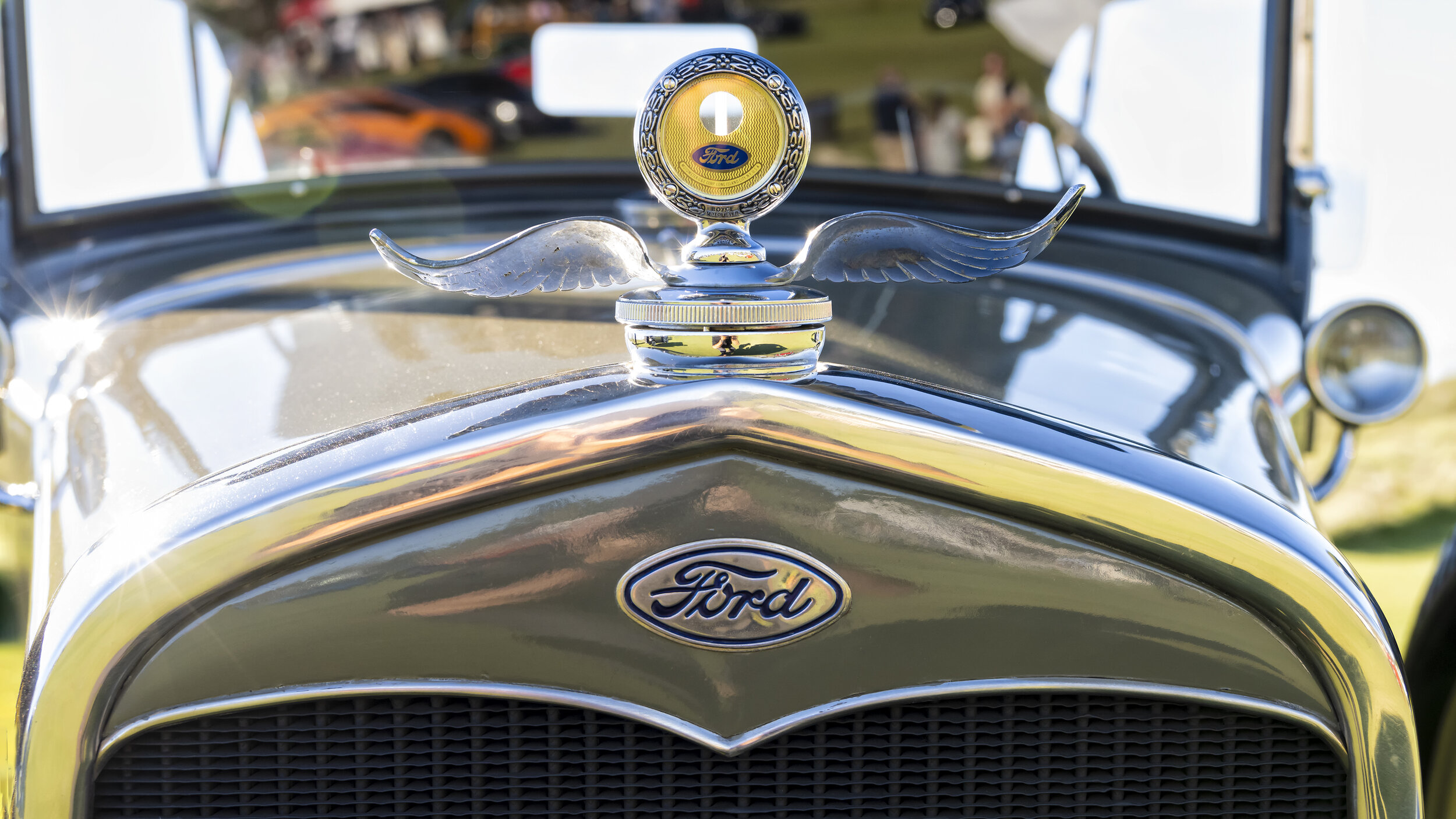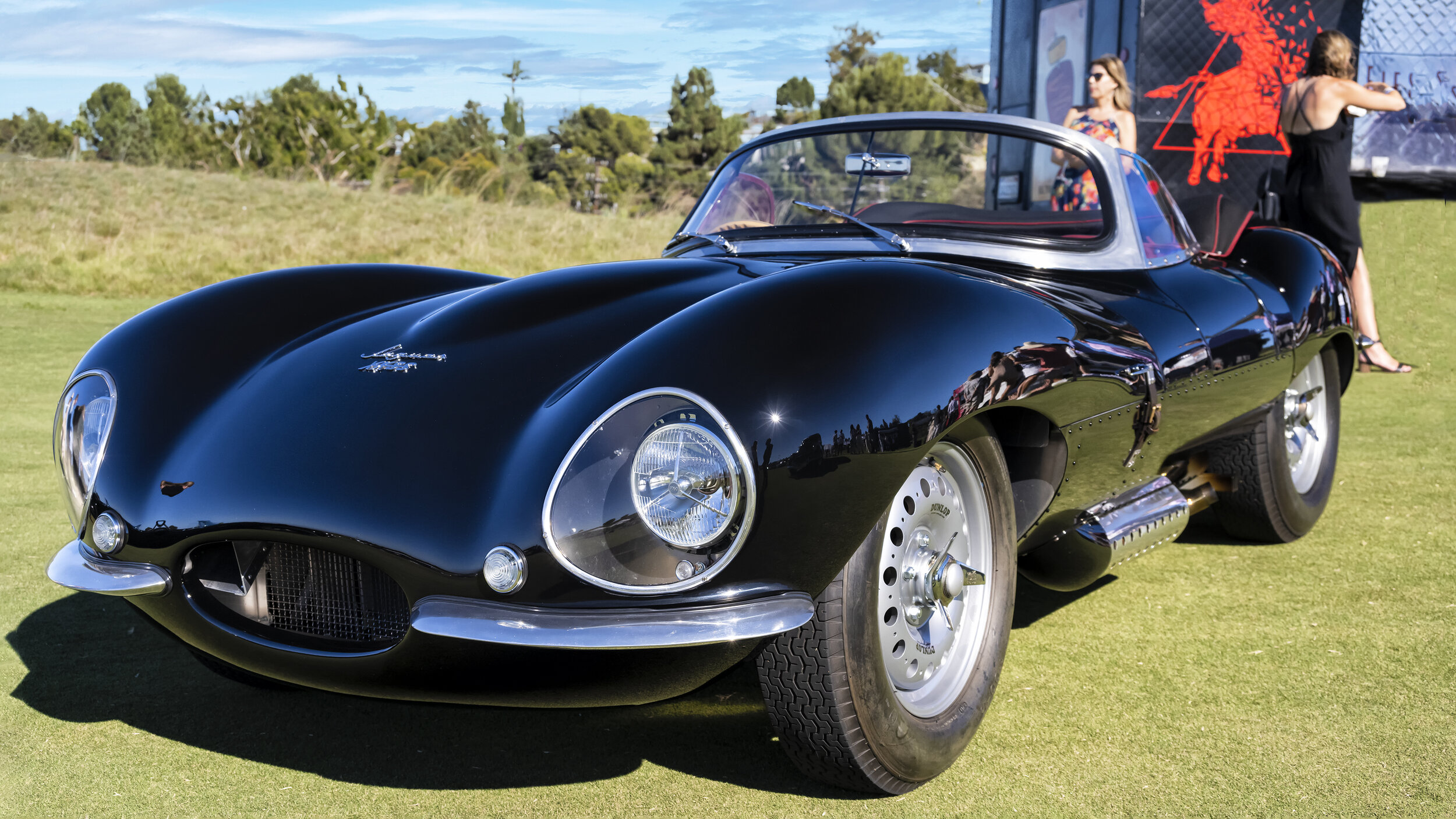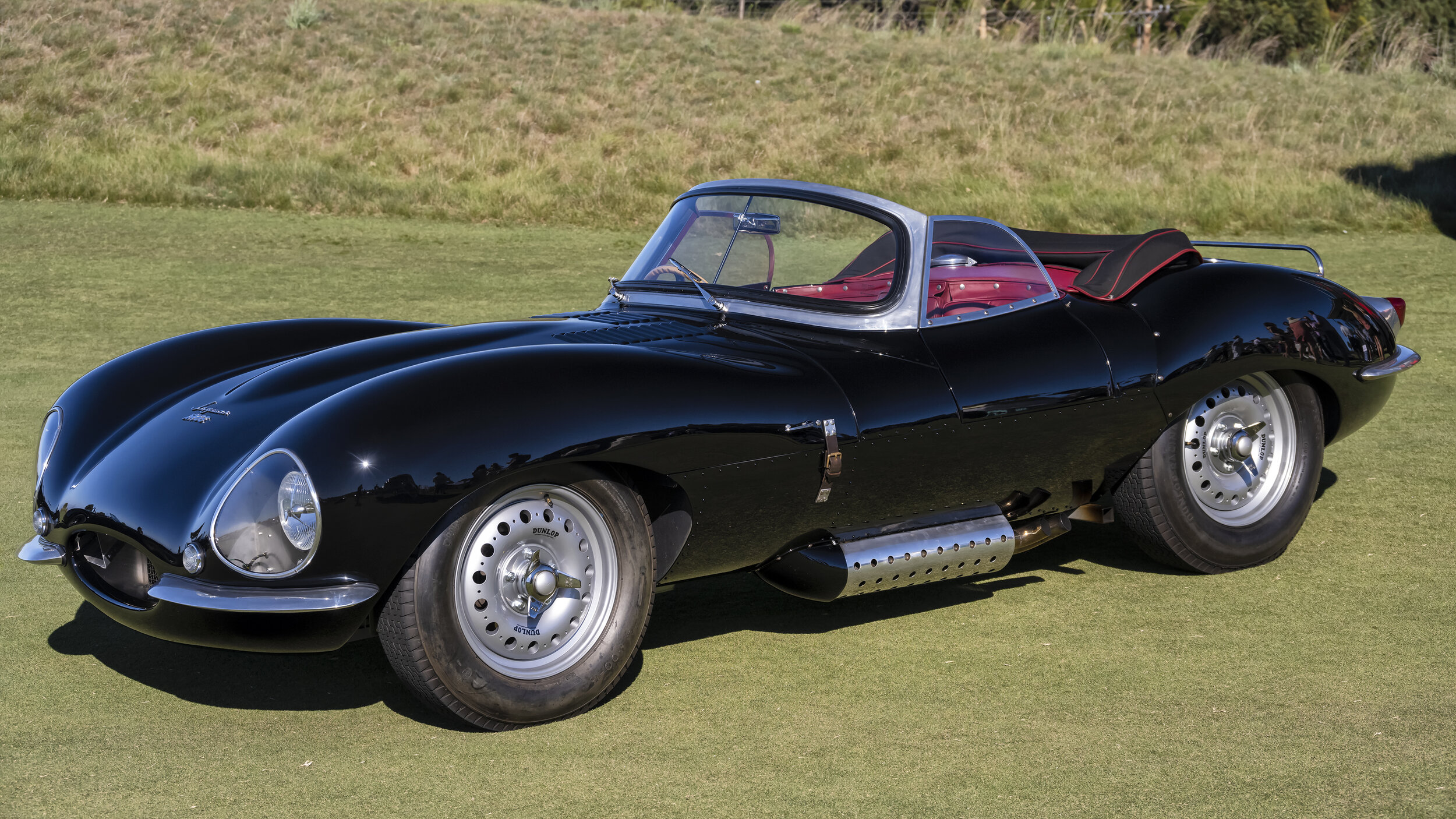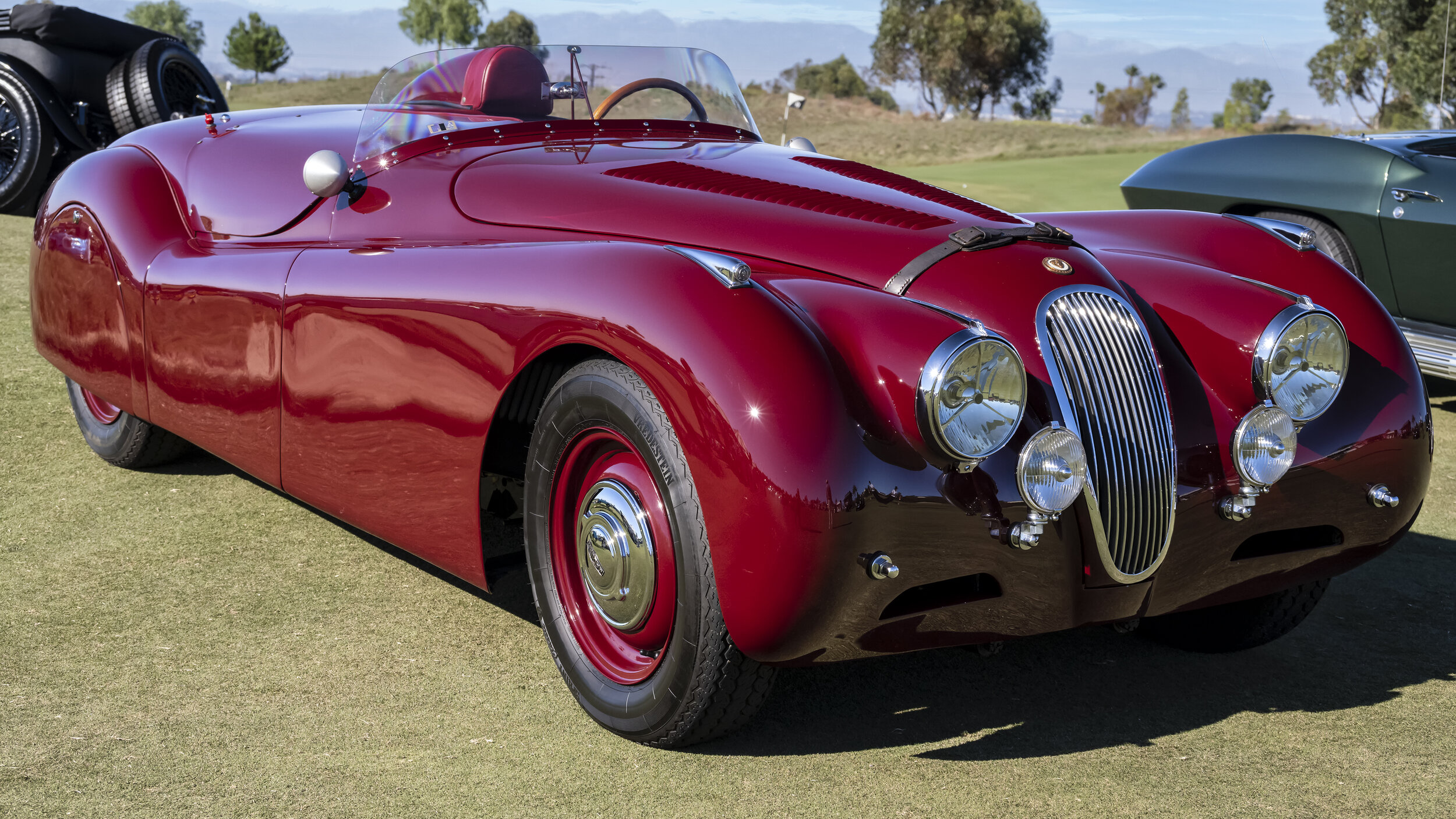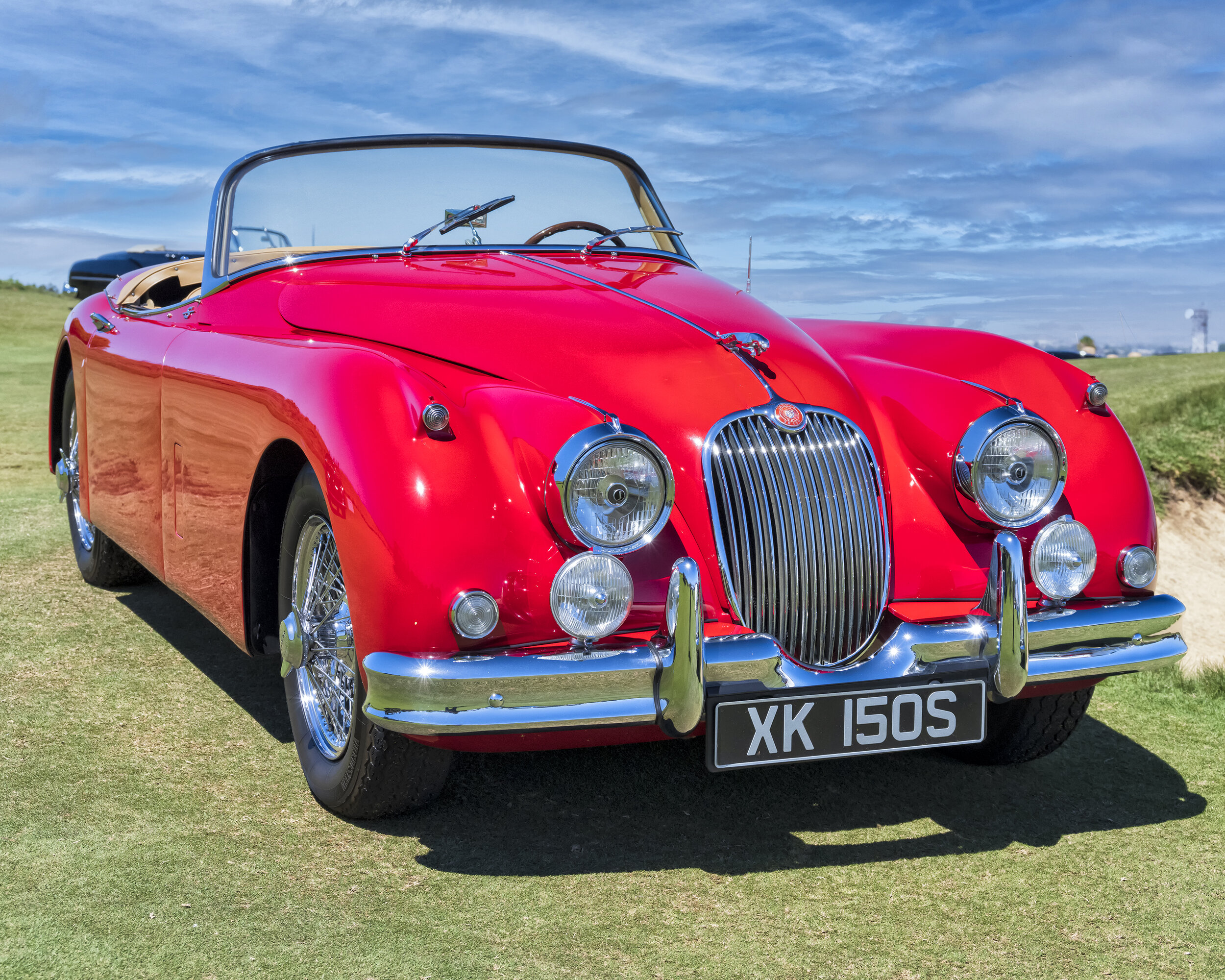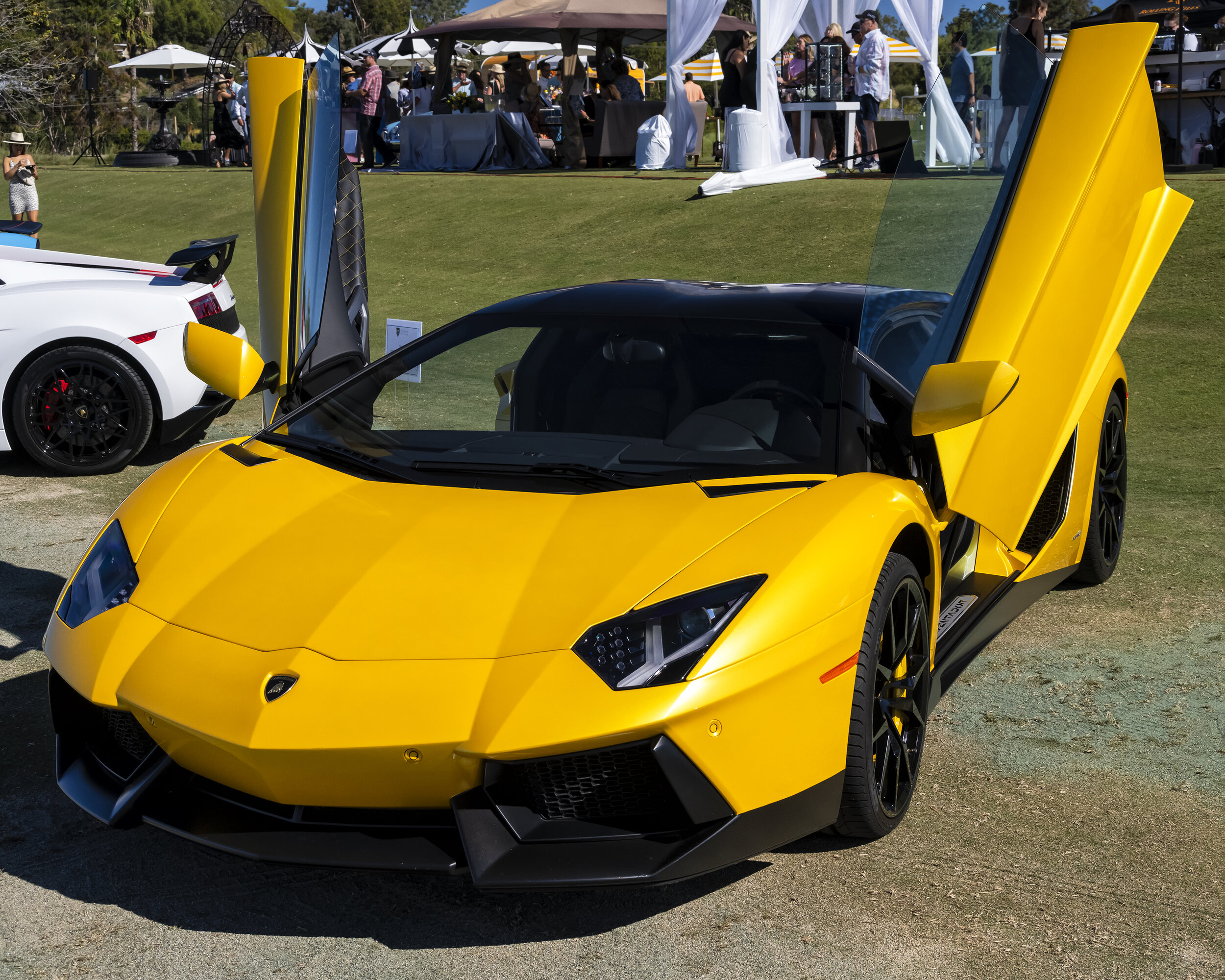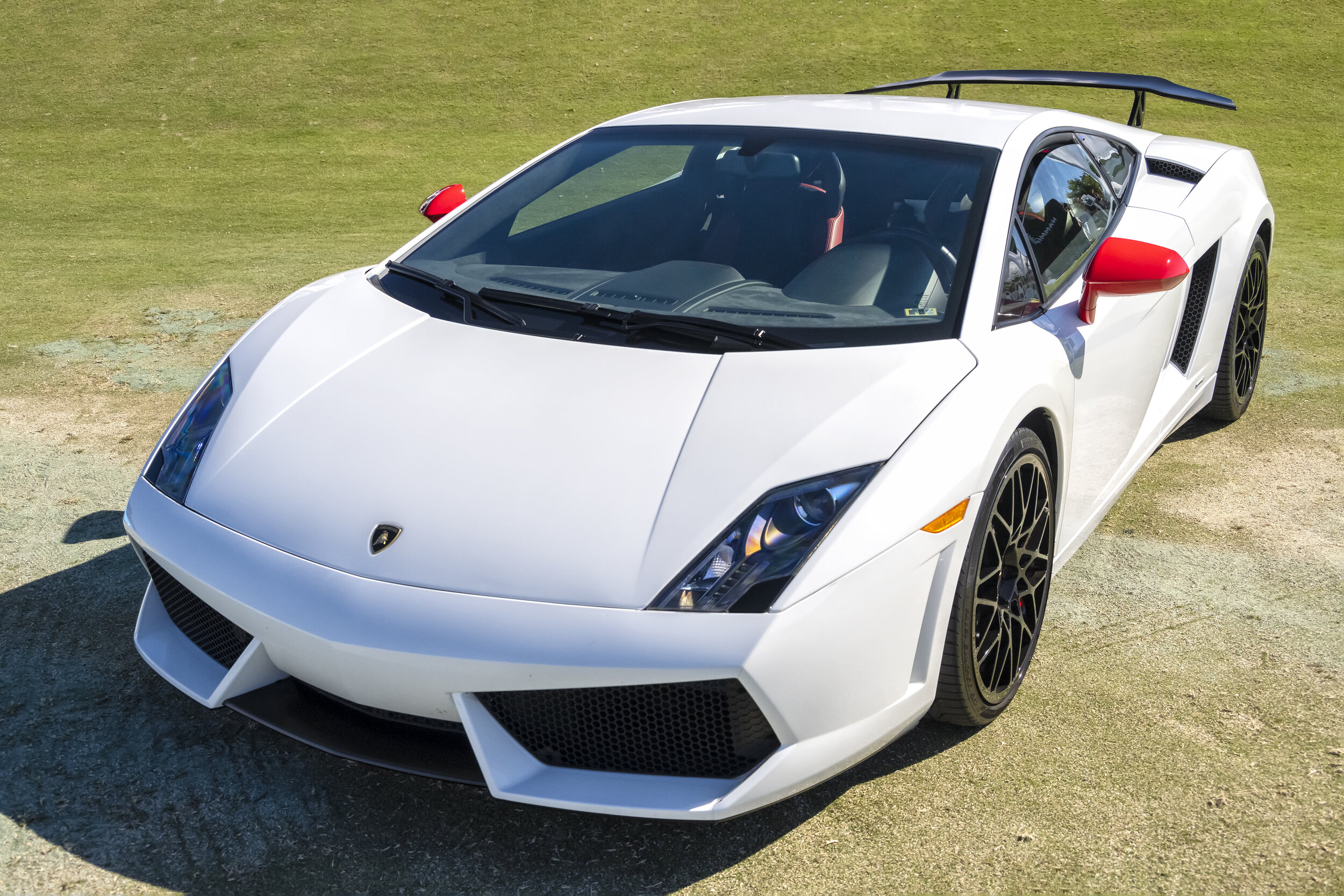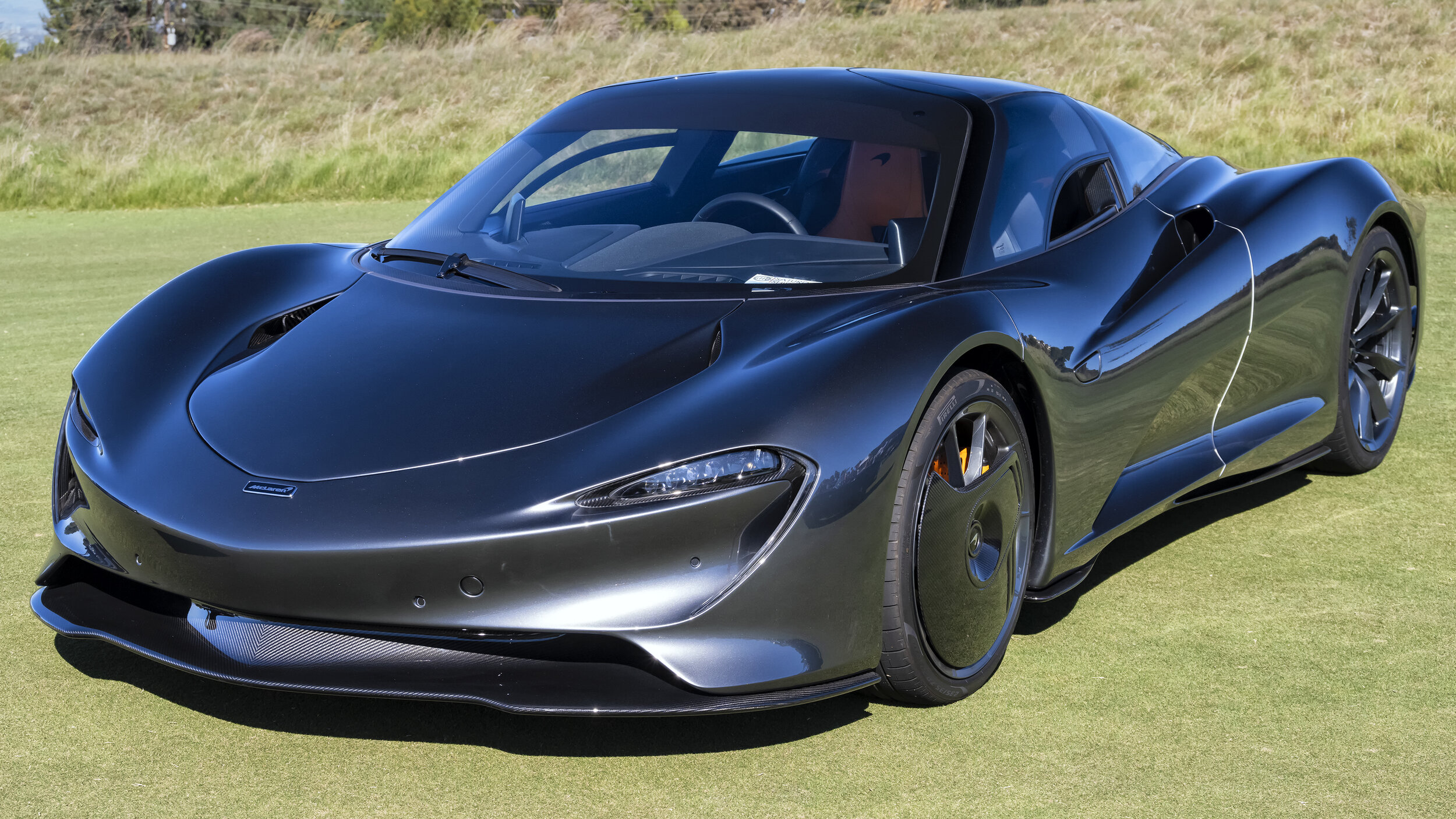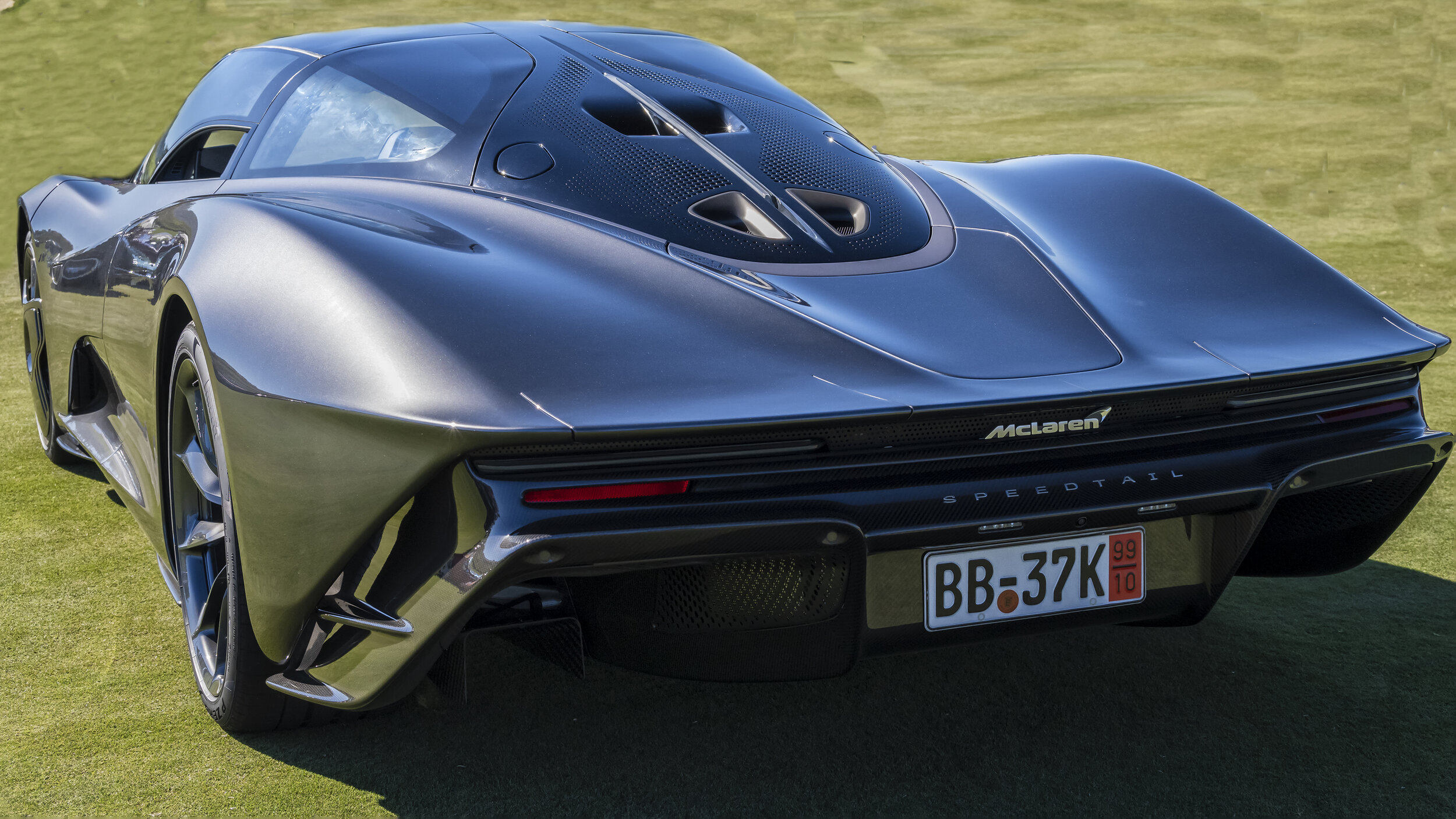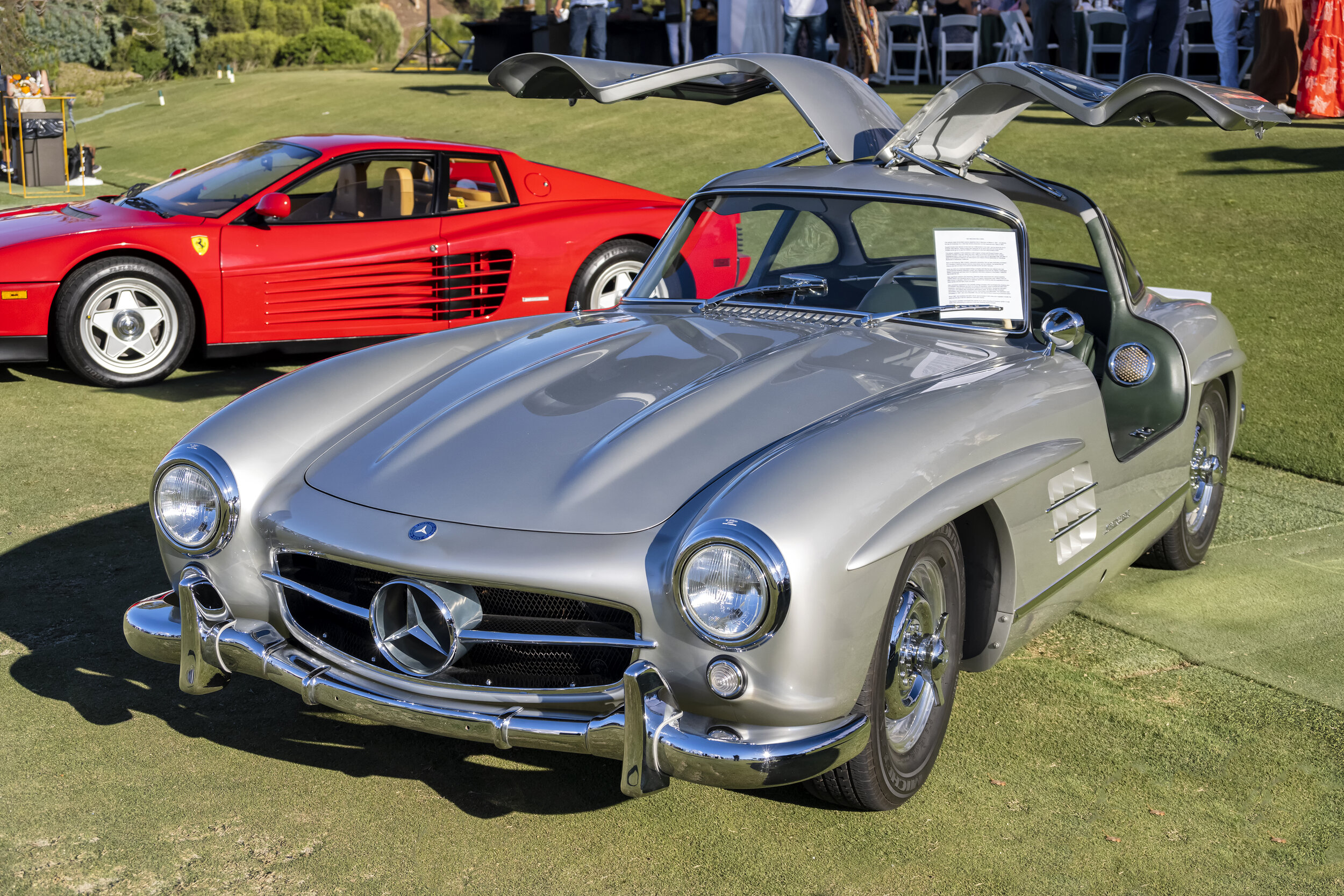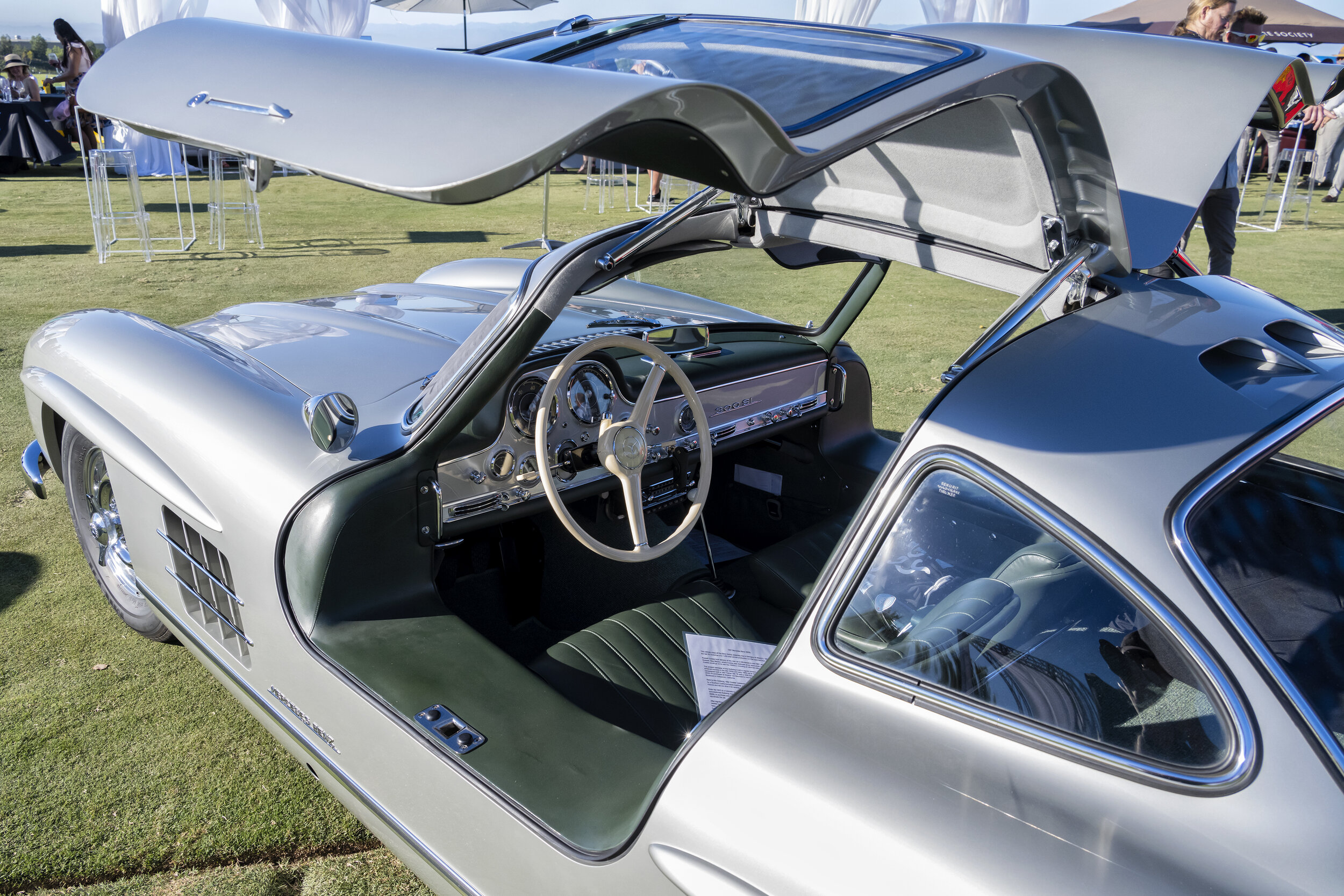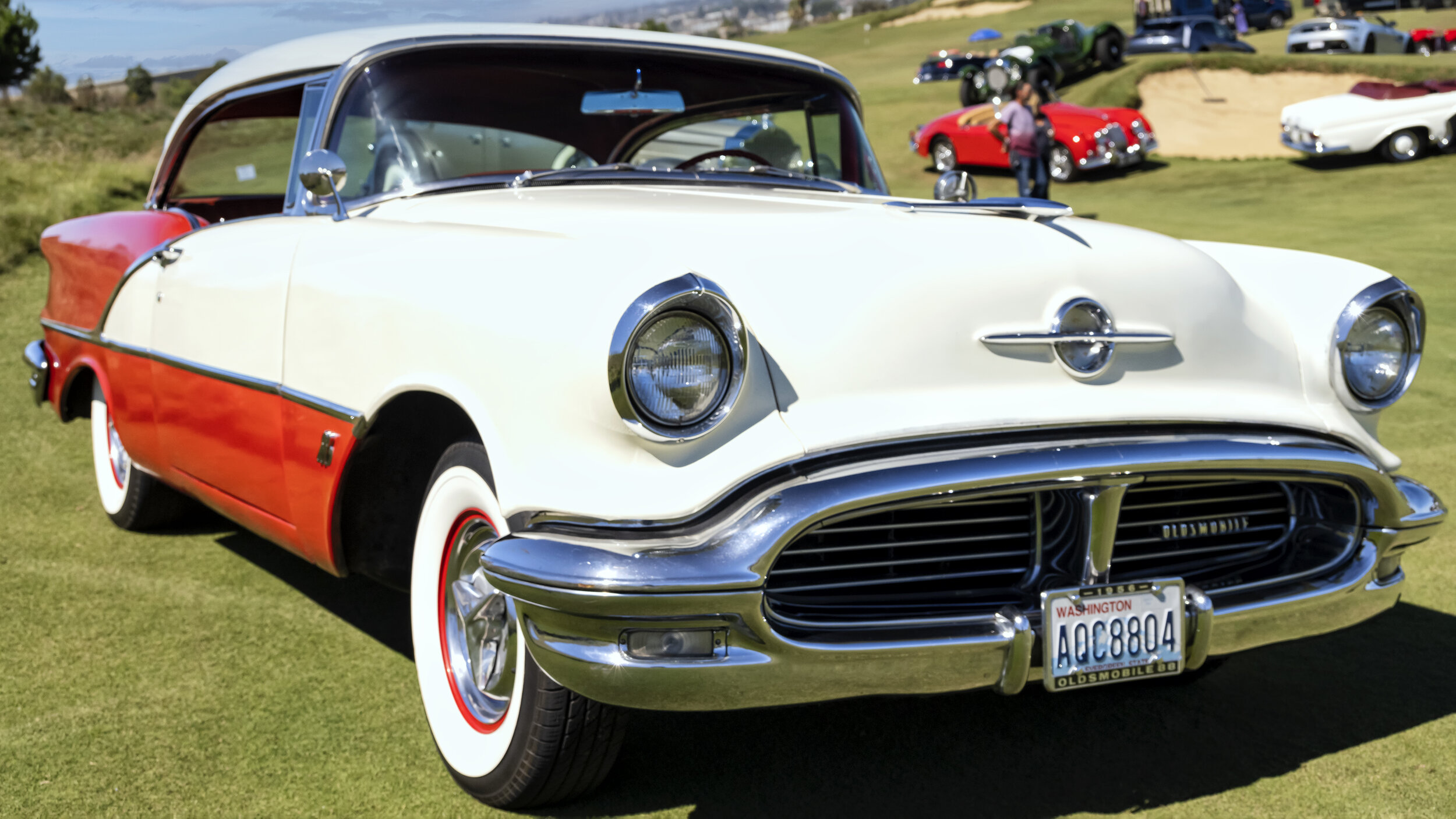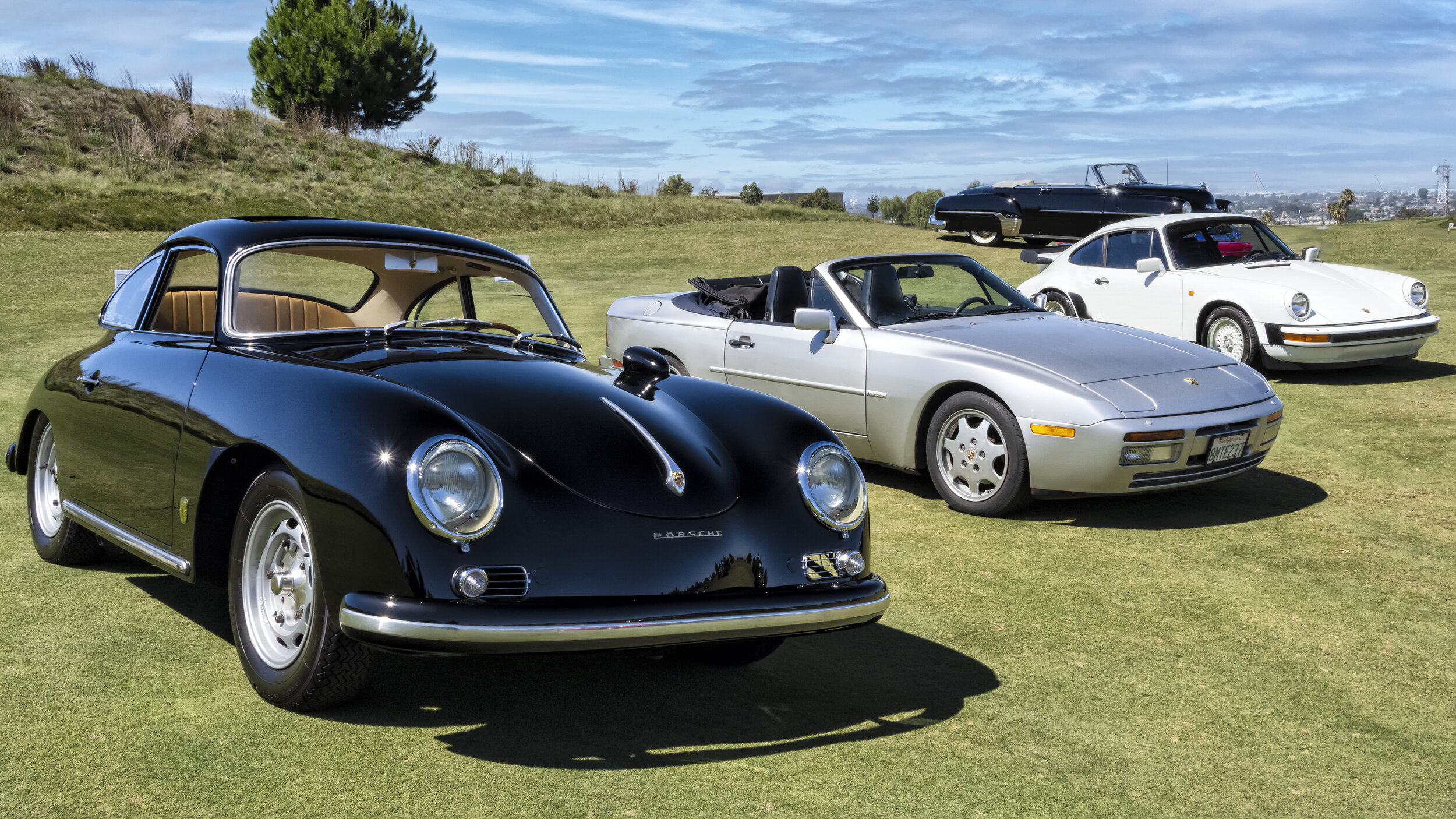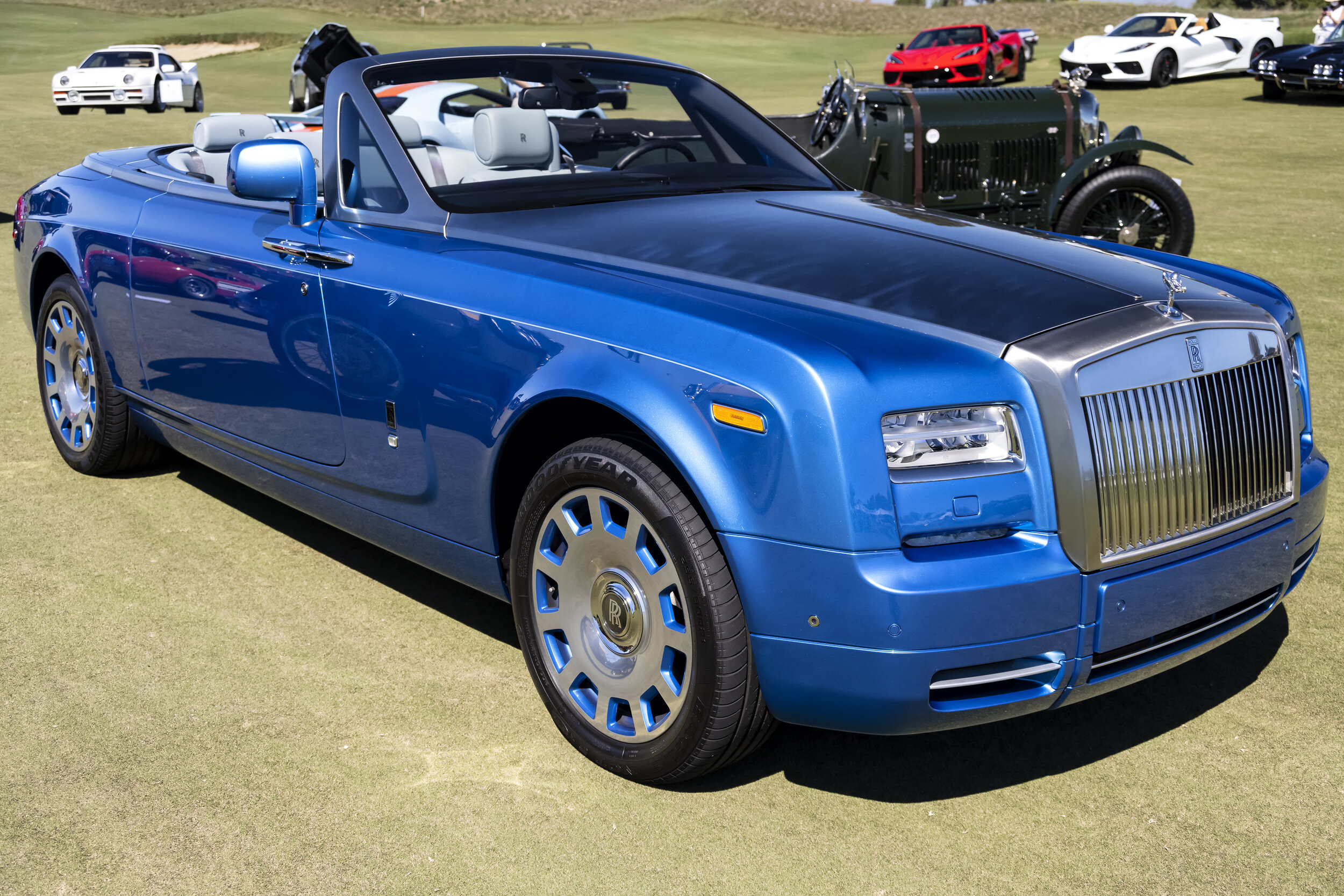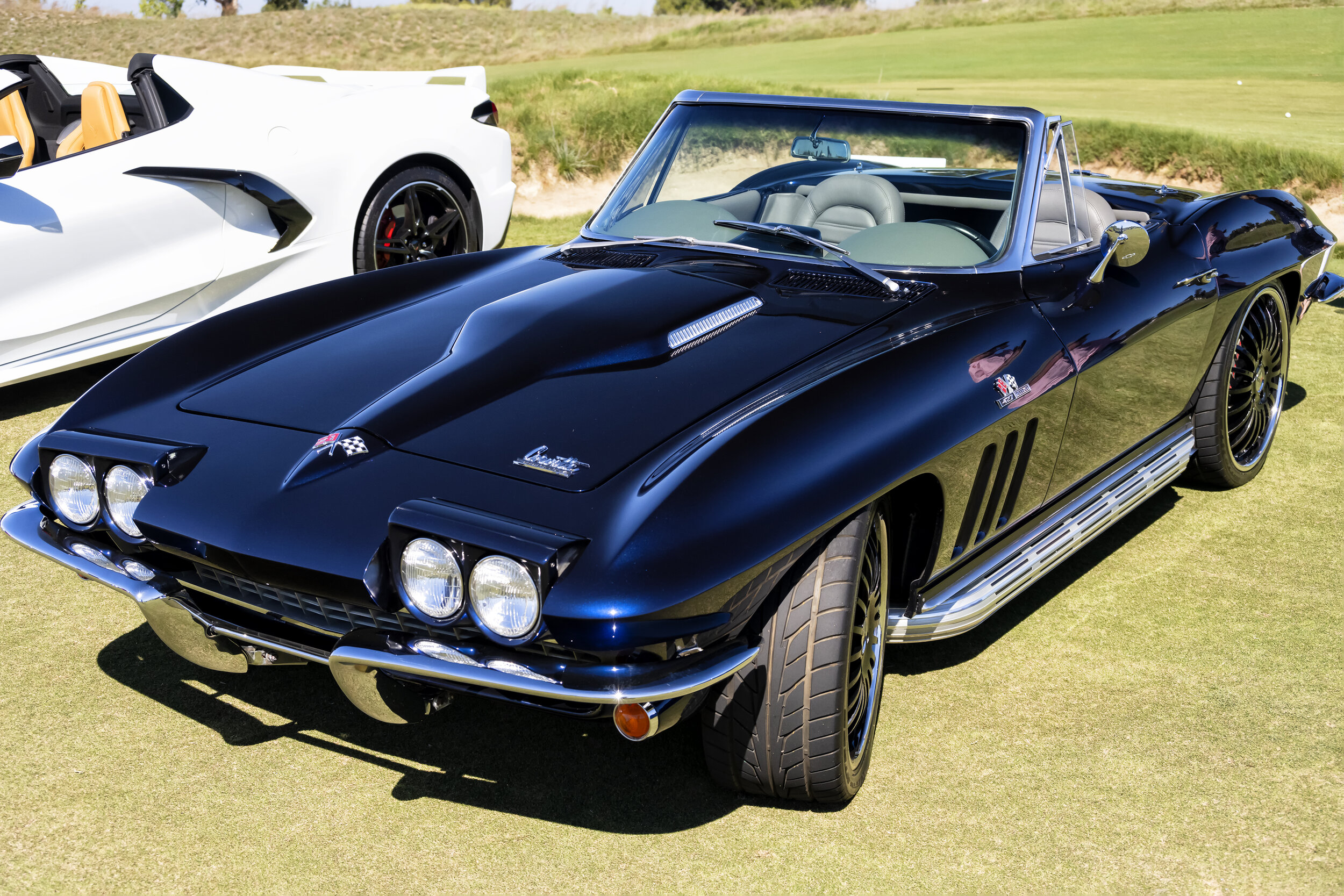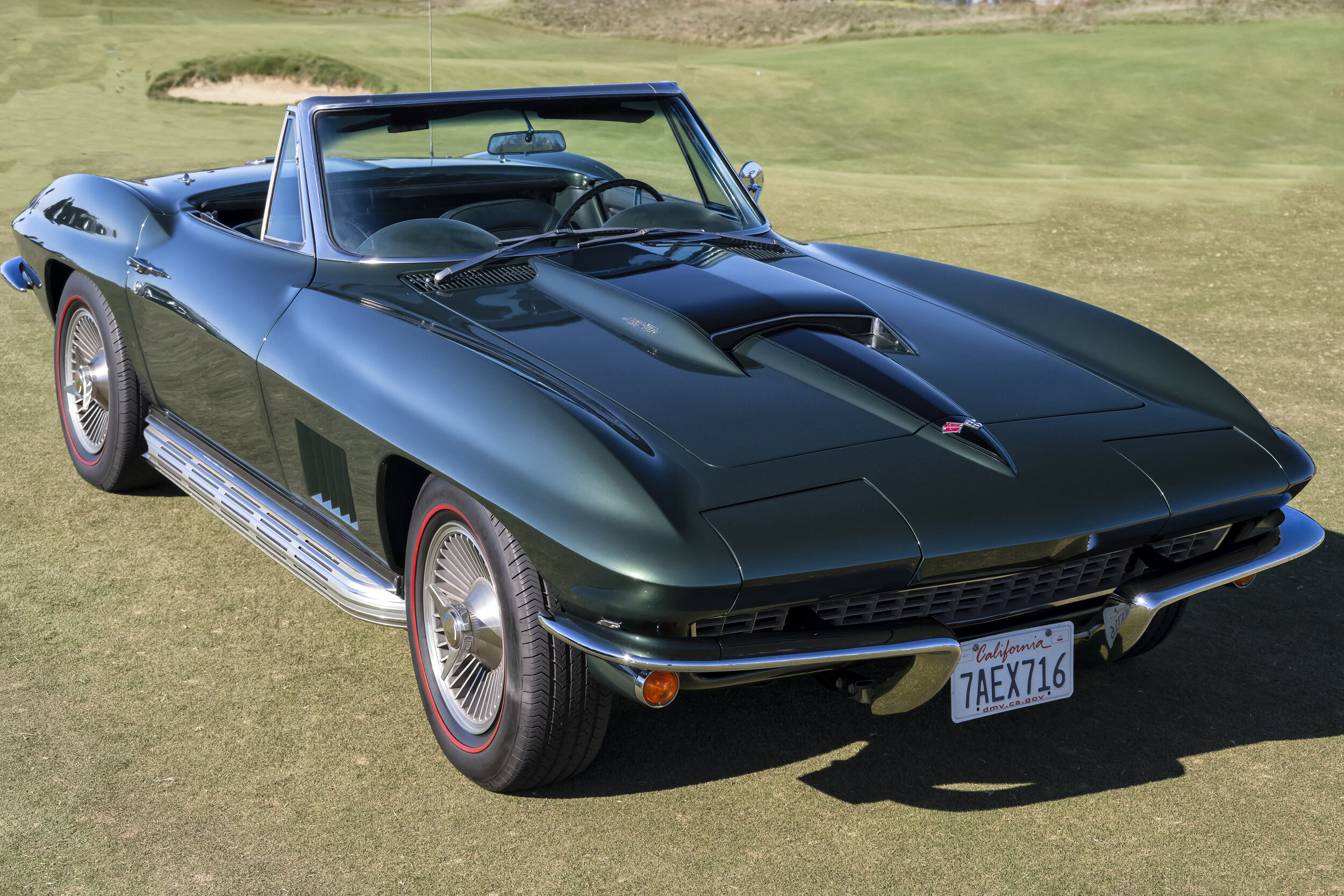A Day of Wine and Rolls (Bentley and Others Too) - The Rolling Hills Country Club Wine and Car Festival By Steve Tabor
A Day of Wine and Rolls (Bentley and Others Too)
The Rolling Hills Country Club Wine and Car Festival By Steve Tabor
Beginning with a flyover by the South Bay’s own Tiger Squadron, the Luxury Rally Club, in cooperation with the Rollings Hills Country Club, transformed the facility’s driving range into a scenic background to display over 100 classic and unique cars and provided spectators with a variety of wine and food selections as well as an opportunity to shop for luxury lifestyle items.
Jaguar
Trevor Johnson, Director and Co-founder of the Luxury Rally Club, reflects upon the event, “The amount of excitement and enjoyment from the over 600 guests in attendance was incredible to see. We had almost 100 people on the waiting list for the event, which is exciting for us to know the event can grow and will grow.”
Over 100 different types of automobiles including vintage models, sports cars, nostalgic (50’s-70’s era) vehicles, and exotics were staged across the driving range. Johnson states, “To see a car, the Alfa Romero 6C 2500 S Touring Coupe owned by Don and Max Behrens, that won Best in Class at this year’s Concourse d’Elegance at Pebble Beach was so amazing. Also, several private owners shipped their cars and drove them in from hours away and from different cities to support the Luxury Rally Club. It’s amazing!”
Attendees voted on the best of two categories: Supercar and Vintage. Craig Ekberg’s 2020 Ford GT took the supercar category and Brent James’ 1948 Oldsmobile Woodie won the Vintage category. Both winners were presented with a magnum bottle of DOAU wine.
Ford GT
James states that he purchased his 1948 Oldsmobile Woodie after seeing it in a small ad. He was originally interested in the vehicle because he is a surfer. He was able to secure the car for a good price. At the time he purchased the iconic surf vehicle, the interior of the classic was in impeccable condition. So much so, that he chose to only perform minor renovations to the interior. He states, “Thanks to the ‘grandma clear vinyl seat covers’ that were installed by the original owner, the car’s upholstery was in amazing condition.” However, the exterior required three years of restoration work. The trademark wooden side slats were completely removed and underwent extensive restoration. Once they were removed from the vehicle, it was revealed on the backside of each slat the names of the wood mills where they were originally manufactured. Instead of returning the slats to their original uniform color, James chose to leave the patina look to the wood, and he finished them with a satin protective finish.
On the other side of the driving range was a 1929 Packard Phaeton owned by Peninsula residents, Lianne and Dana Graham. Graham admits, “We were looking to buy a classic and went on online to look for candidates. An extensive searched revealed twelve plus candidates in the Midwest, and we set out on our adventure. After looking at several selections, we were pleasantly surprised when we came upon this car.” There was no doubt the car would have to undergo a tremendous renovation inside and outside, but Graham was willing to take on the challenge, “If I could get the engine just to turnover!” As luck would have it, it did, and that sealed the deal.
Graham had the car shipped to California and began the restoration process. Although the car’s original updraft carburetor, not a common feature in today’s automobiles, required rebuilding, he was delighted with the find because it is essential to the car’s performance. Additionally, the vehicle’s original motor required a complete rebuild, but eventually the process was completed. The car’s electrical system was completely renovated. For brakes, Graham spotted an ad on eBay by a gentleman living in Grand Junction, CO who was advertising original Packard parts. According to him, his recently deceased uncle acquired a large supply of Packard parts. The gentleman said a box was labeled as brakes for the 1929 Packard. Skeptical they would work, Graham took the chance and had them sent to California. Graham was delighted when he received the parts and verified that they would fit his car and set about installing them. One of the most interesting pieces on the vehicle, Graham located online. Through his searches he found an original Packard trunk that fits on the back of the vehicle. Although many vehicles of this time-period featured exterior trunks, this version is slightly bigger than the others and is difficult to locate. Happily, when the car was painted in 1993 it was done in the original pewter over gunmetal paint scheme.
Graham drives the car on a regular basis but admits it can be challenging driving a car that weighs 5,800 lbs. and its 106-horsepower motor was manufactured to run on 60 octane gasoline. Even with a fuel additive to 87 octane gas, it does not completely resolve vapor lock that can be caused by the premature burning of the current 87 octane fuel during long periods of idling. So, Graham is cautious about participating in community parades and chooses to either run the car on roadways or show it in static displays.
One interesting feature of the car is that it has a set of rotating vanes that control airflow to the radiator. The stone cover in front of the louvers is designed to stop stones and other road debris from damaging it.
Some of the recent vehicle models on display may spark a more personal memory for spectators. Such is the case of the 1958 Chevrolet Convertible Impala. Co-owners Kurt Gunderlock and Alex Daniels have owned the car for over 30 years. Gunderlock and Daniels were drawn to the vehicle because of its uniqueness. Gunderlock insists, “Many people are drawn to the ’57 Chevys. But this car has a classic look including the Continental Tire, the exterior rear mounted spare tire. This car is meant to be driven, and we drive it frequently!” In closing, Gunderlock confesses the license plate is a subtle nod to their favorite libation.
Shannon and John Corsaro inherited the 1970 Oldsmobile Cutlass from John’s father, Don, this past October. John states, “We were a family of six, mom, Dorothy, and dad along with their three daughters and me. My parents discussed buying the newest Oldsmobile station wagon and settled on what mom wanted. Dad went to the dealership ready to make the purchase and he noticed the Cutlass slowly rotating on a turntable. Mom was quite surprised when dad came home with a two-door sporty rag top with a white interior. As it turned out, with two rows of bench seats, we all fit.”
Don had the car professionally restored years ago. The engine was rebuilt, the interior was redone, and the exterior completely repainted. John says, “Dad kept it in immaculate condition since then. I hope to keep it up as well as he did!”
John admits, “It’s a happy car. It literally makes people happy when it passes by. It is especially satisfying when young people who weren’t around when this car first hit the road appreciate its lasting beauty. One guy in his twenties put his hand over his heart as he watched us drive off and yelled, ‘Beautiful!’. These are works of arts!”
In closing John admits, “We drive the car about once a week. Our youngest daughter was the most excited about inheriting the car. Our older daughter asked for lessons on how to drive an old car. It’s always nice to have a vehicle that began its life in your family and remains to this day! Not a lot of people can say that!”
Guido Rietdyk’s 1938 Lagonda V12 LeMans body is a classic early race car. Rietdyk was originally drawn to the car because of its looks and history. W.O. Bentley originally designed its V12 motor to win the very demanding 24 hours of LeMans race. In 1935 he accomplished the goal, but only three race cars were built.
Rietdyk’s 1938 version was originally produced as a 4-seat open tourer, but in the early 2000’s it was shortened to its 2-seat race configuration. The 200-horsepower engine officially traveled 100 miles in less than one hour. This speedster was rebuilt in 2003 and has only been driven 2,000 miles since that time.
Rietdyk purchased the vehicle last October during a Bonhams Goodwood auction that took place in England. He never saw the vehicle prior to purchasing the car, but was assured by Bonhams it was “everything as advertised” so he moved forward with his bid and secured the vehicle. After purchasing the car, they needed to officially petition the Queen of England to remove the historical artifact from Great Britain. Rietdyk admits, “Eventually, the car reached California, and I immediately drove it to my hanger at the Zamperini Field in Torrance.”
Johnson attributes the success of the event to its planning and layout. Johnson states, “I believe that it is crucial and important that having different options and fun activities makes it an event that is not just a car-based event.”
The entertainment concourse positioned on a small bluff above the display of automobiles featured displays of Hammitt Handbags, Concierge Diamonds and Jewelry, designer sunglasses by Leisure Society, and DOAU wines along with hot and cold food selections prepared by the Rolling Hills Country Club catering staff. Finally, visitors were treated to formal and relaxed sitting arrangements along with music in each location.
Johnson exclaims, “We are extremely excited to be growing this event and making it an annual festival. We have not confirmed the date for next year’s event, but we believe it will be very close to the same weekend. We are blown away with the amount of support and enthusiasm from everyone involved in the event. We certainly want to thank our sponsors, the Rolling Hills Country Club, and their amazing members. We are honored to have this partnership with them and their exceptional venue.”
Palos Verdes Pulse Team - Liz Musil (L), Steve Tabor , Lianne LaReine (R)
Steve Tabor
Steve Tabor Bio
This South Bay native’s photographic journey began after receiving his first 35mm film camera upon earning his Bachelor of Arts degree. Steve began with photographing coastal landscapes and marine life. As a classroom teacher he used photography to share the world and his experiences with his students. Steve has expanded his photographic talents to include portraits and group photography, special event photography as well as live performance and athletics. Steve serves as a volunteer ranger for the Catalina Island Conservancy and uses this opportunity to document the flora and fauna of the island’s interior as well as photograph special events and activities.
Watch for Steve Tabor Images on the worldwide web.
Related Articles



